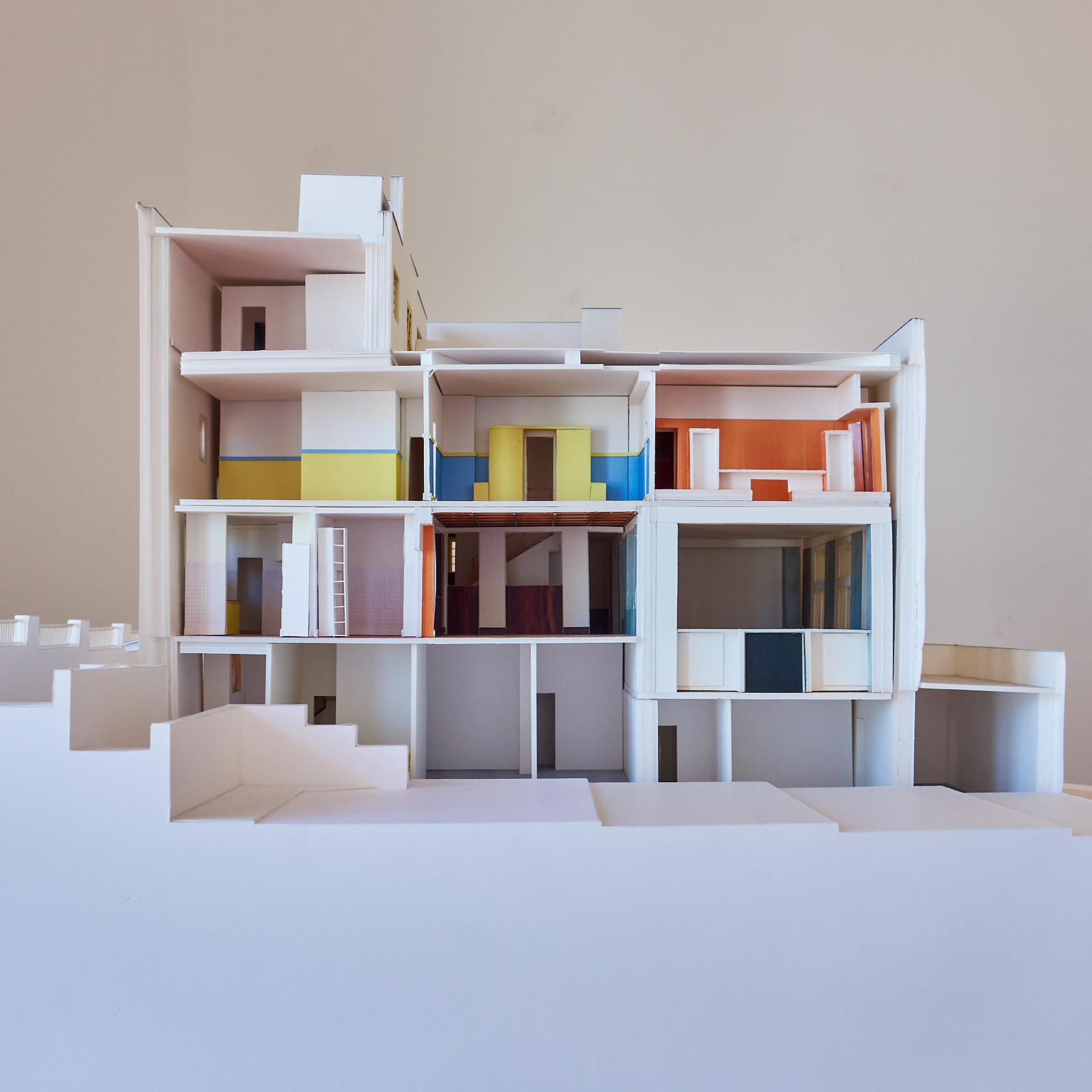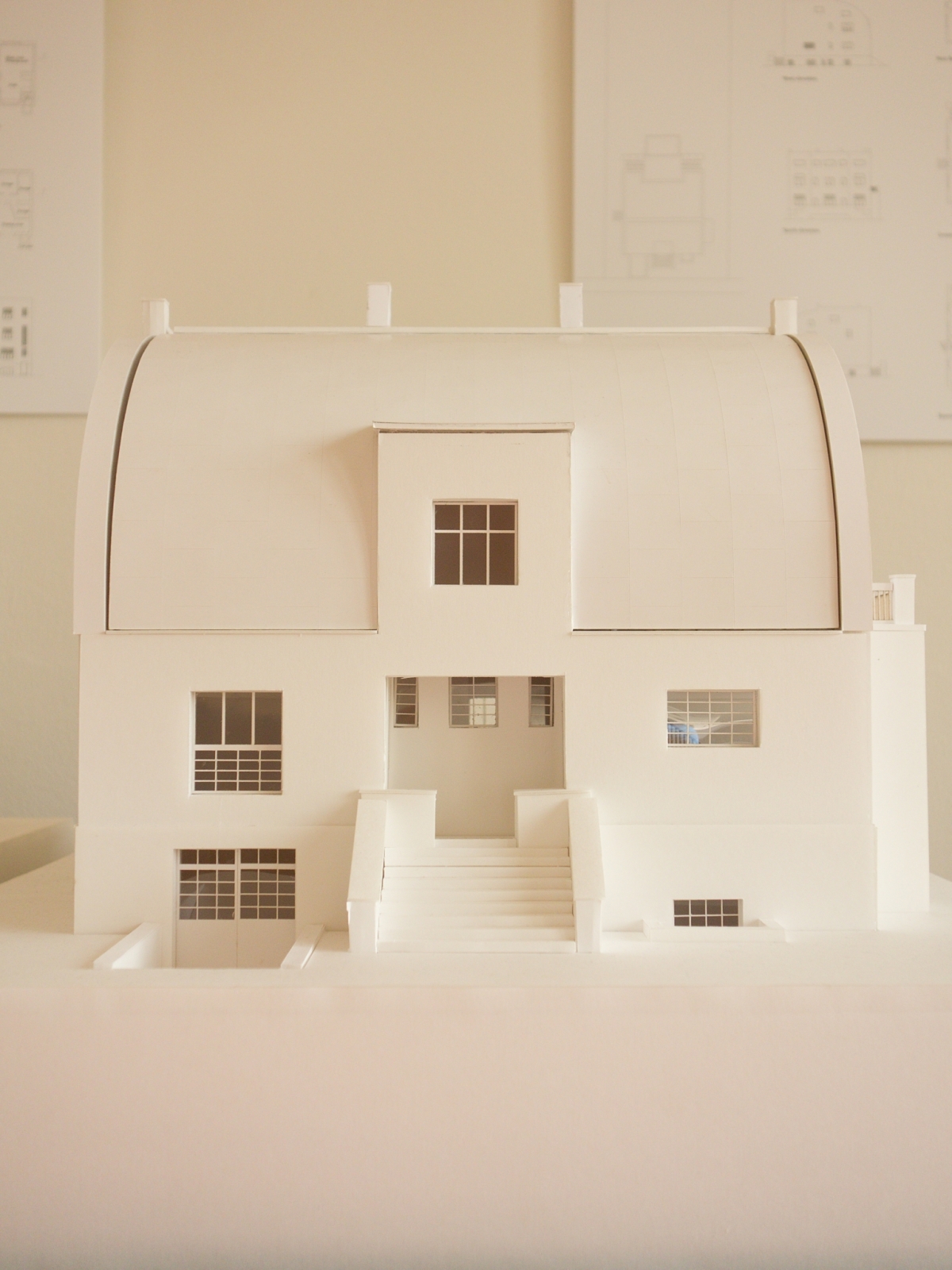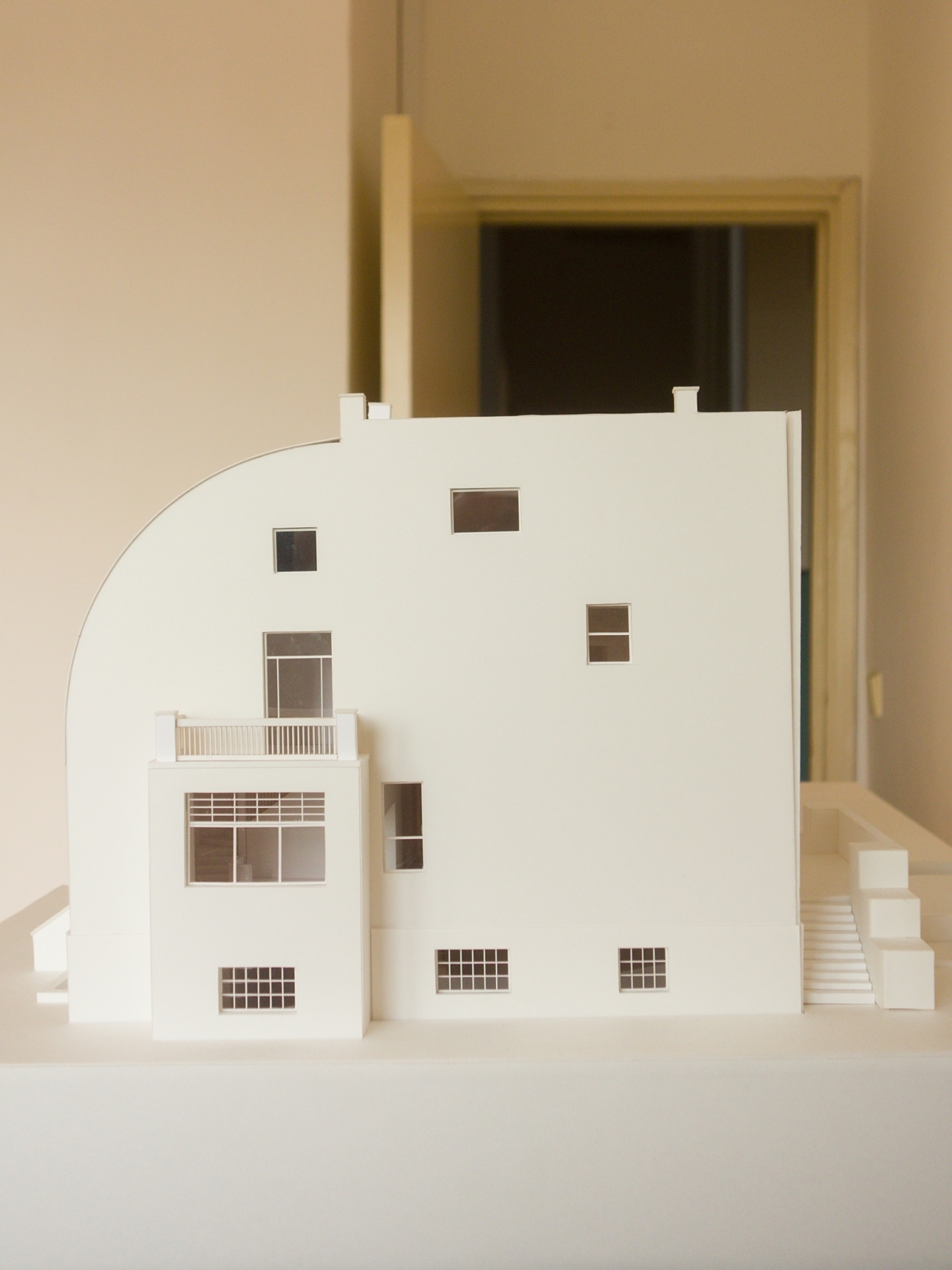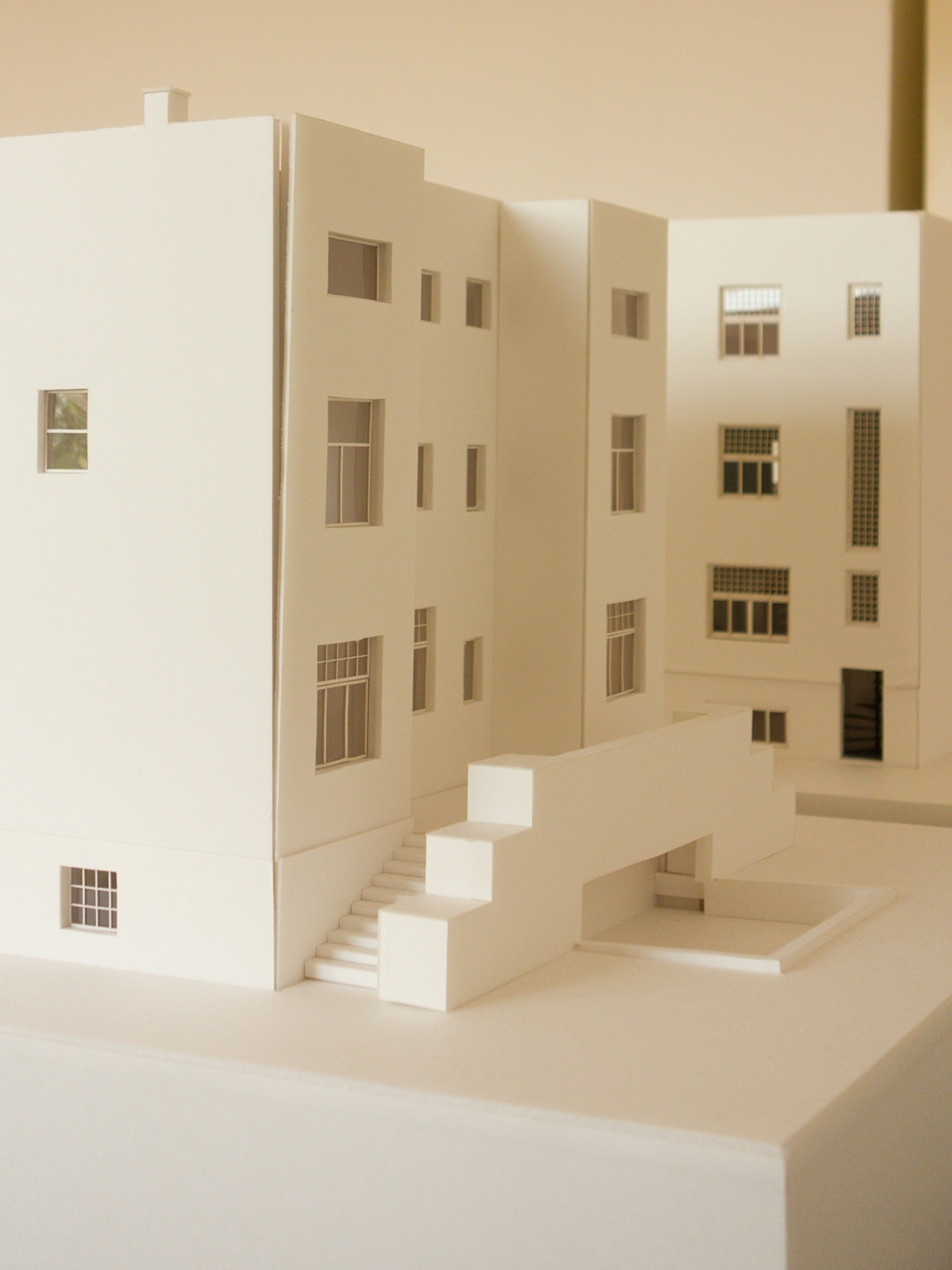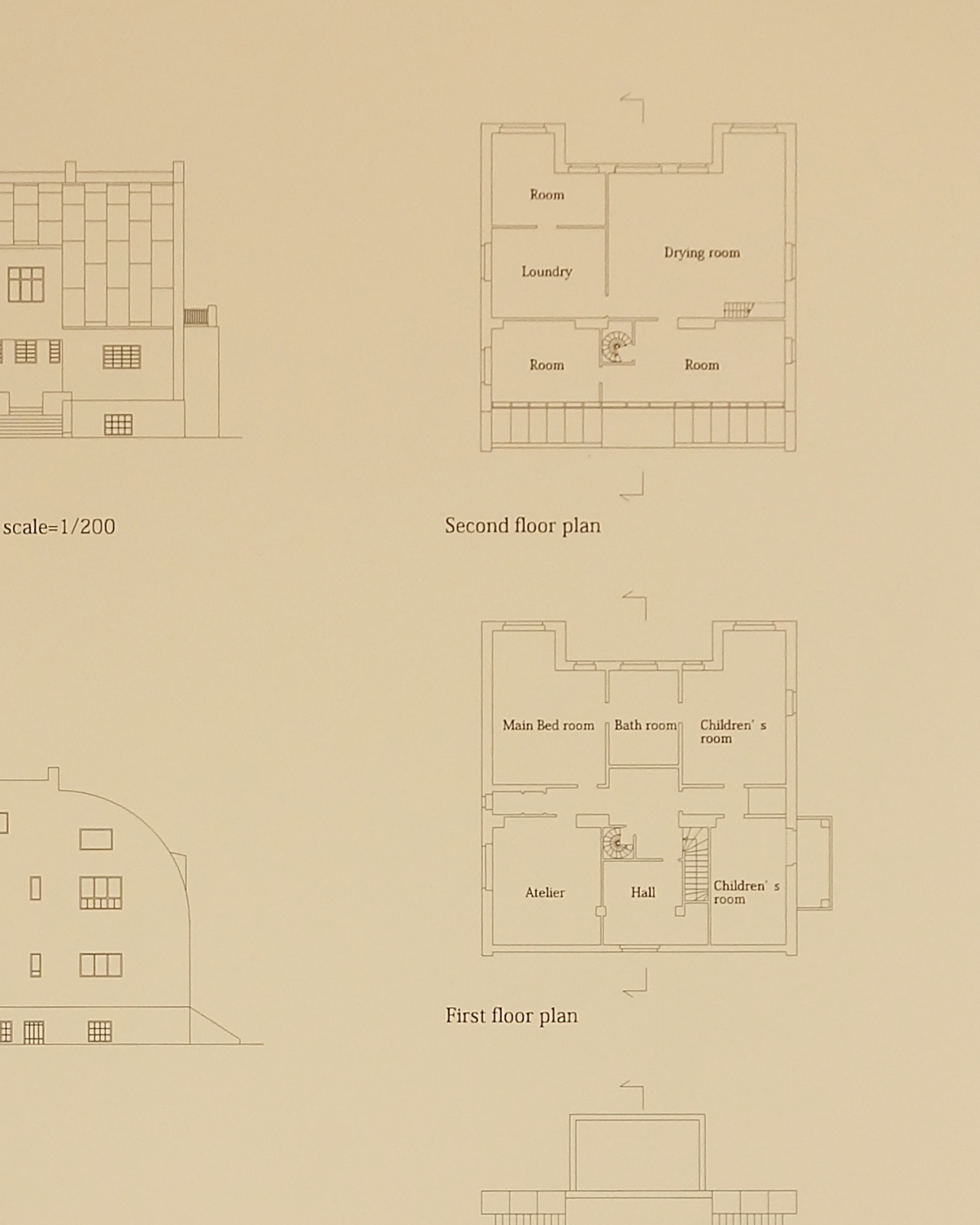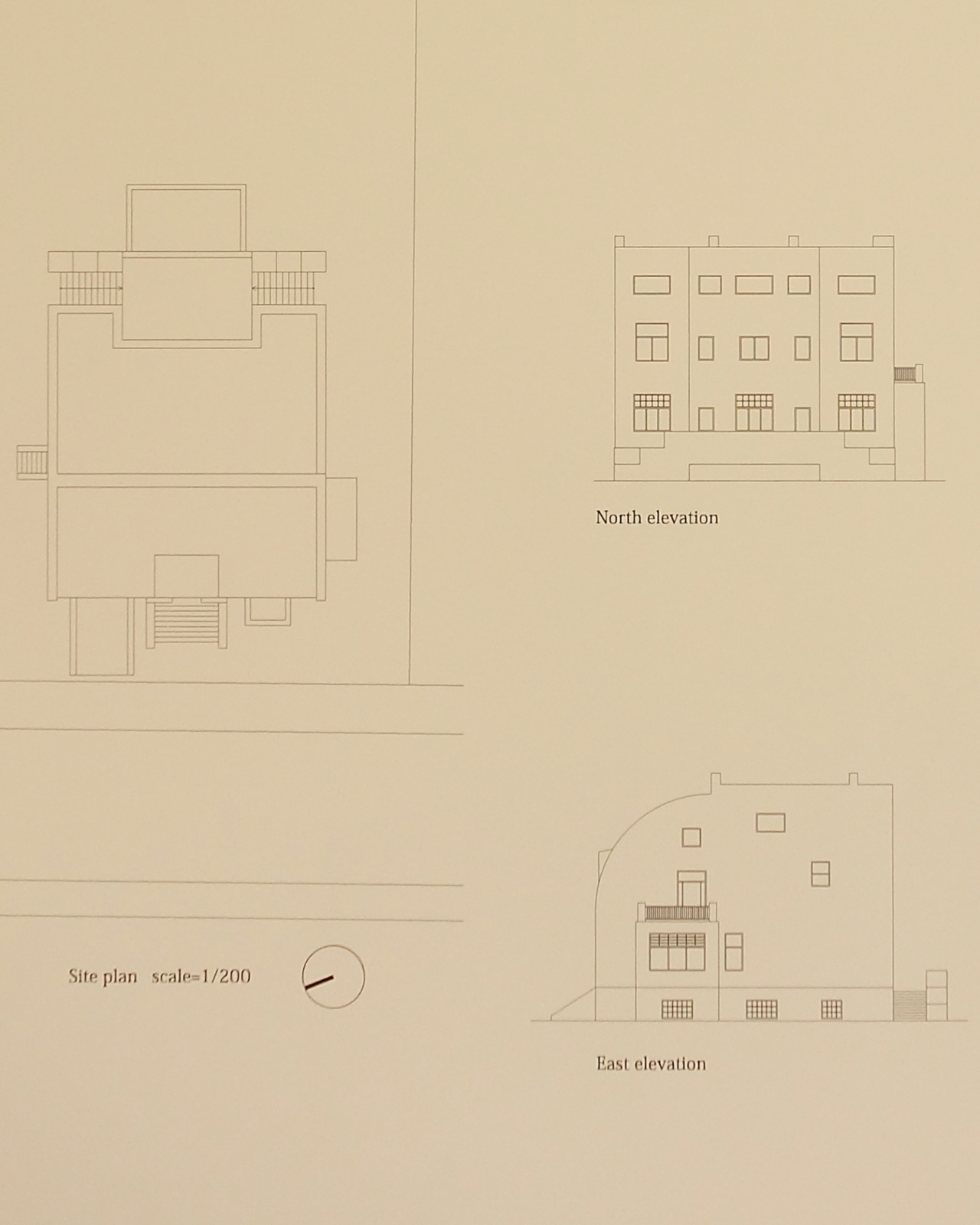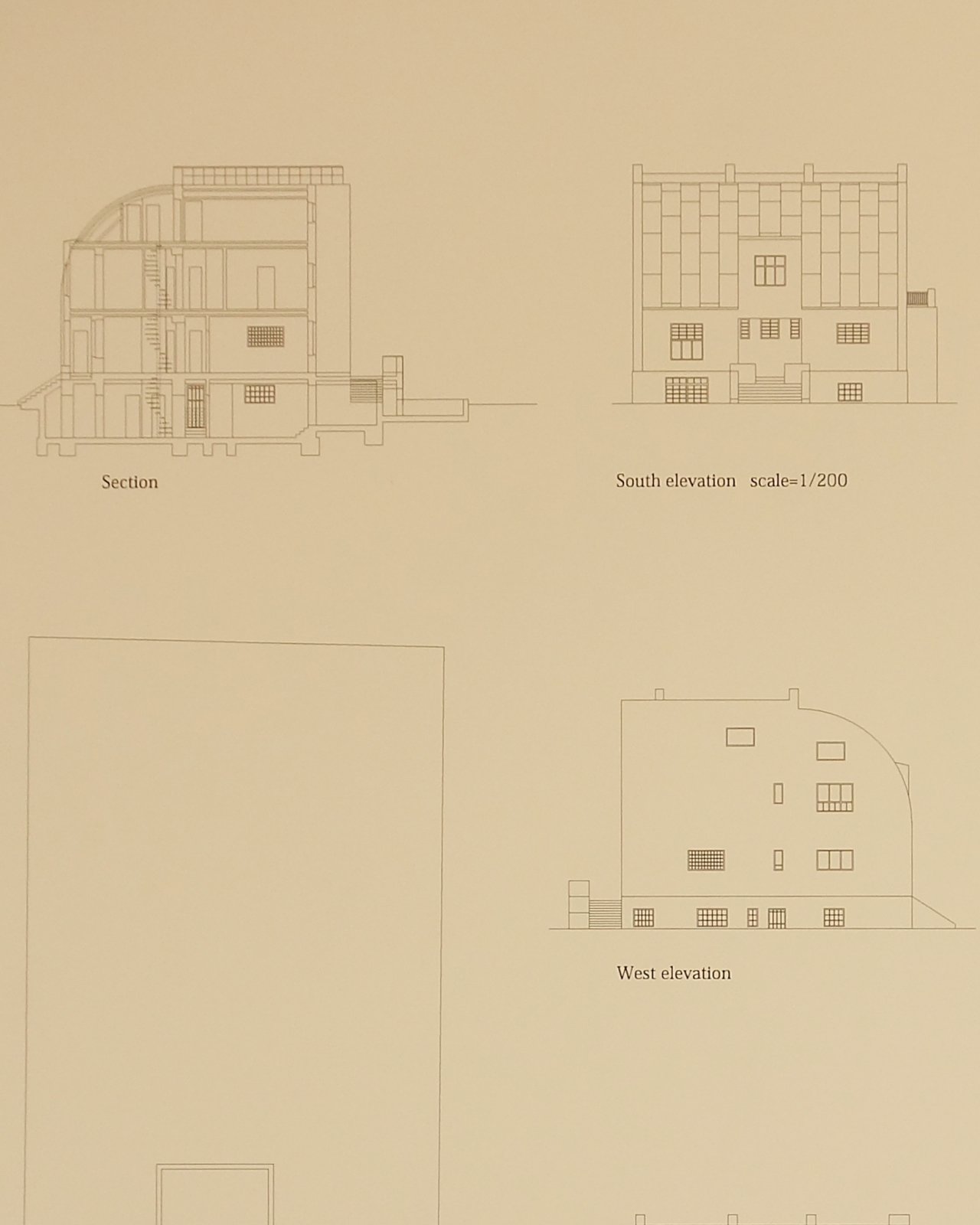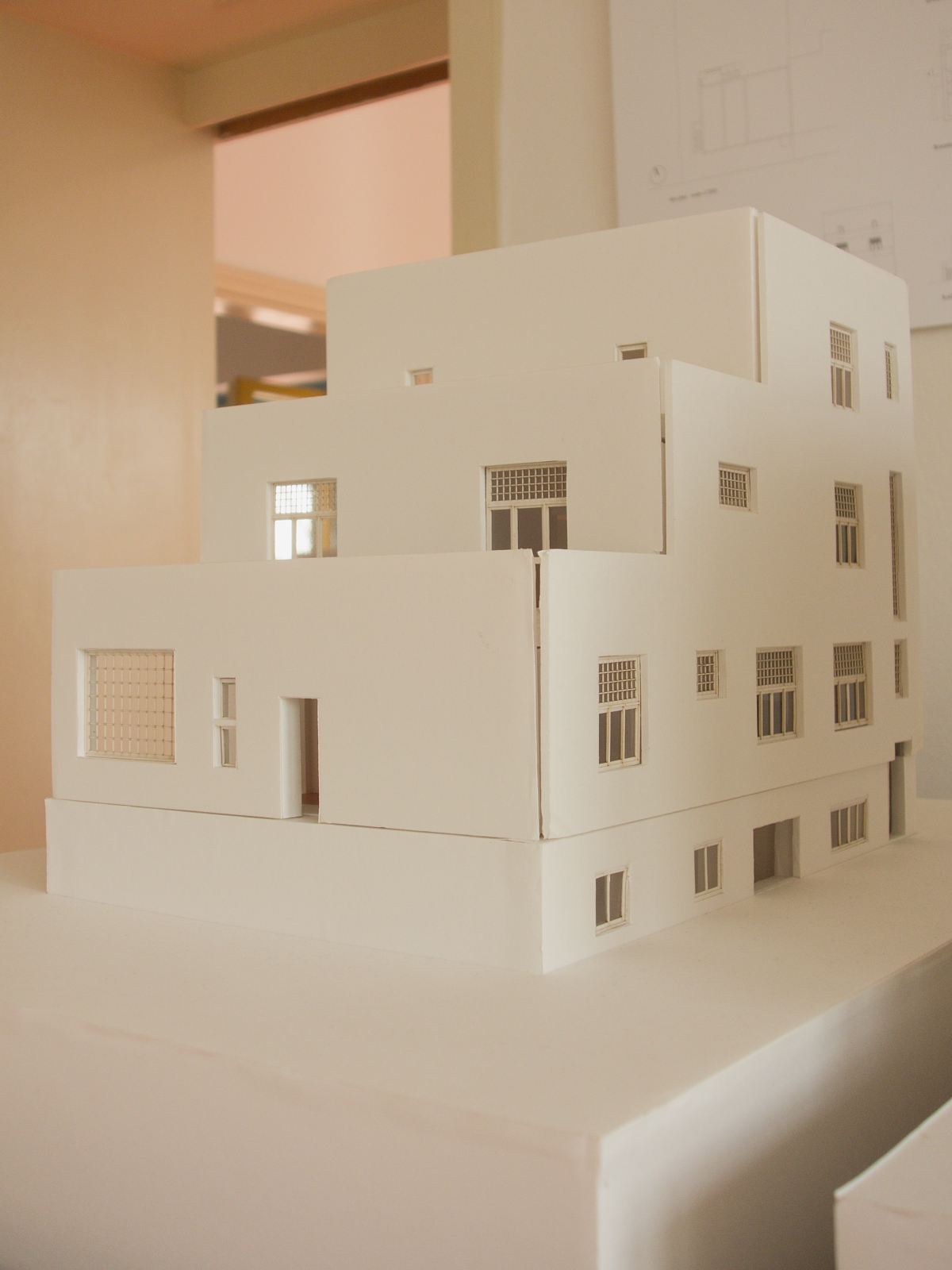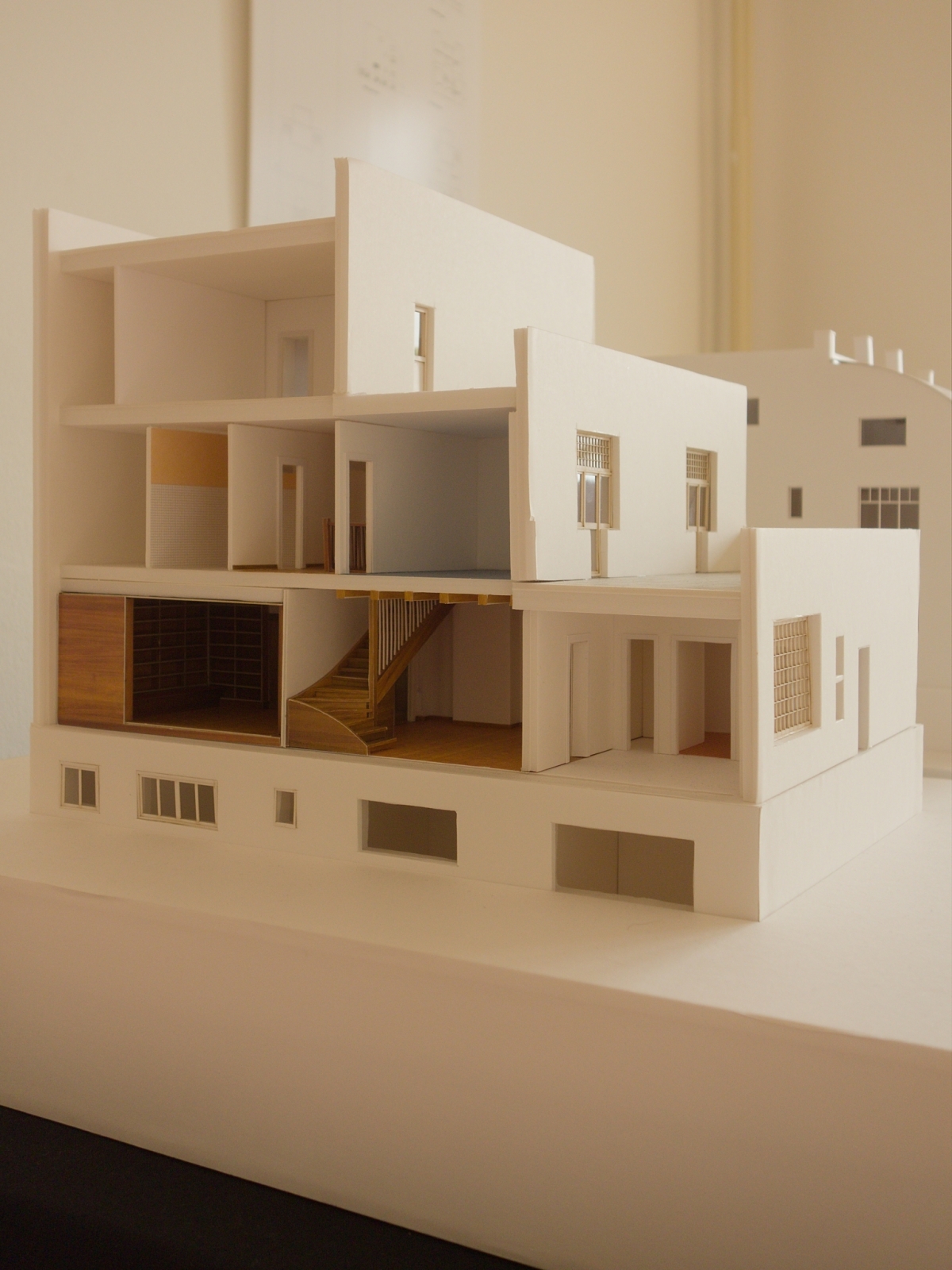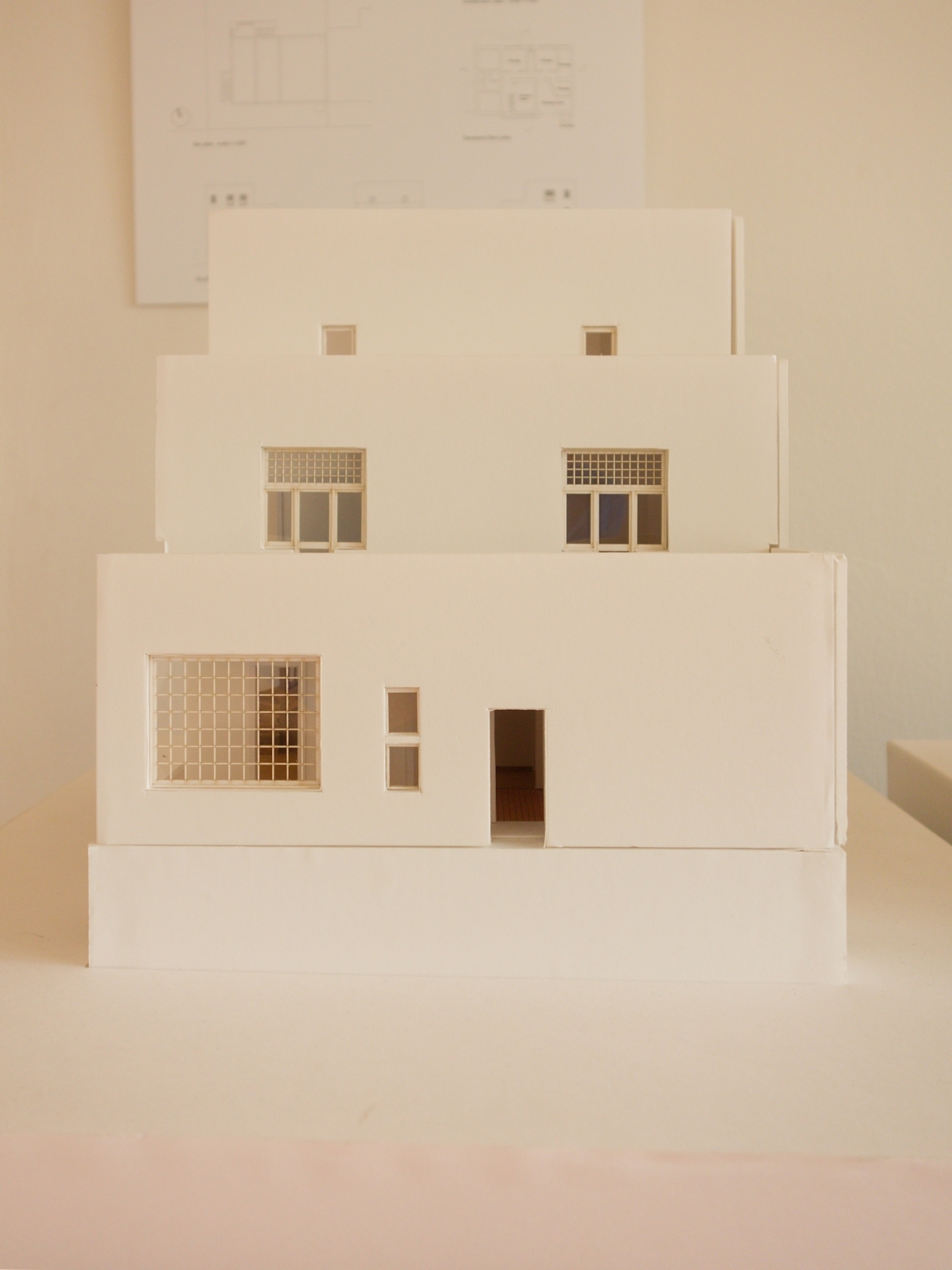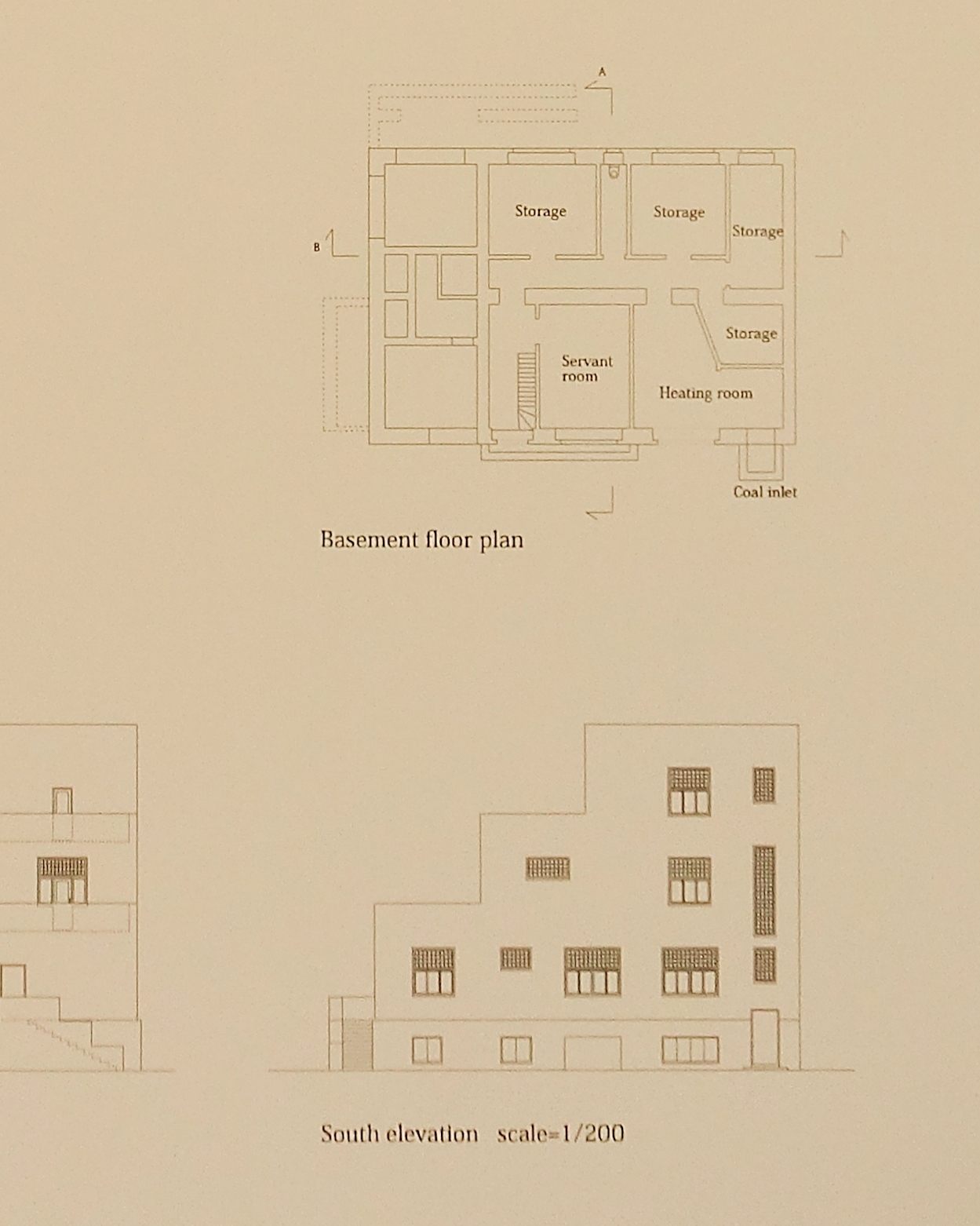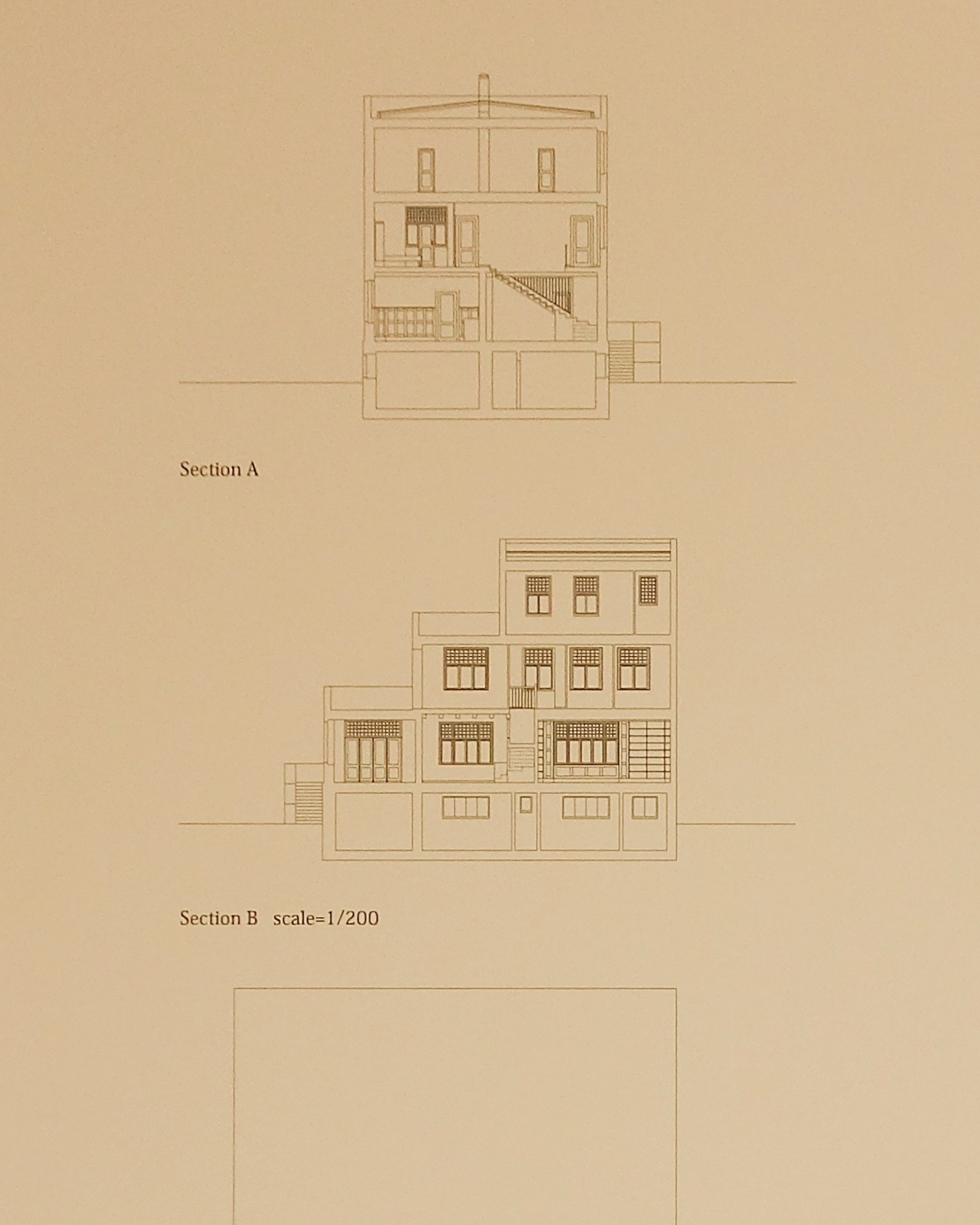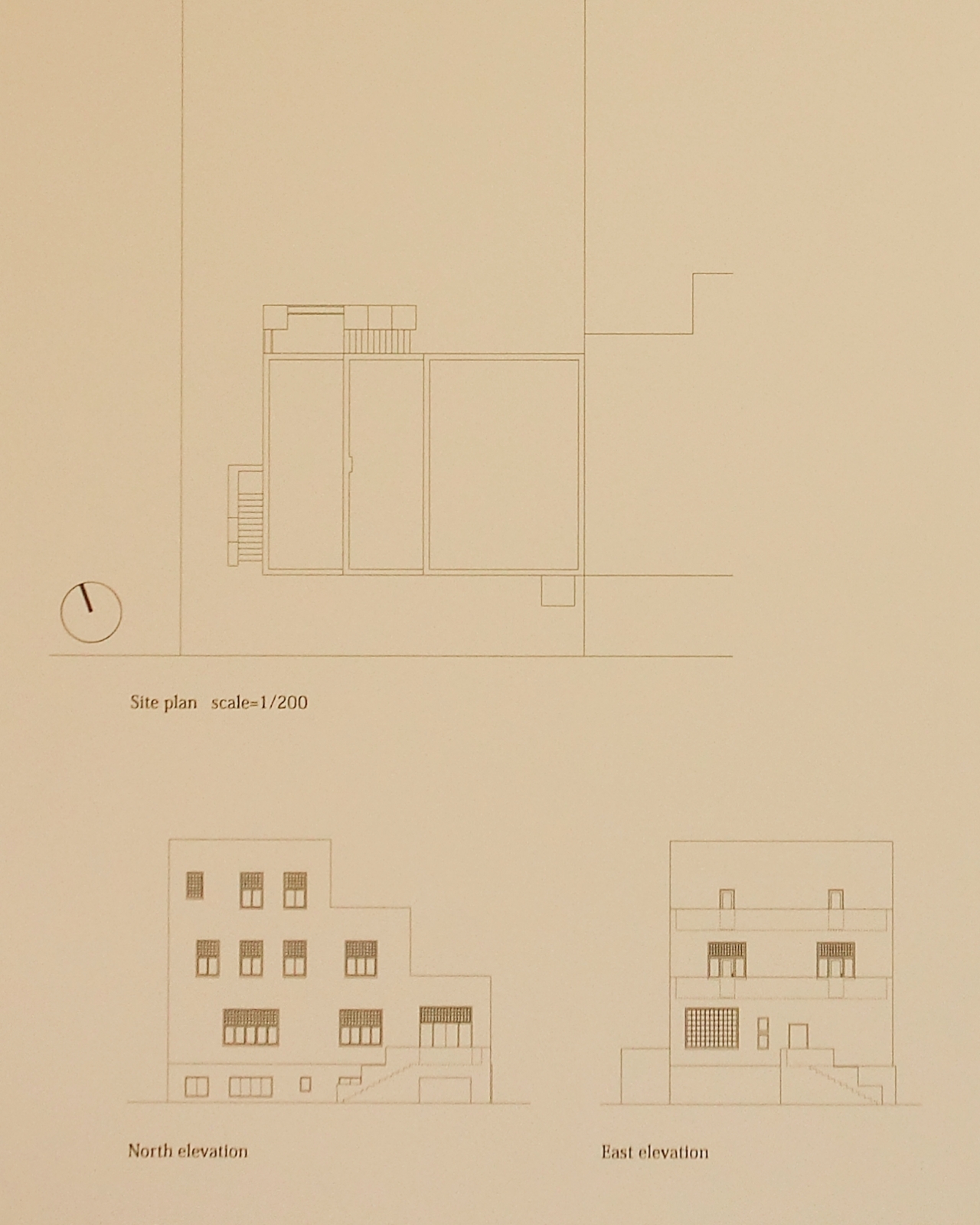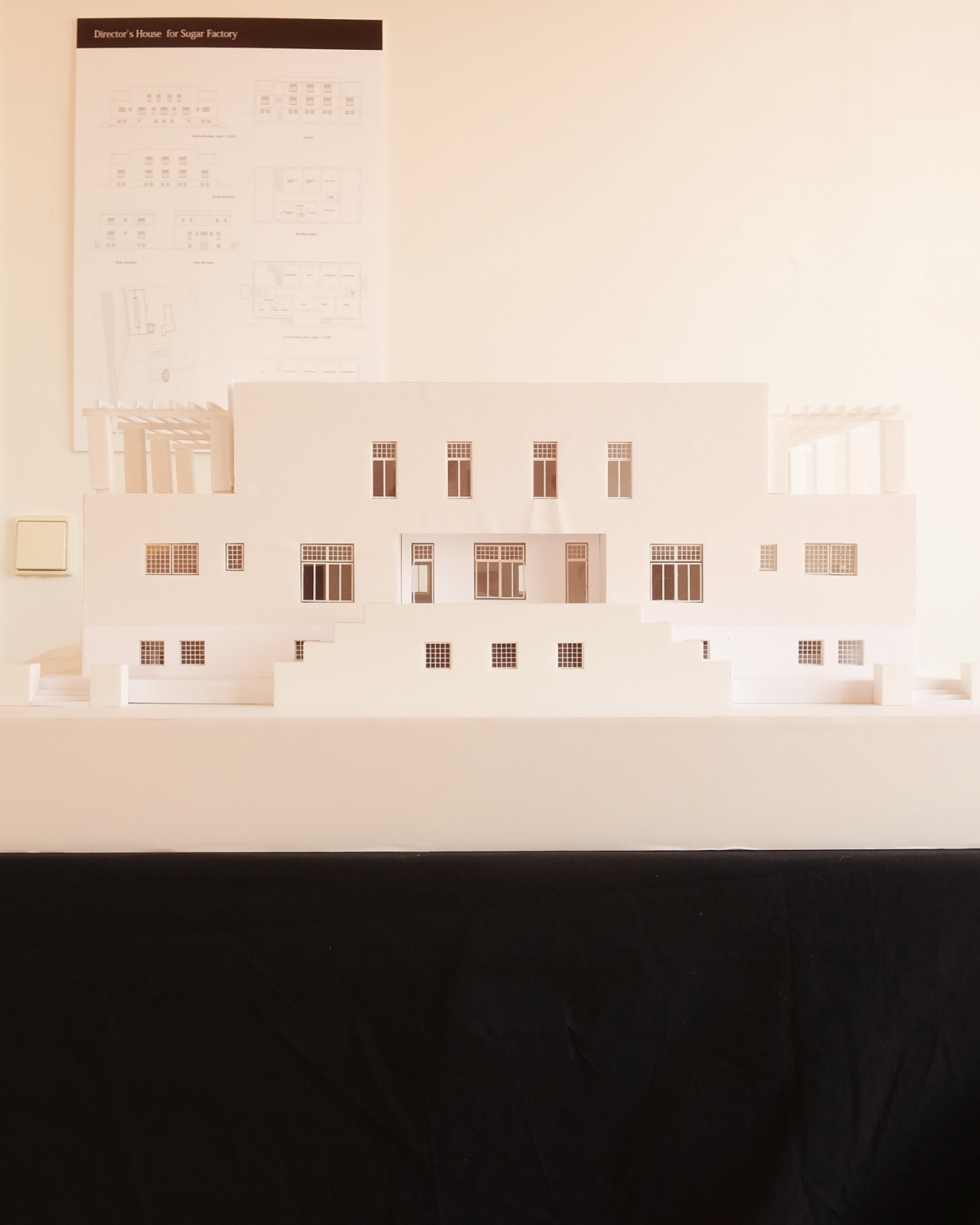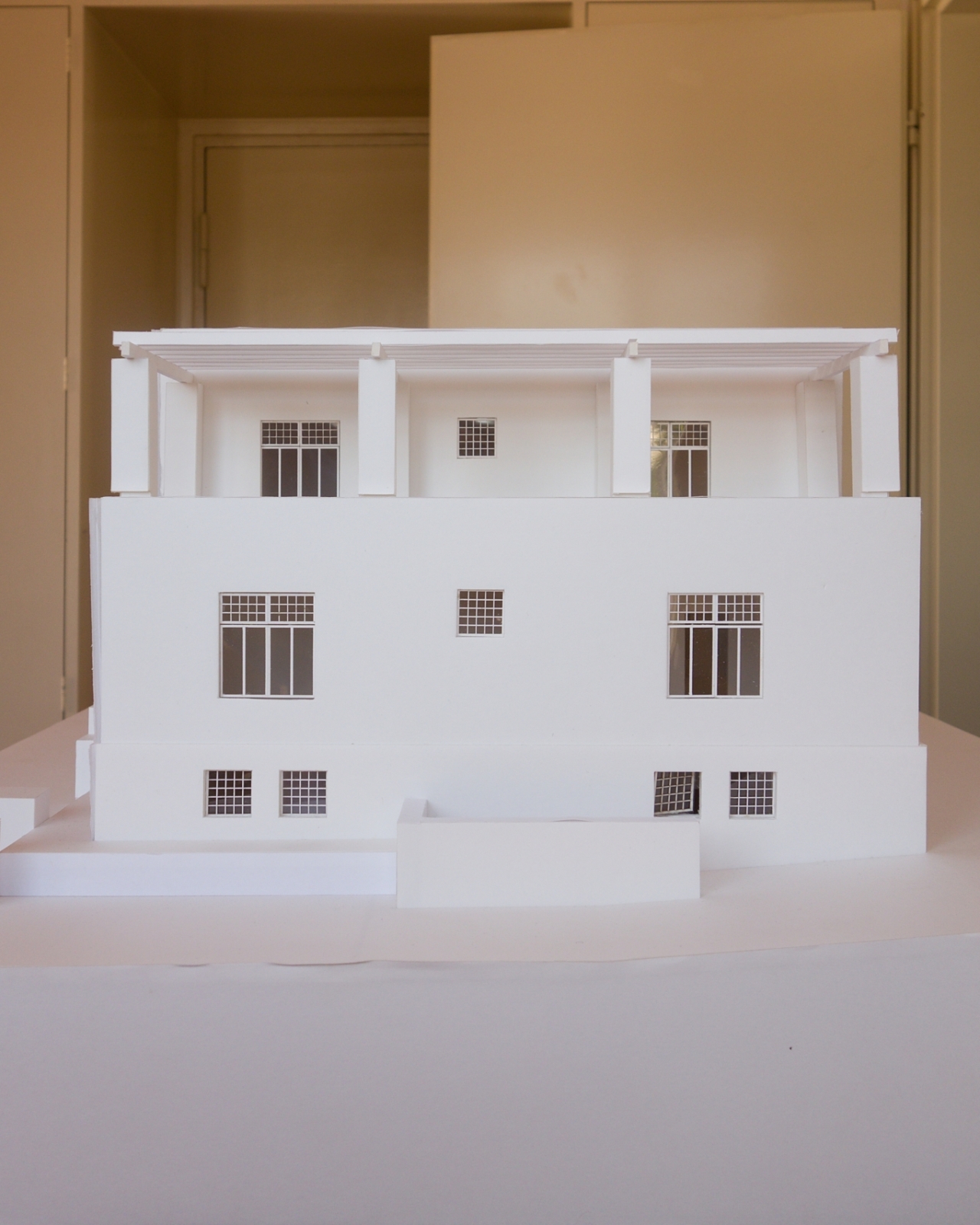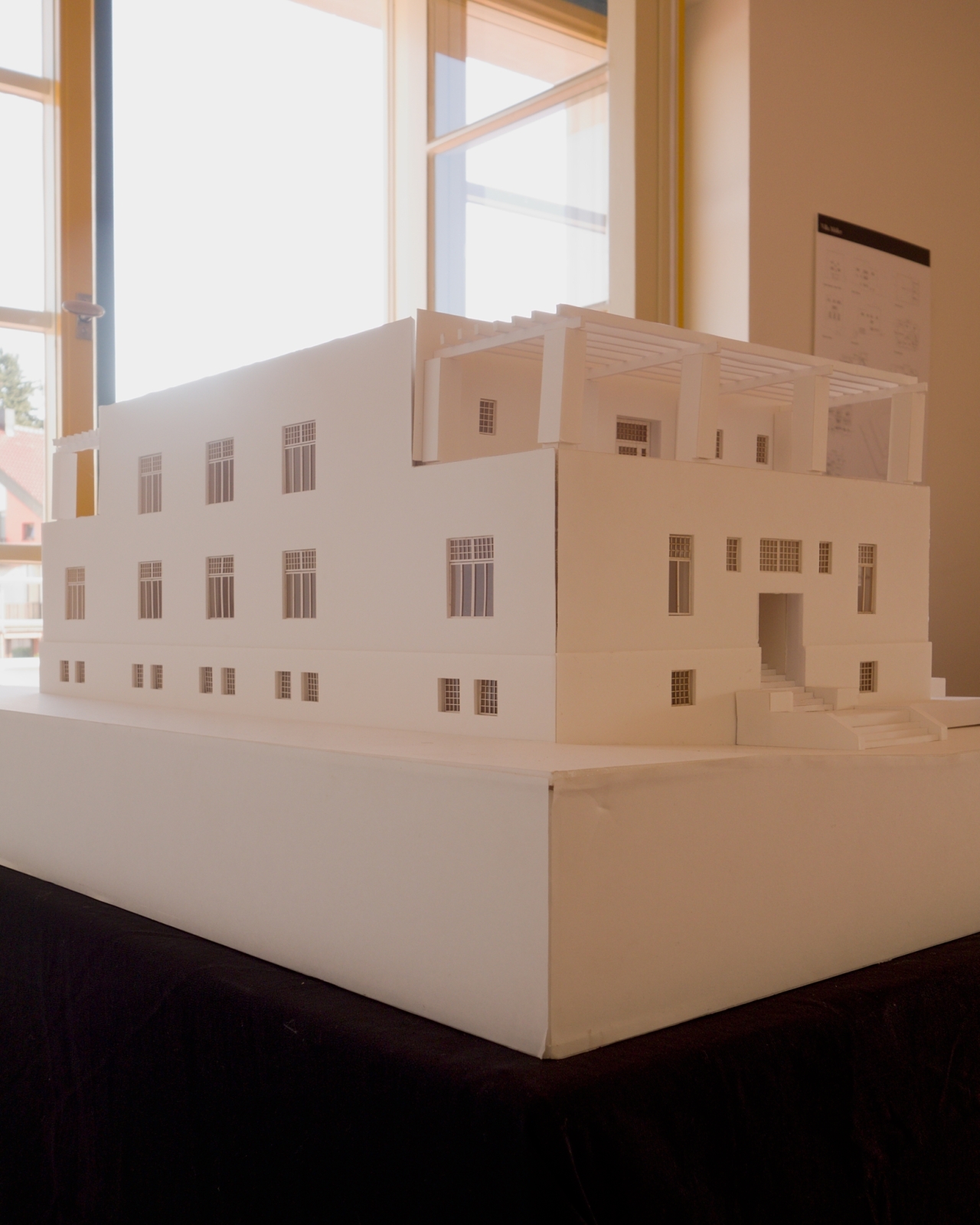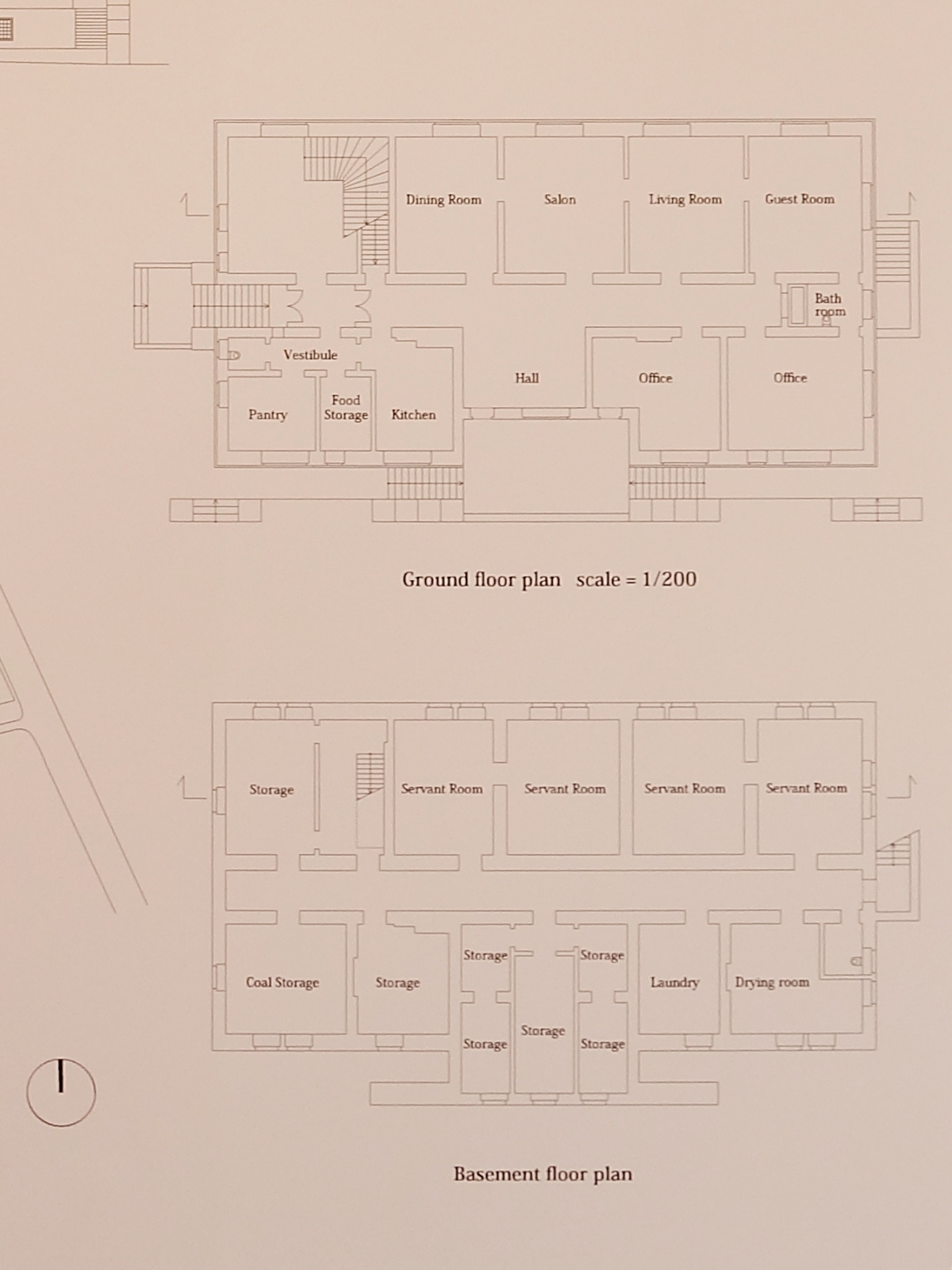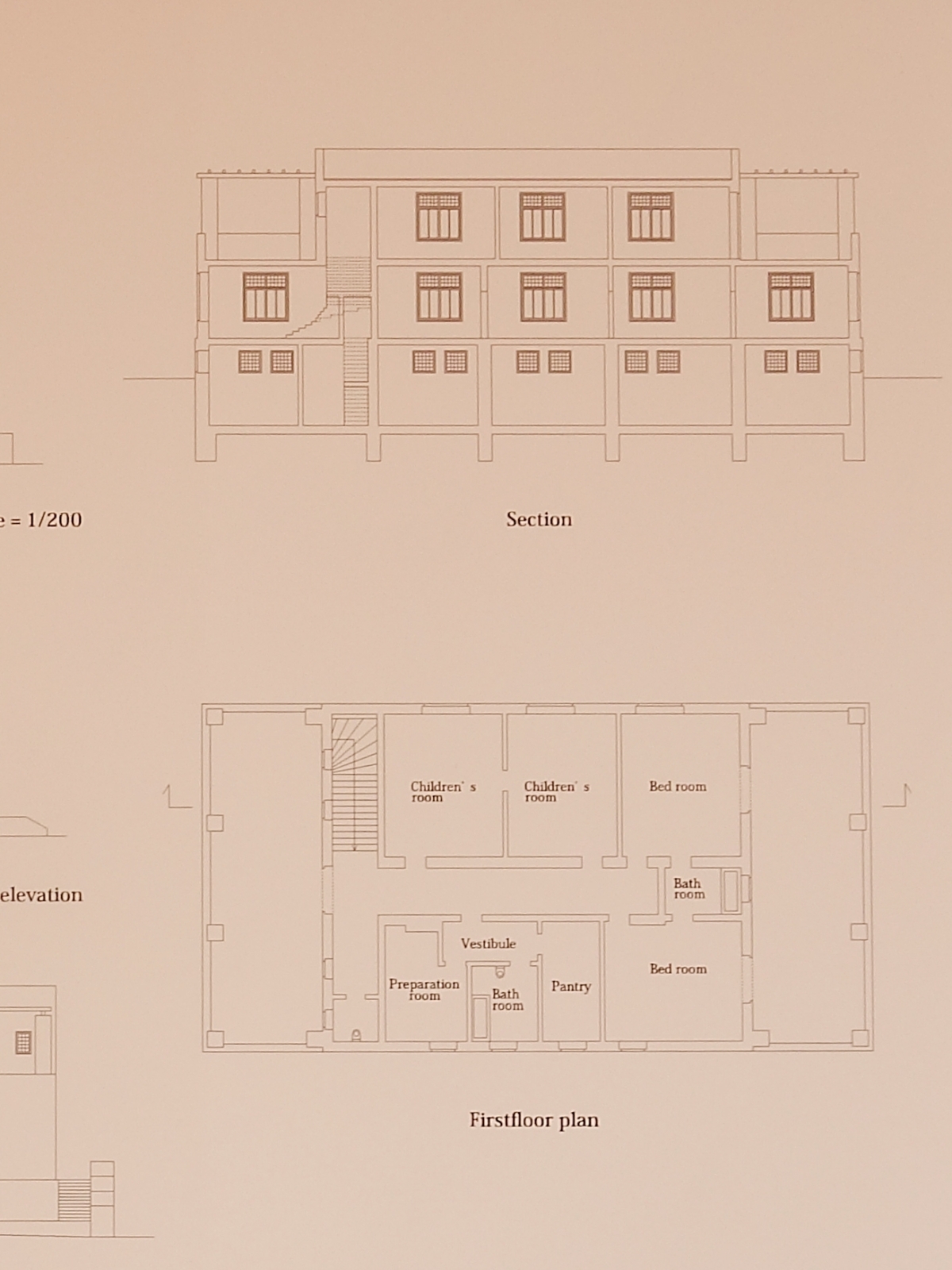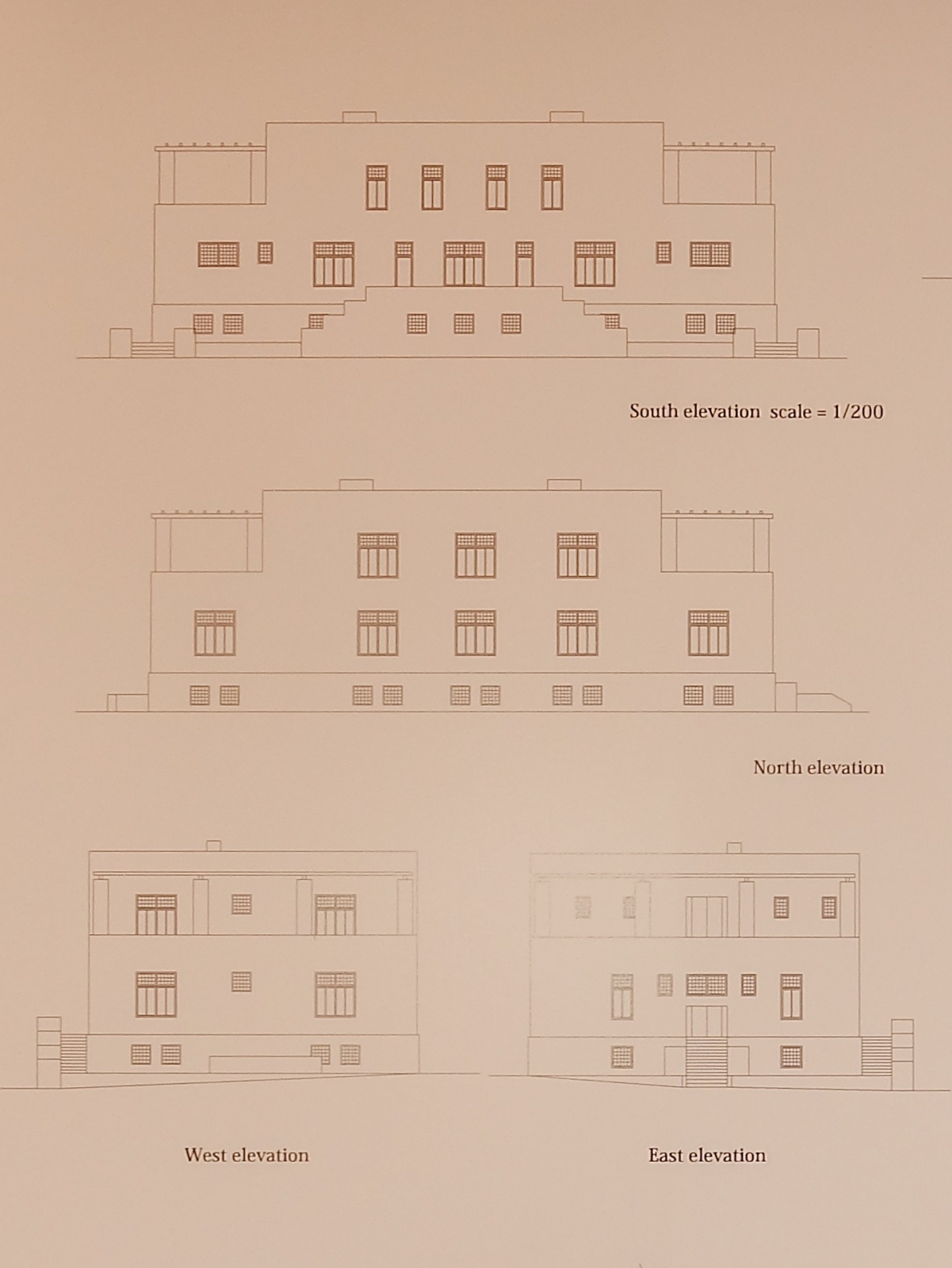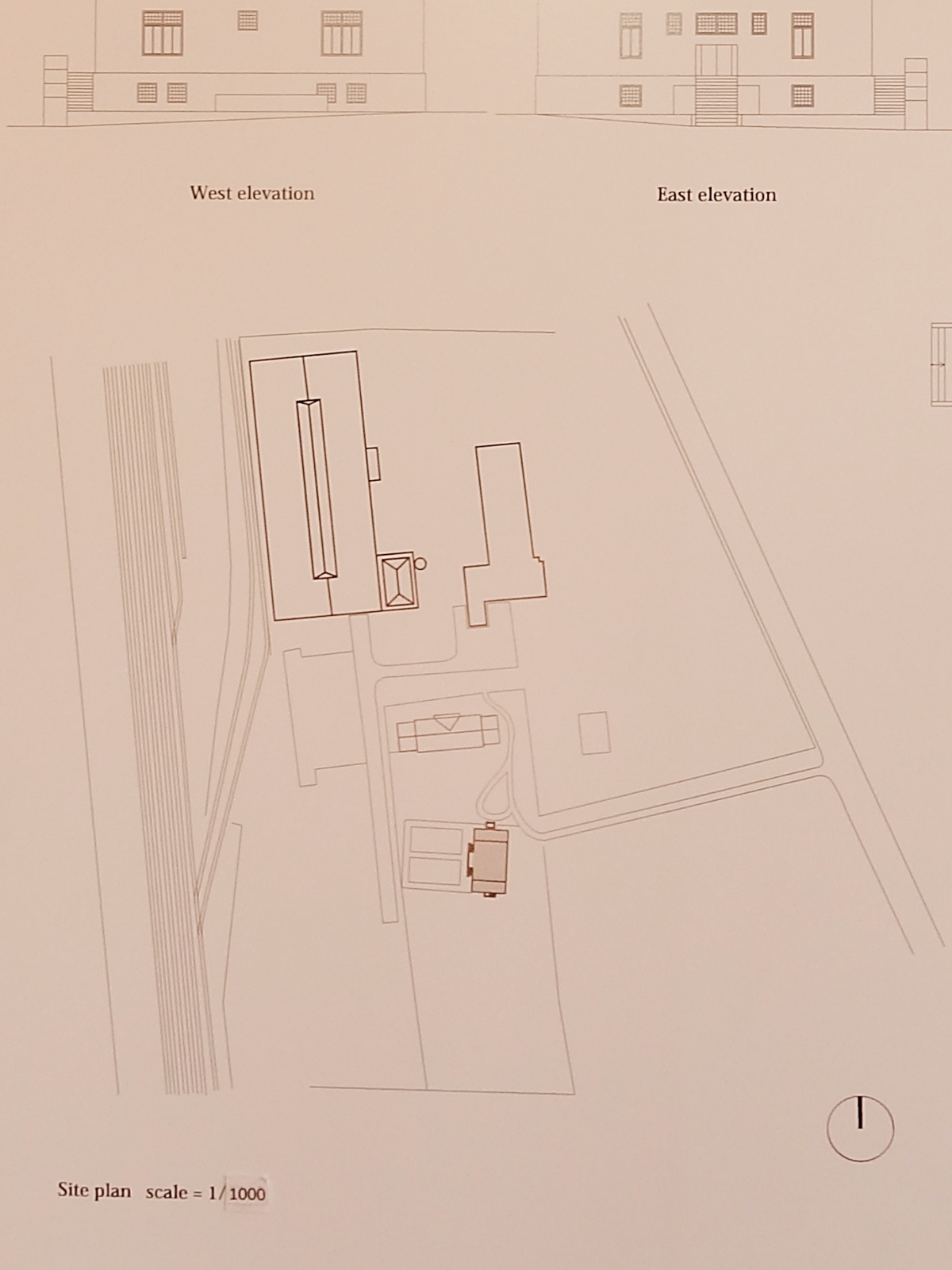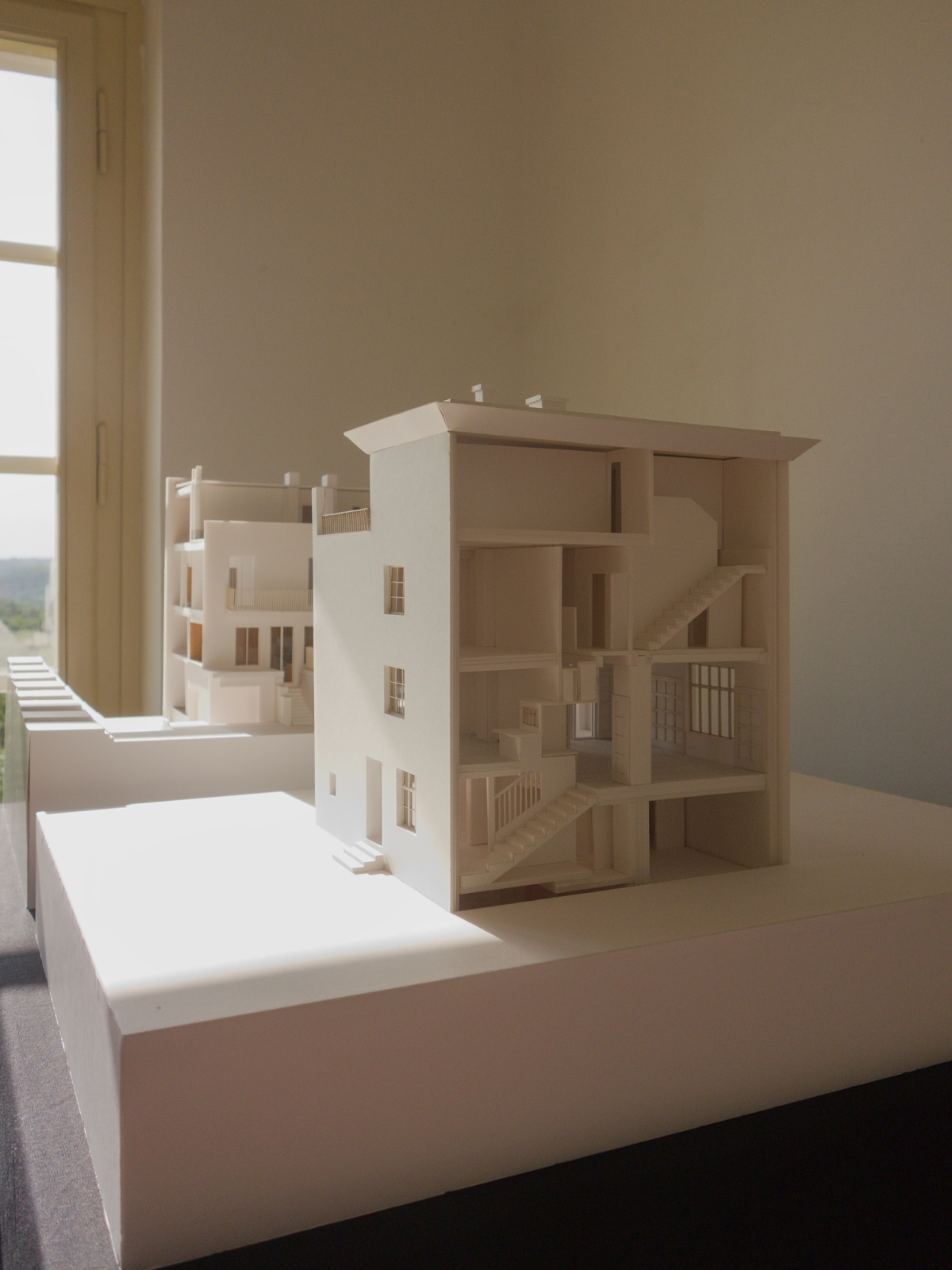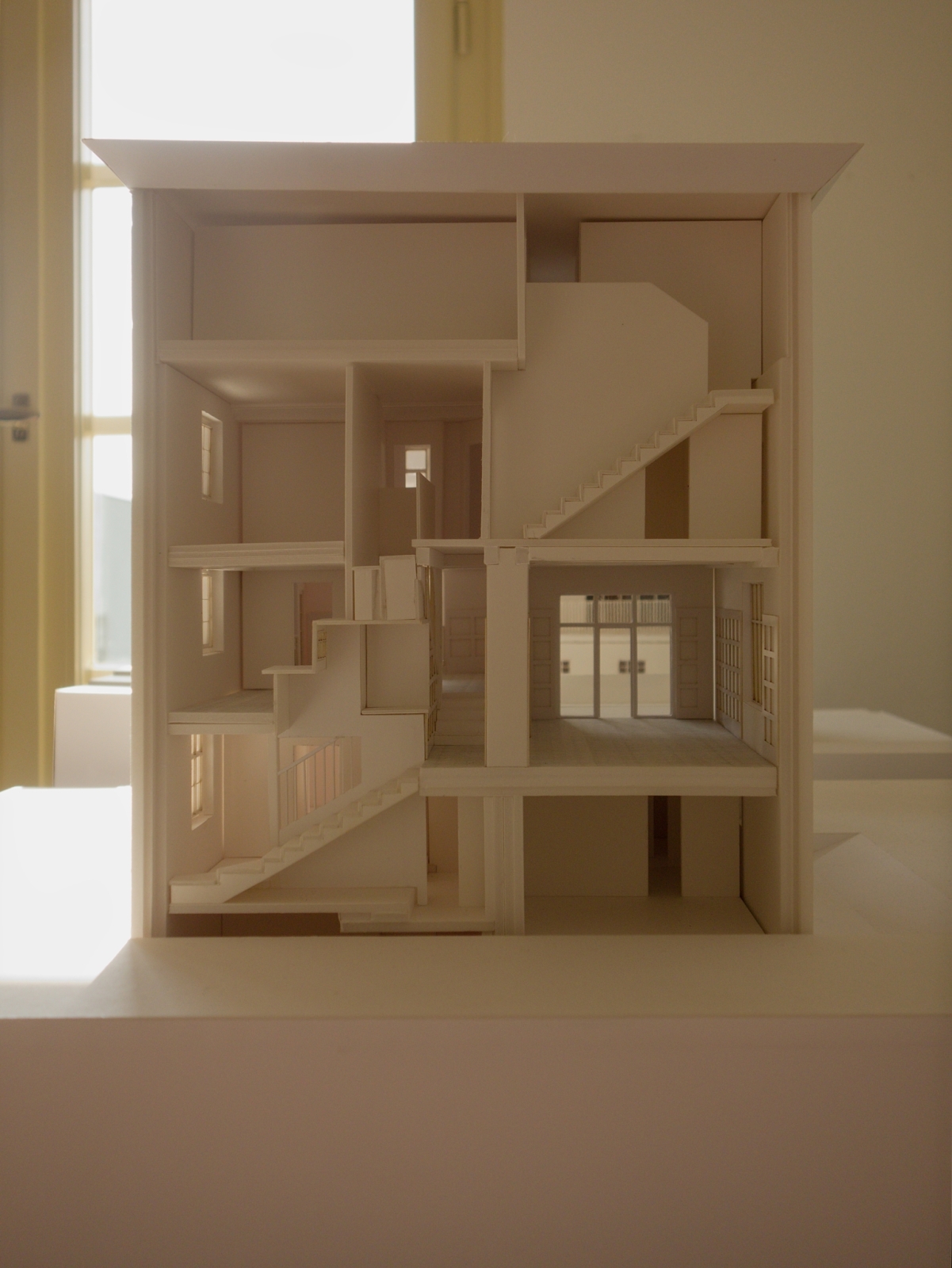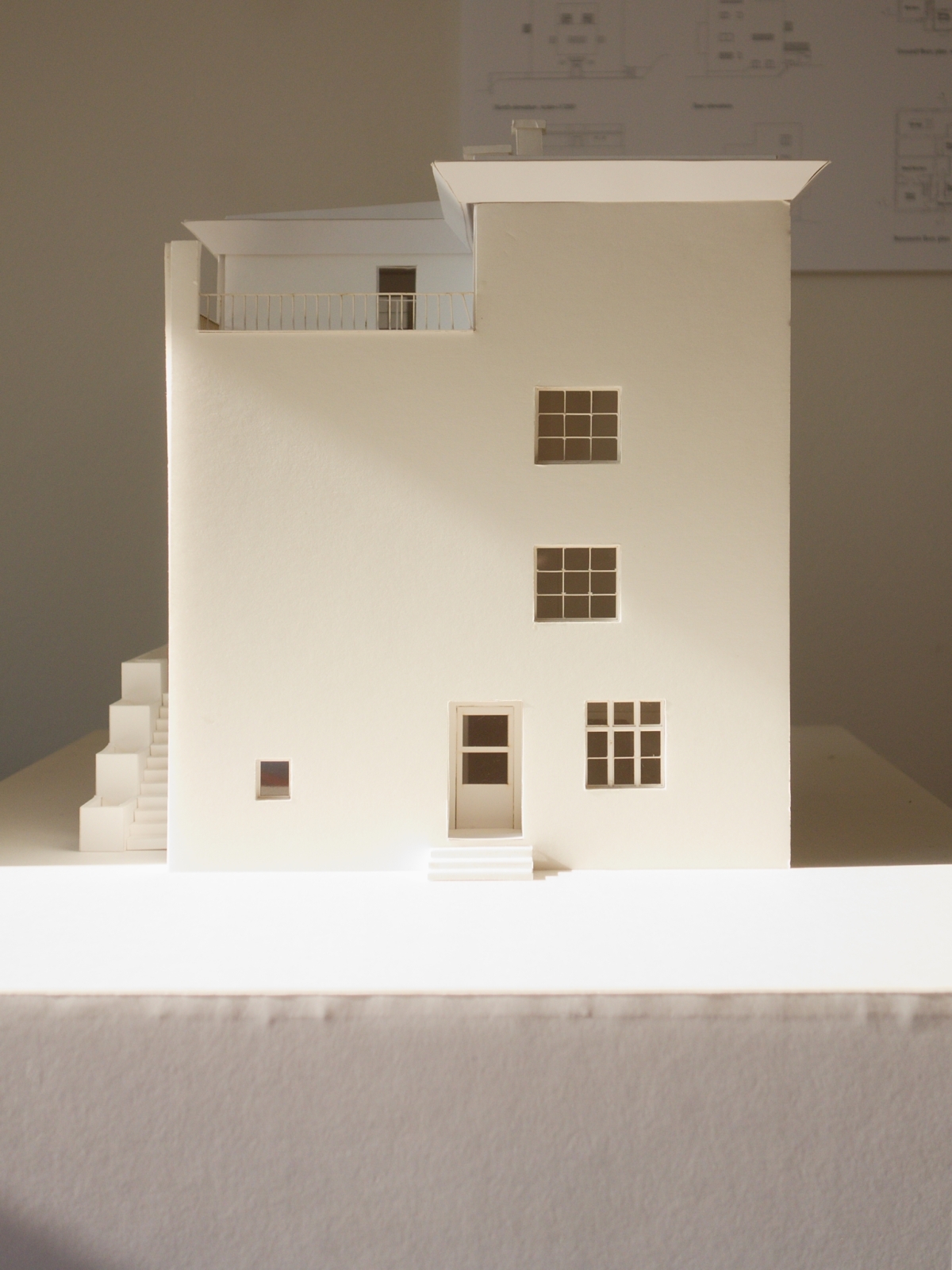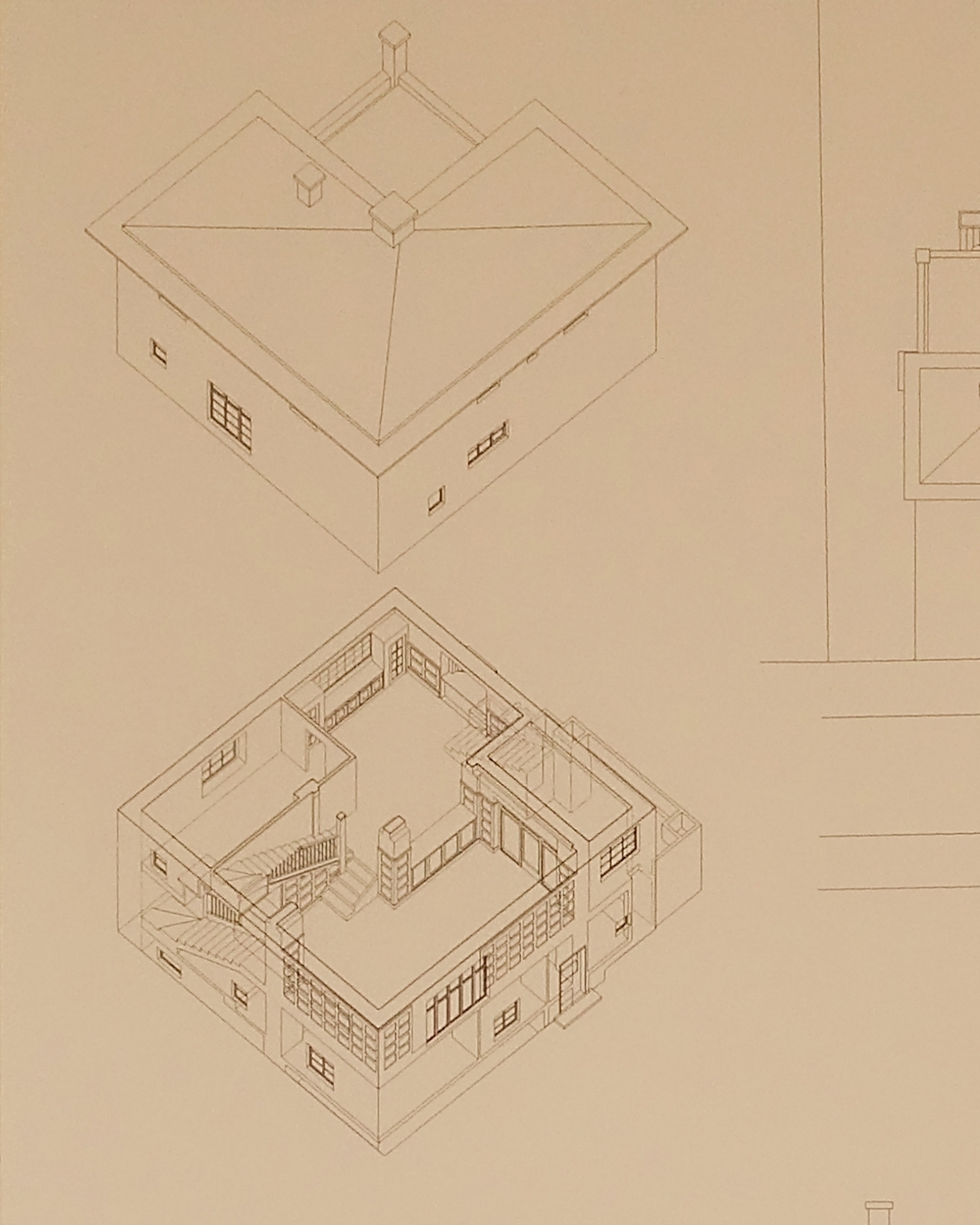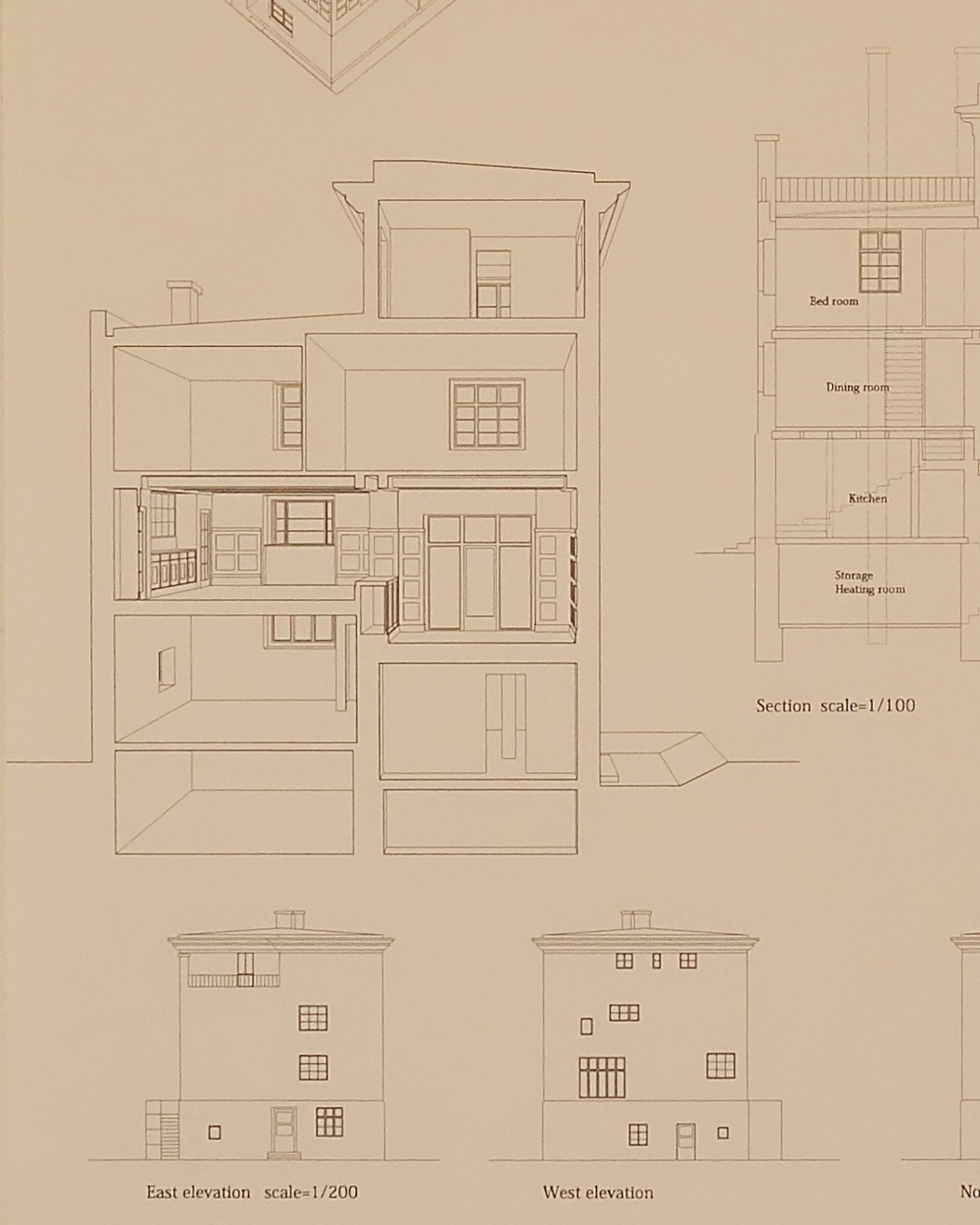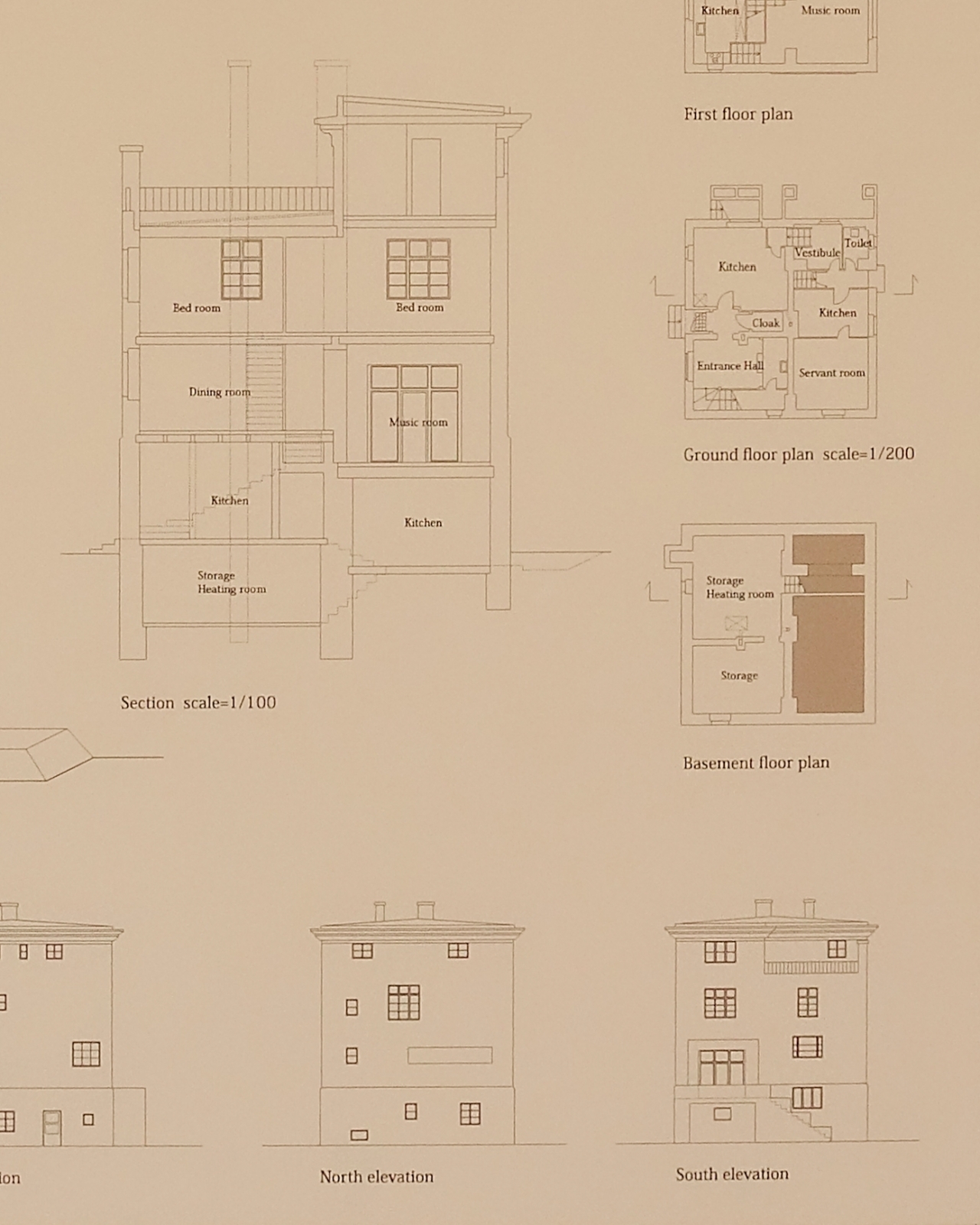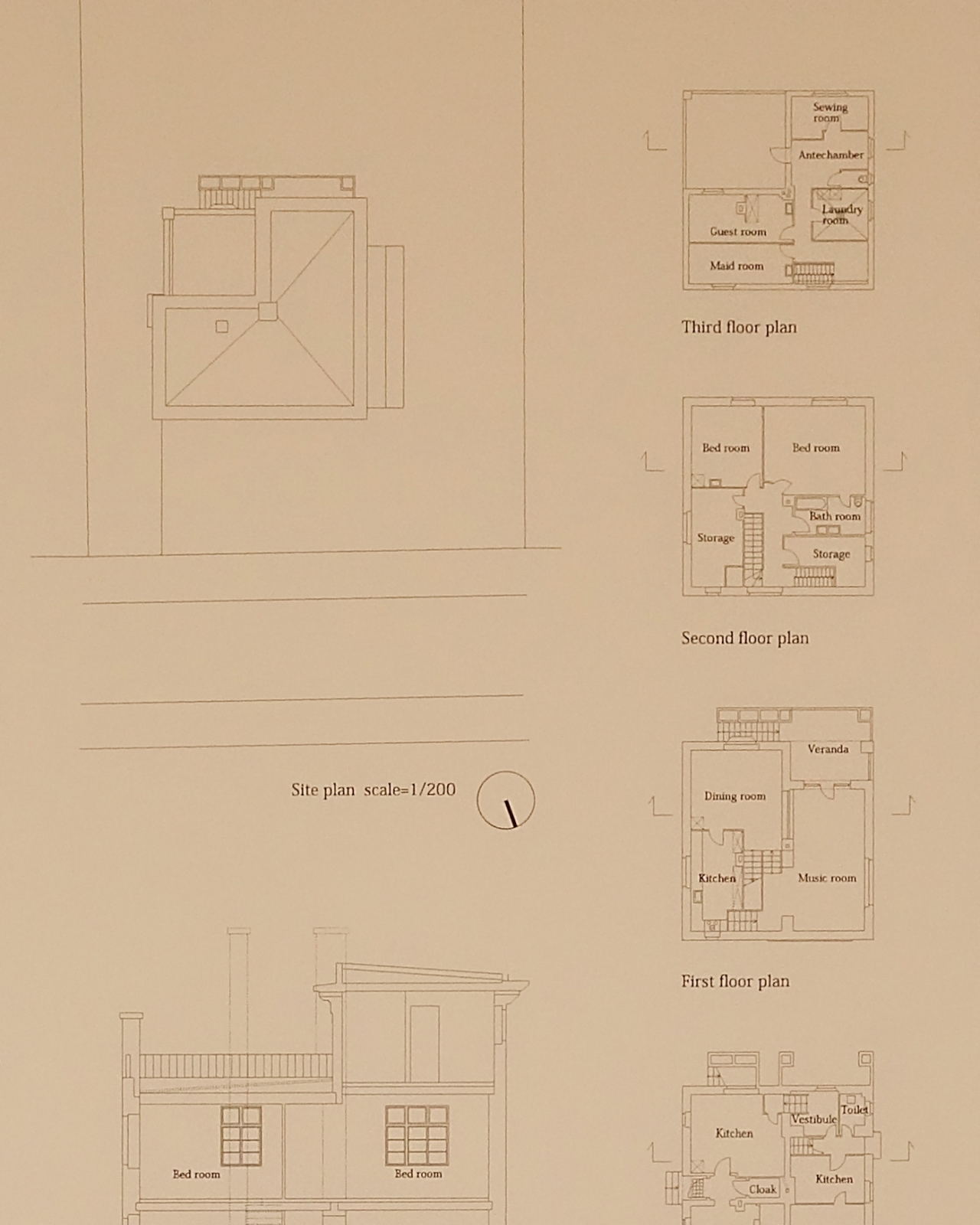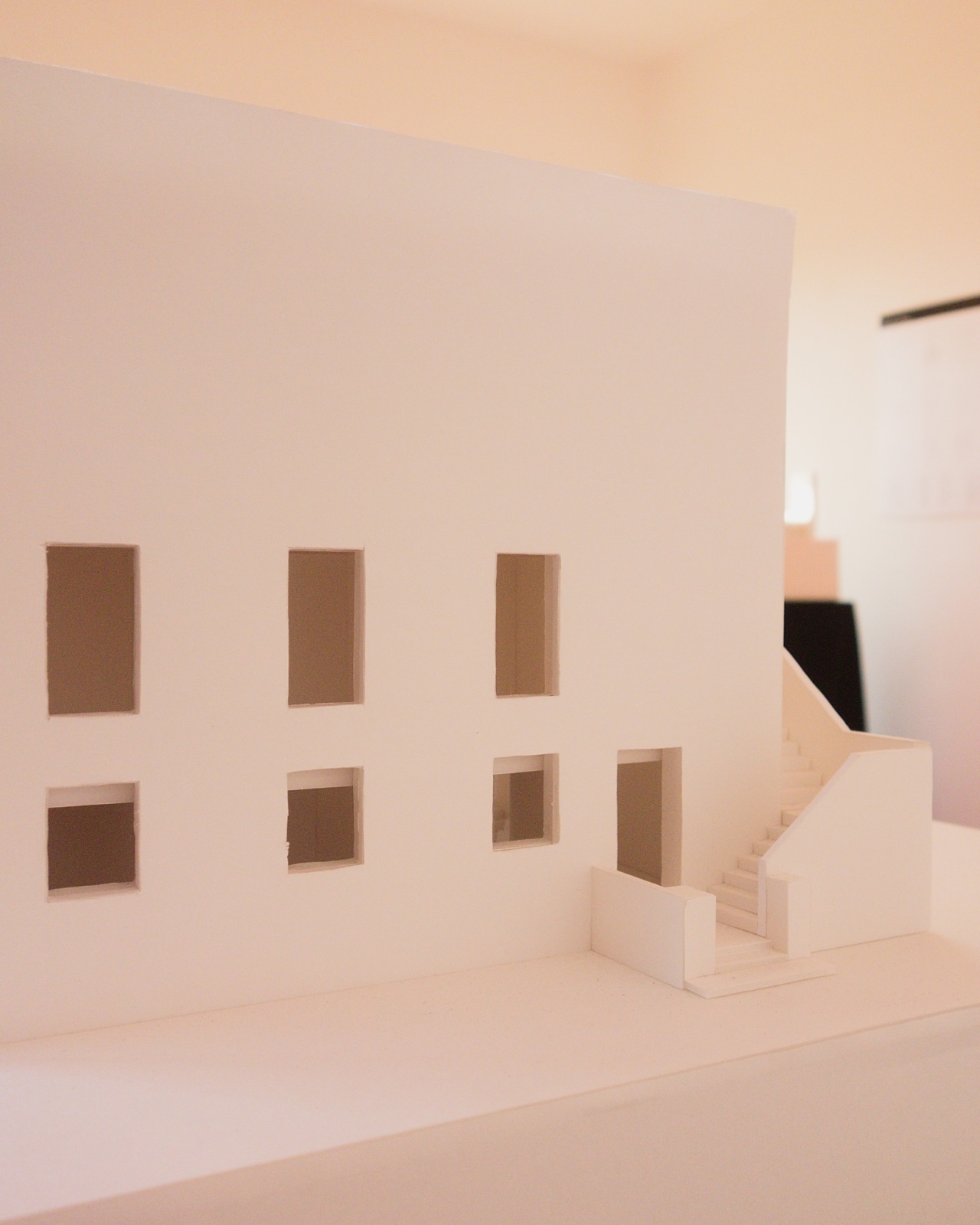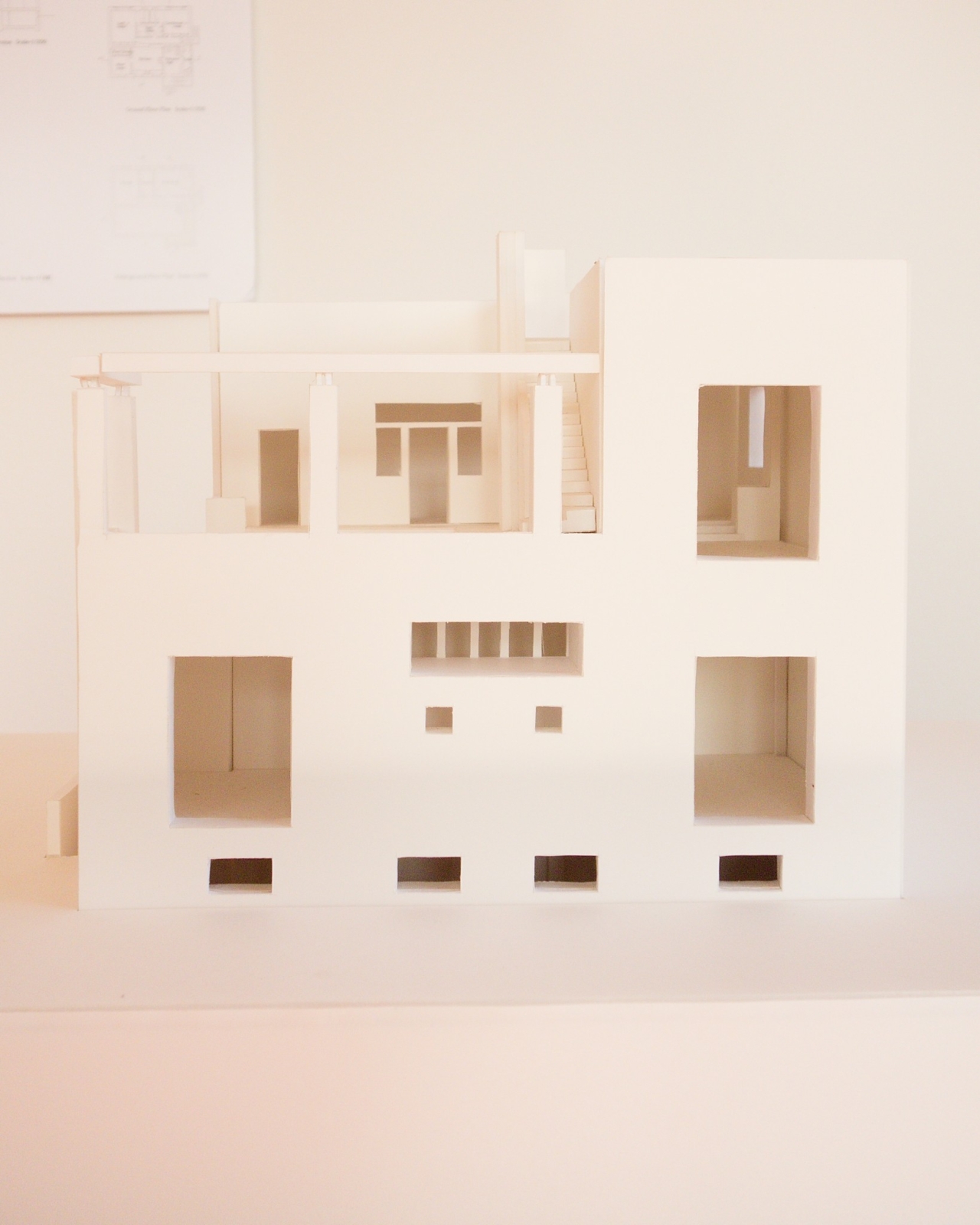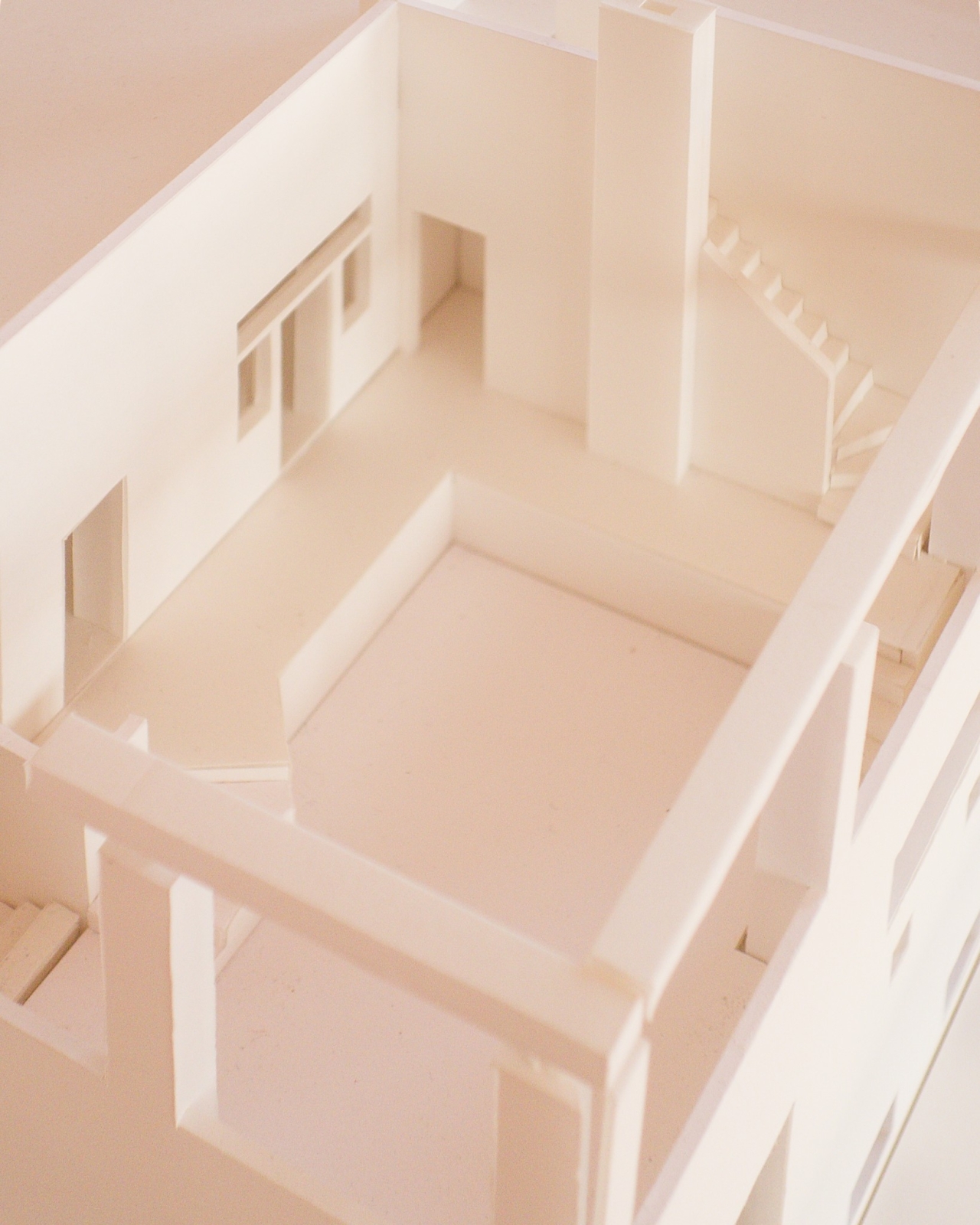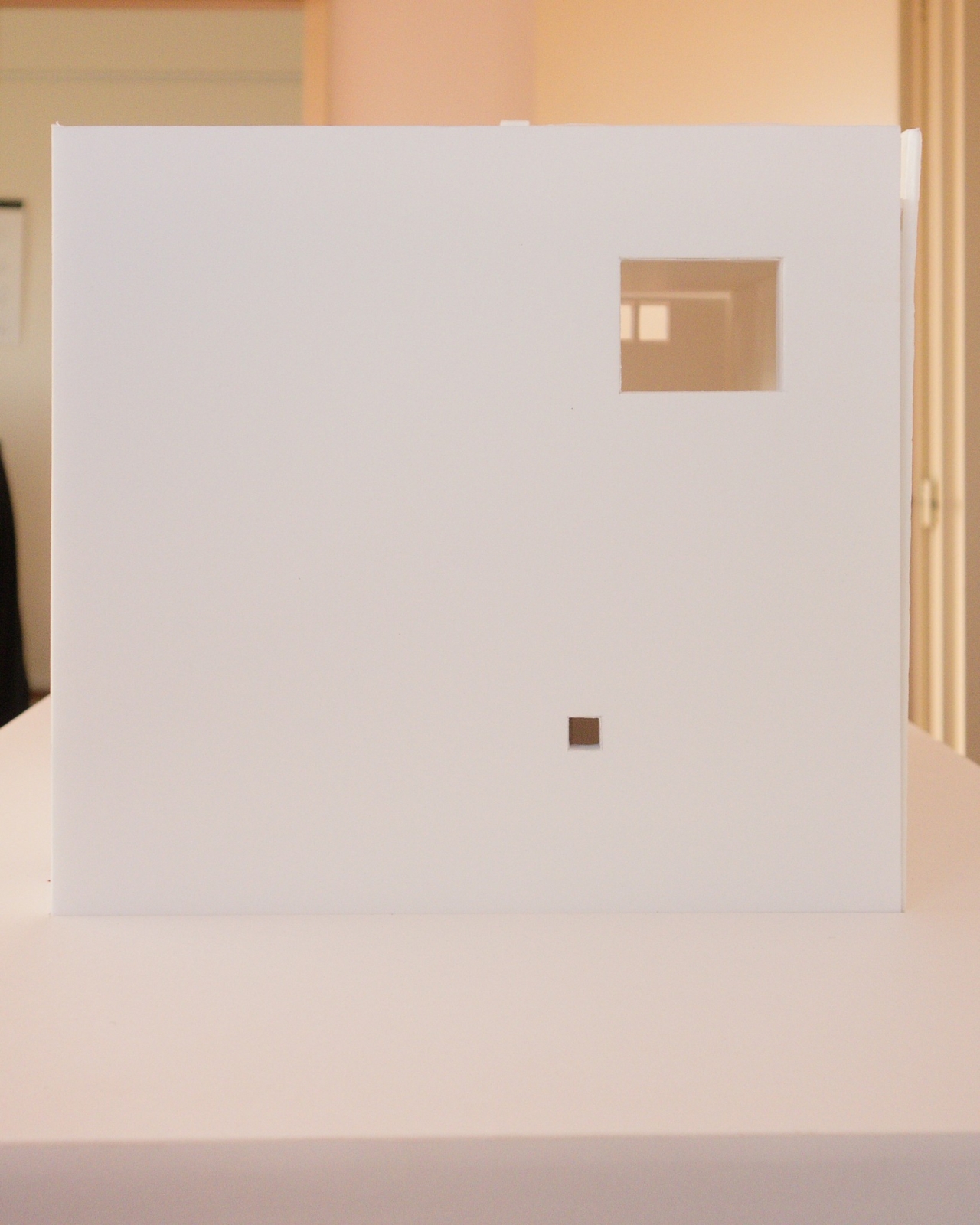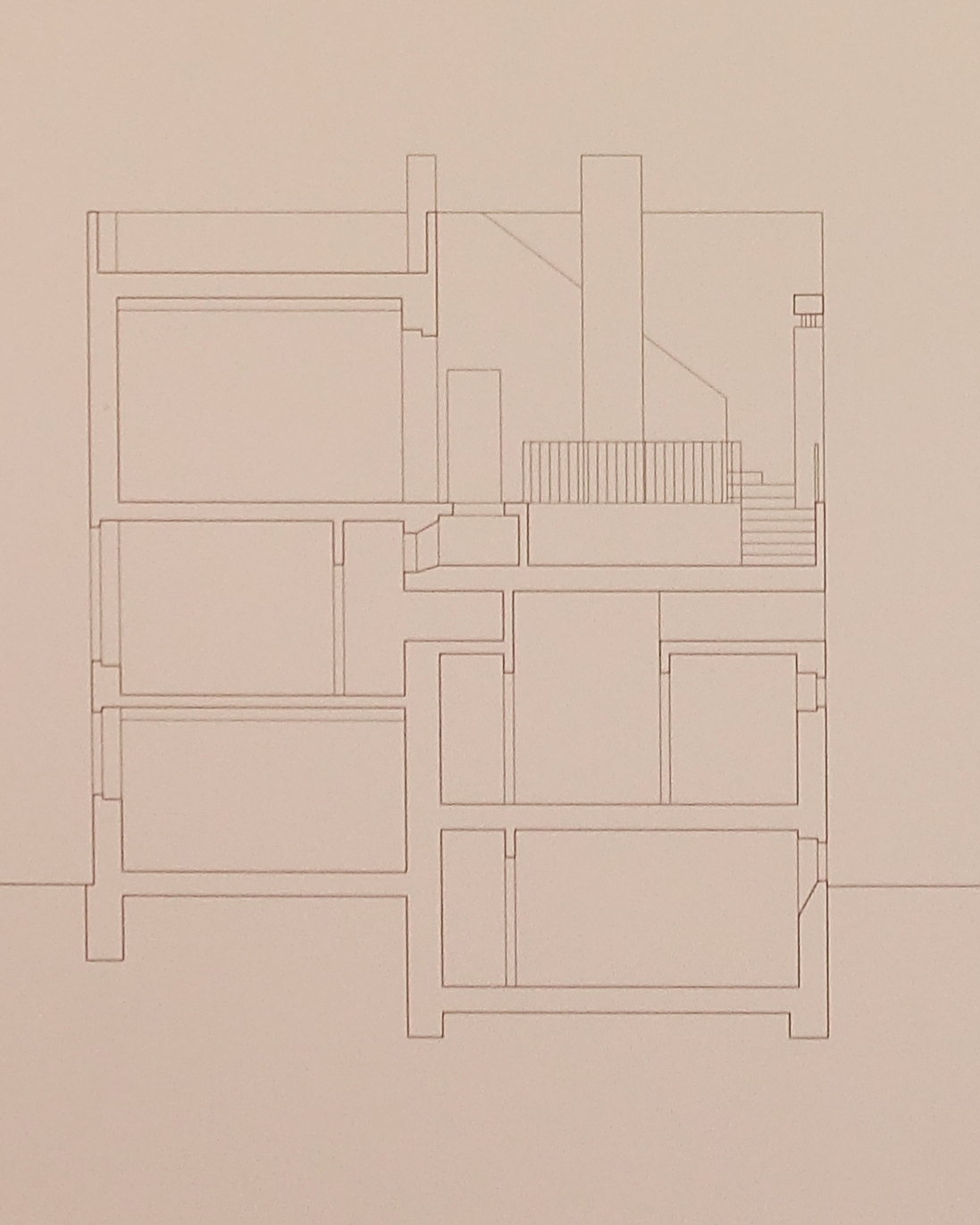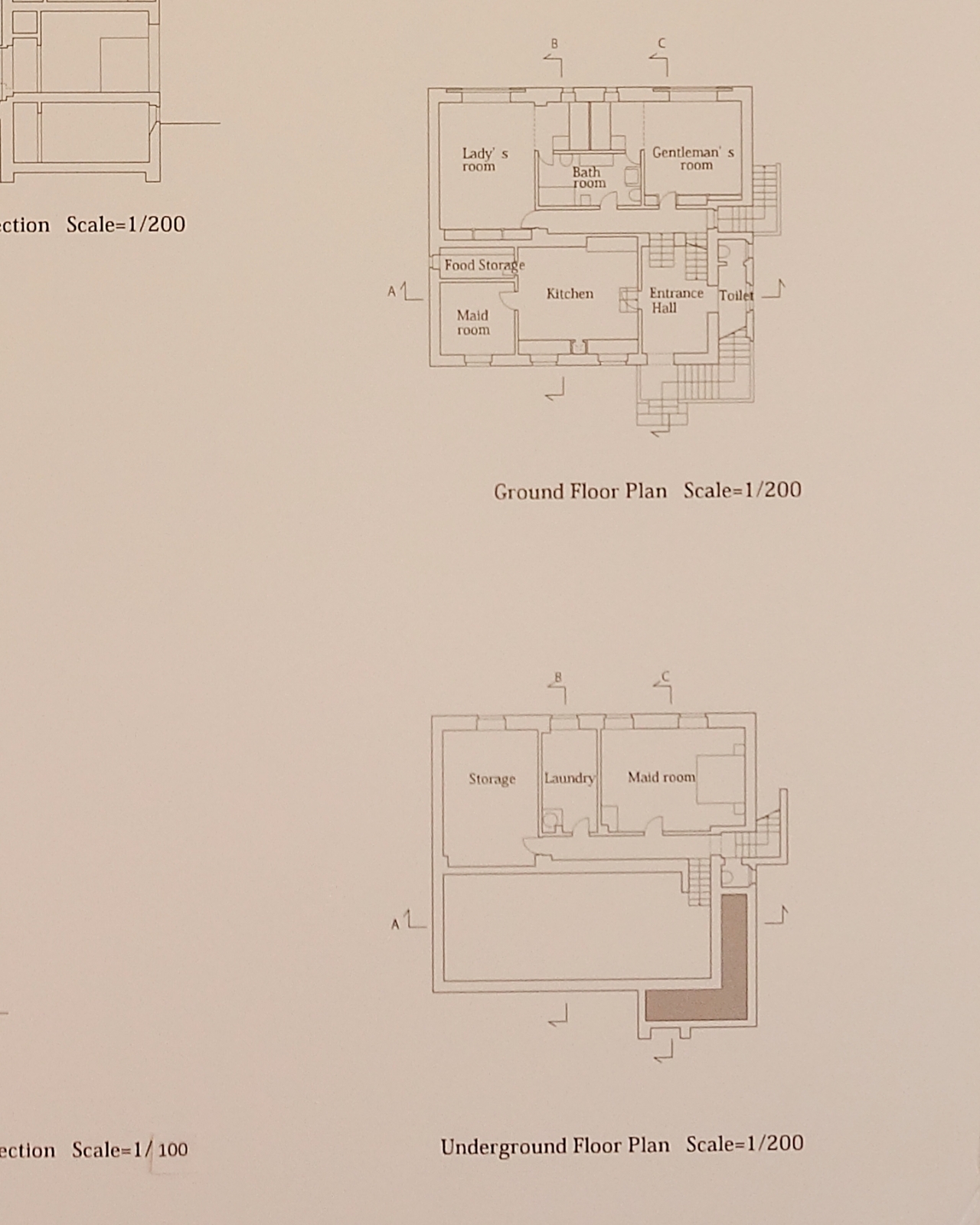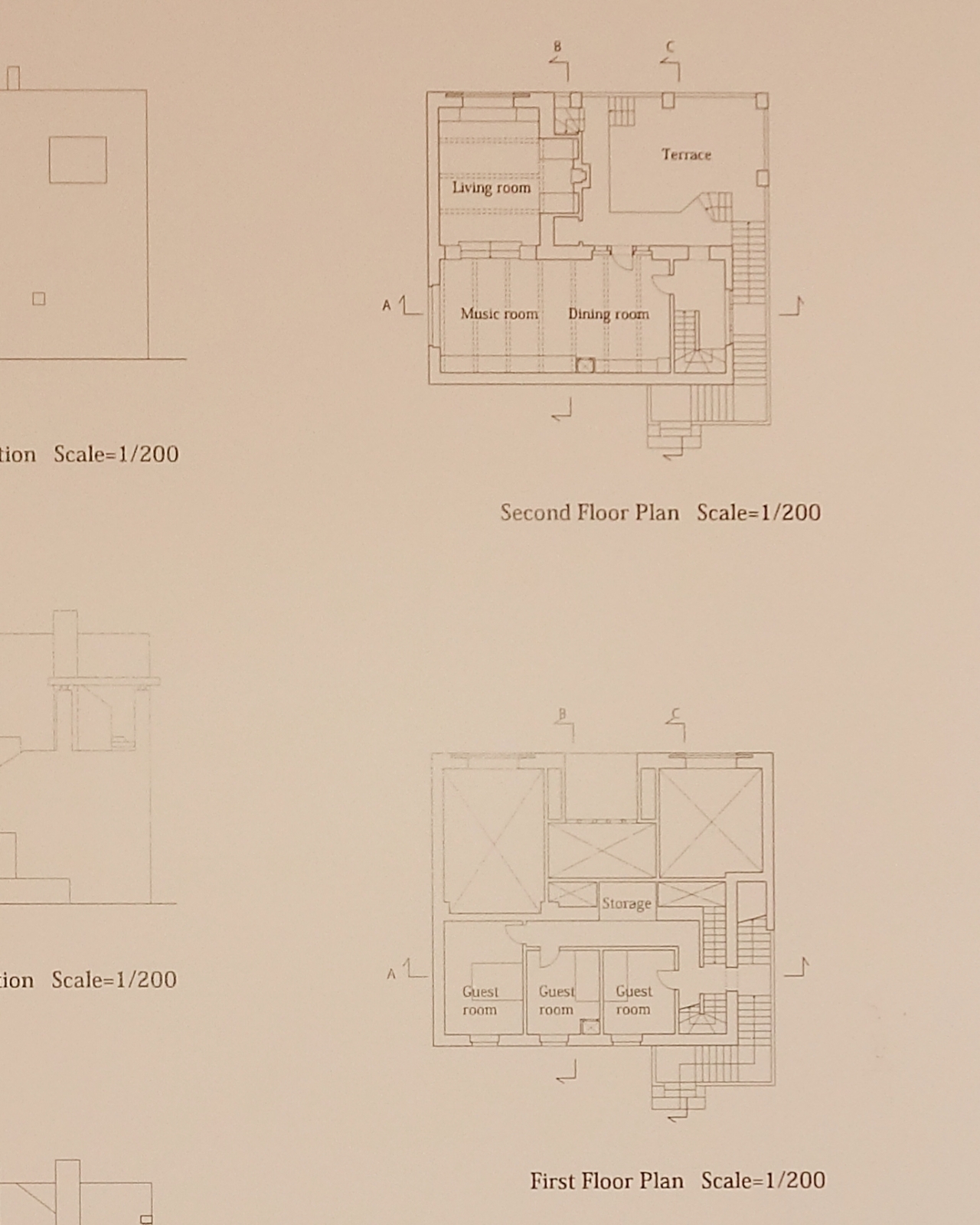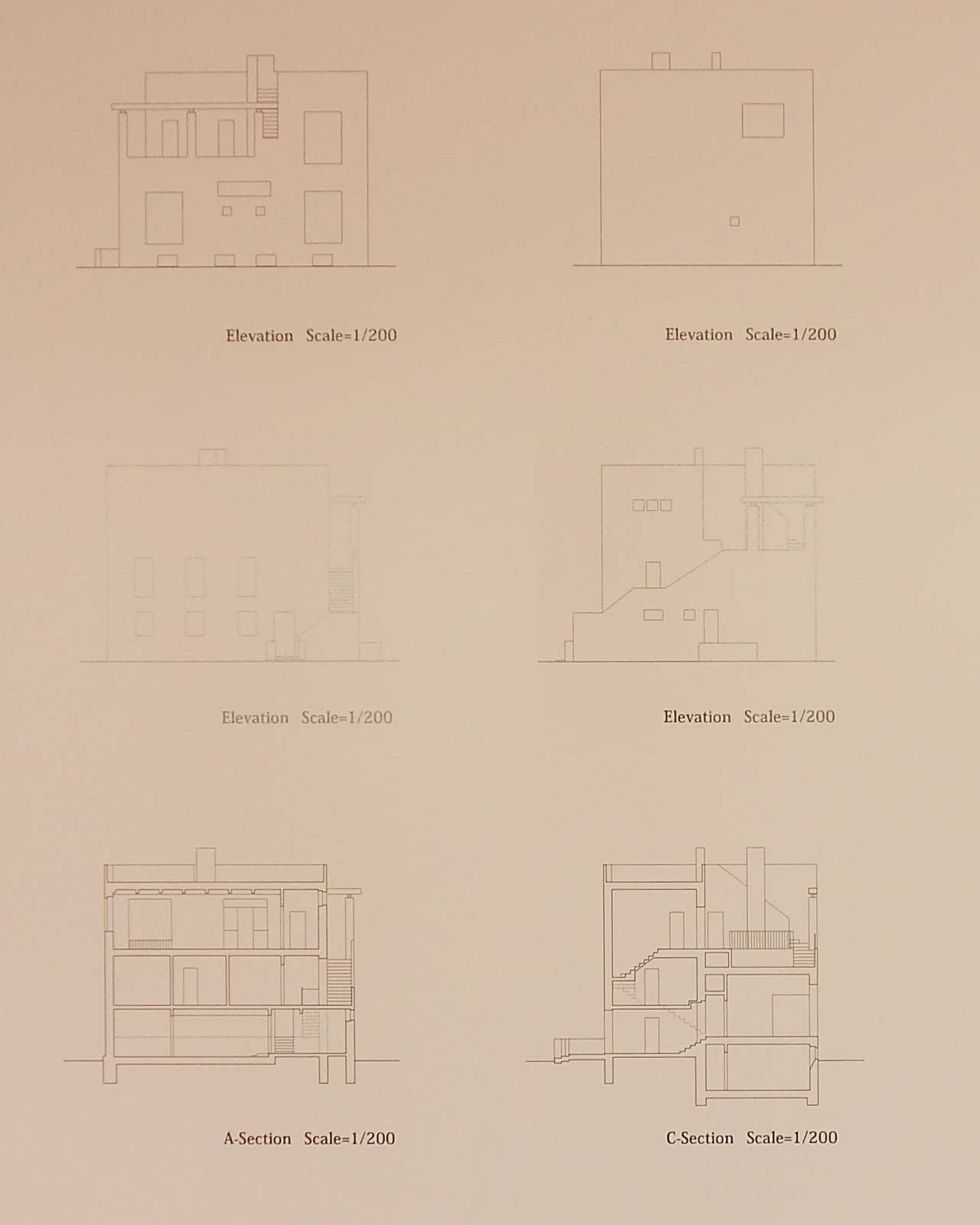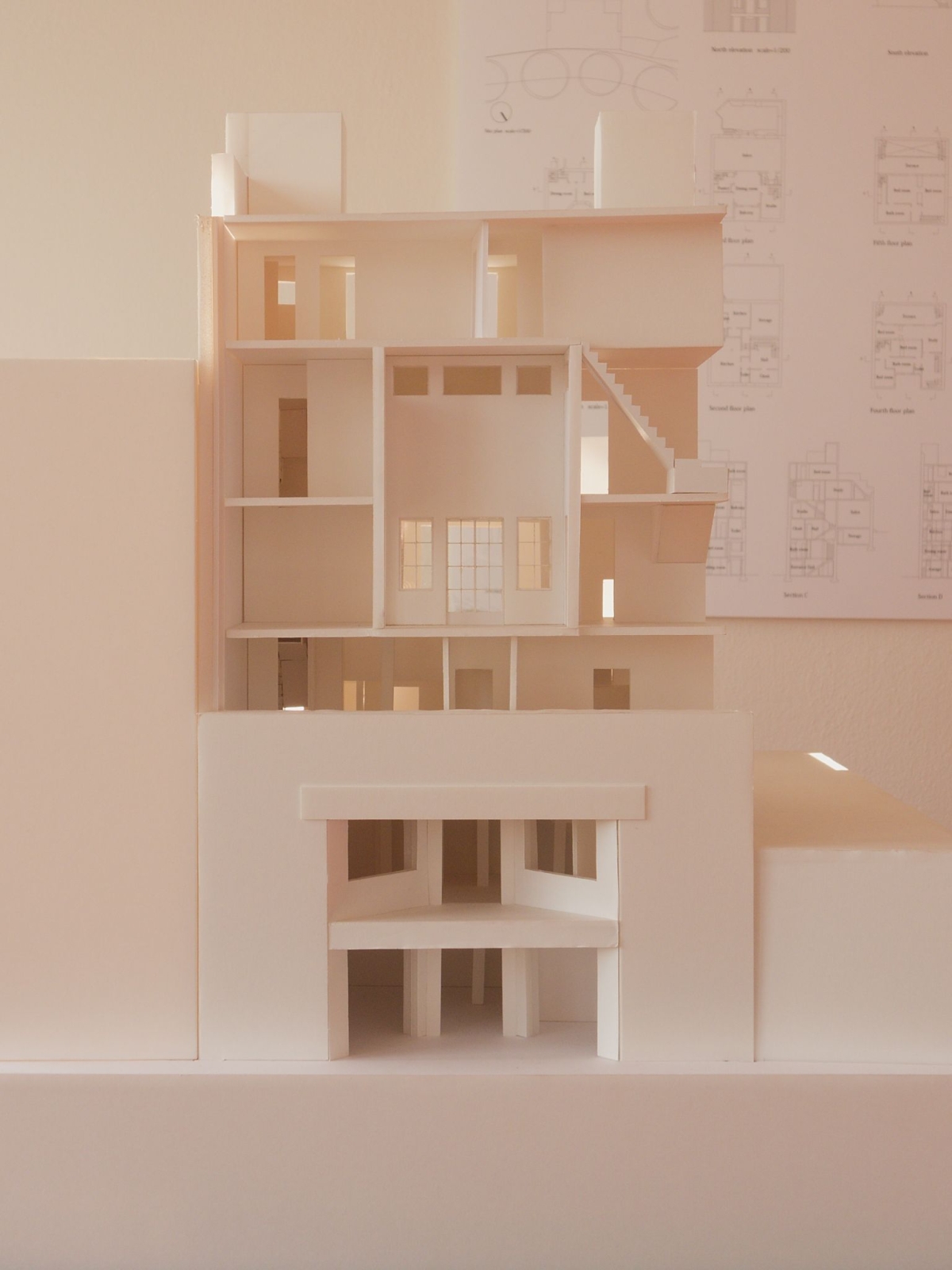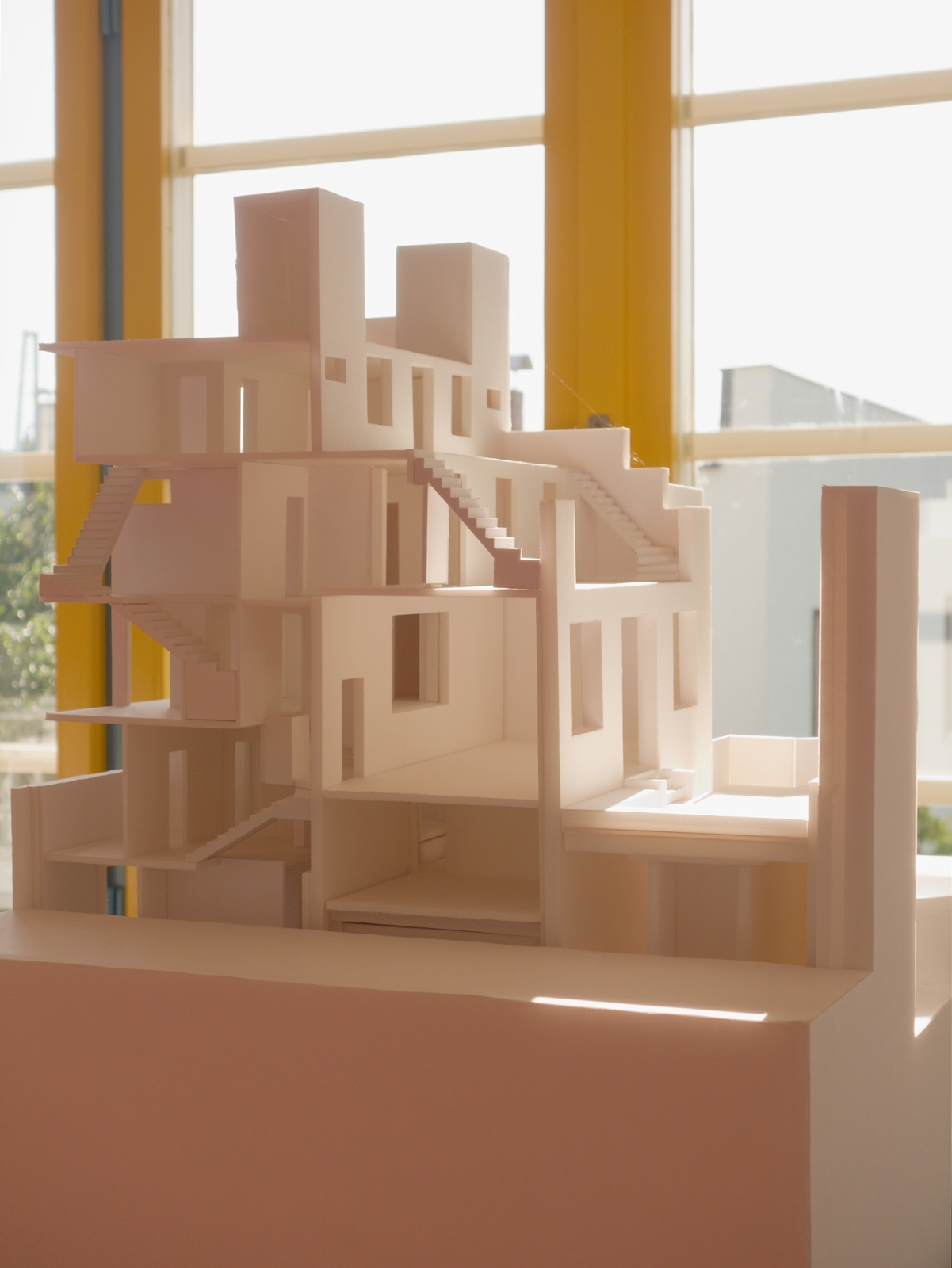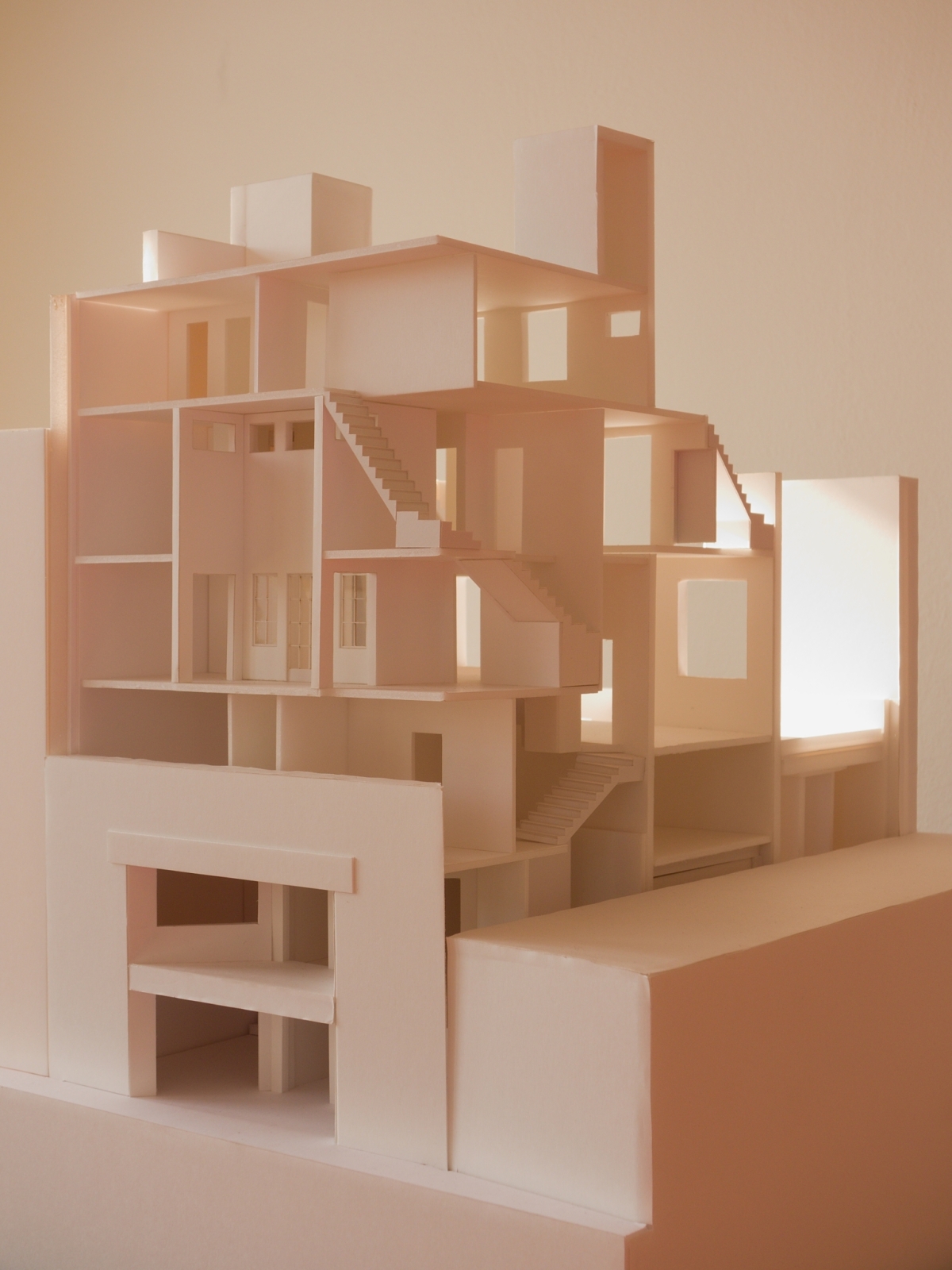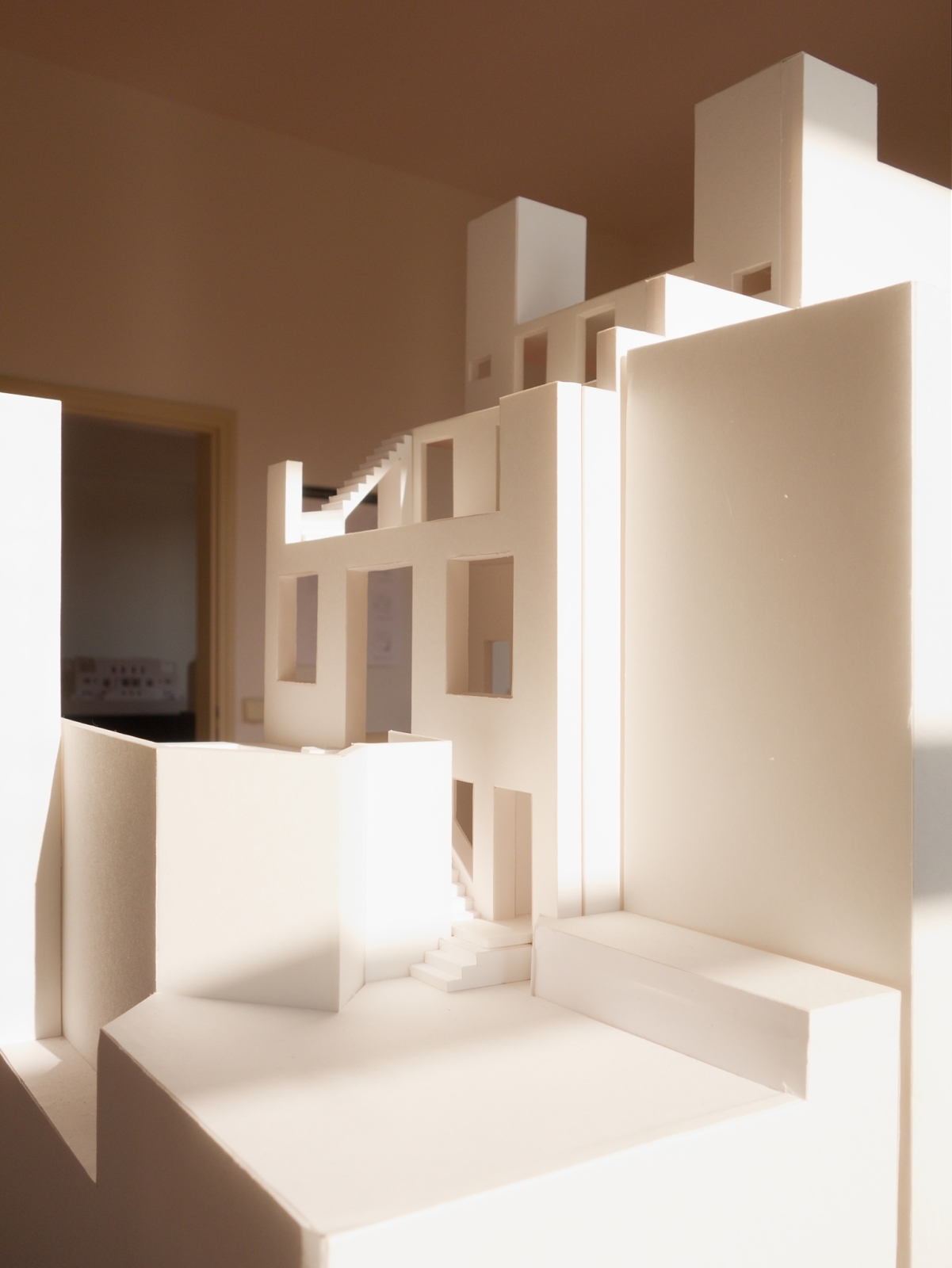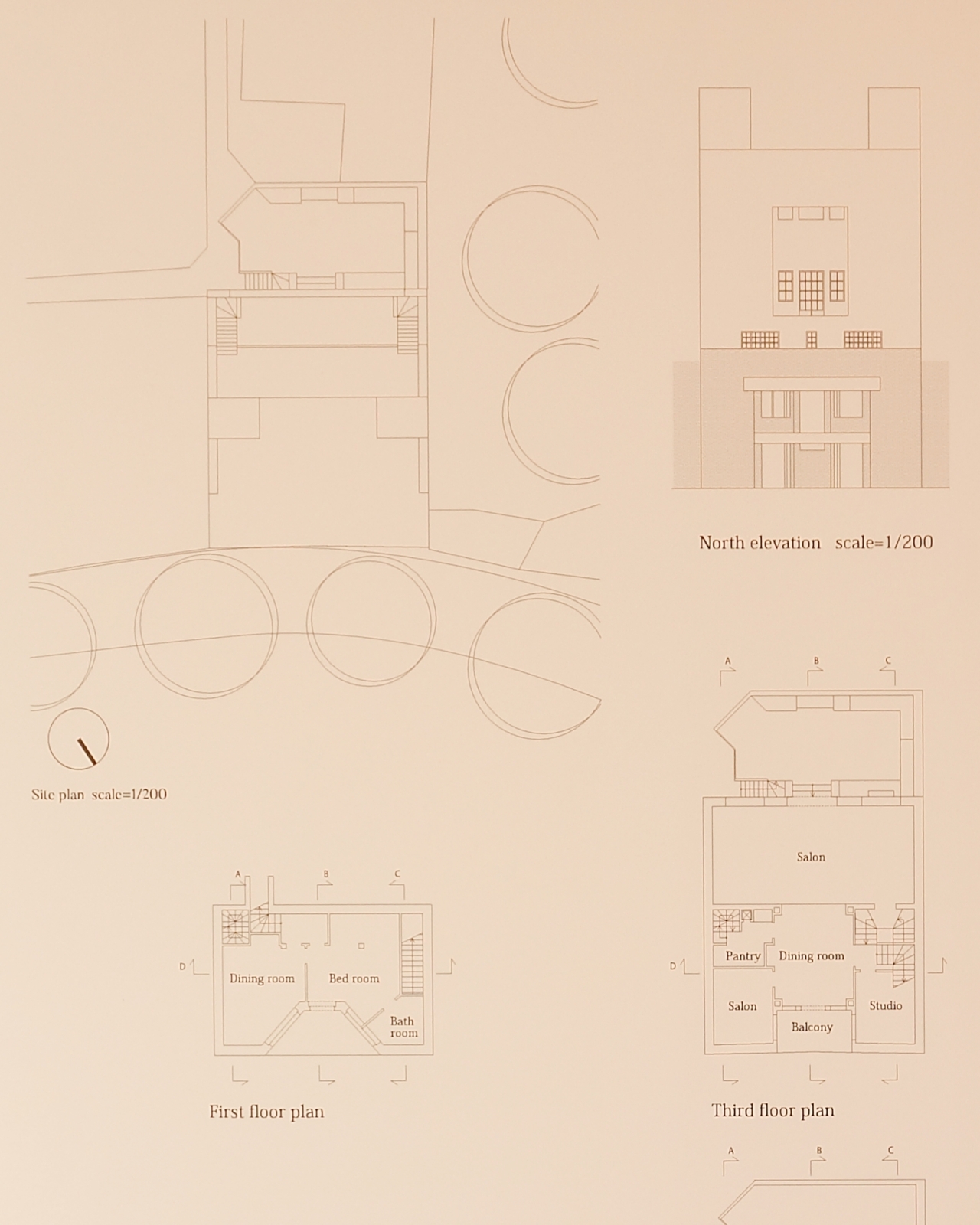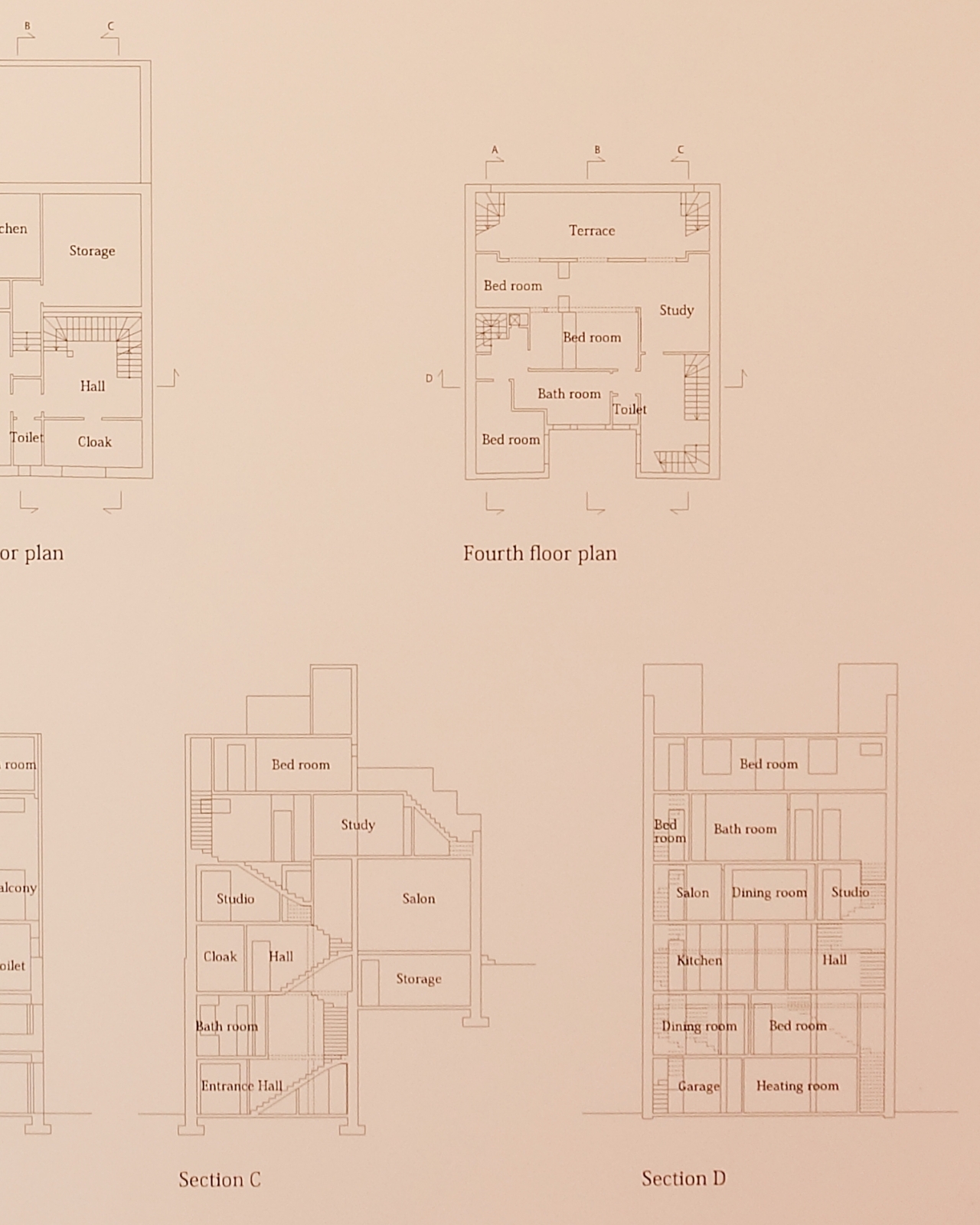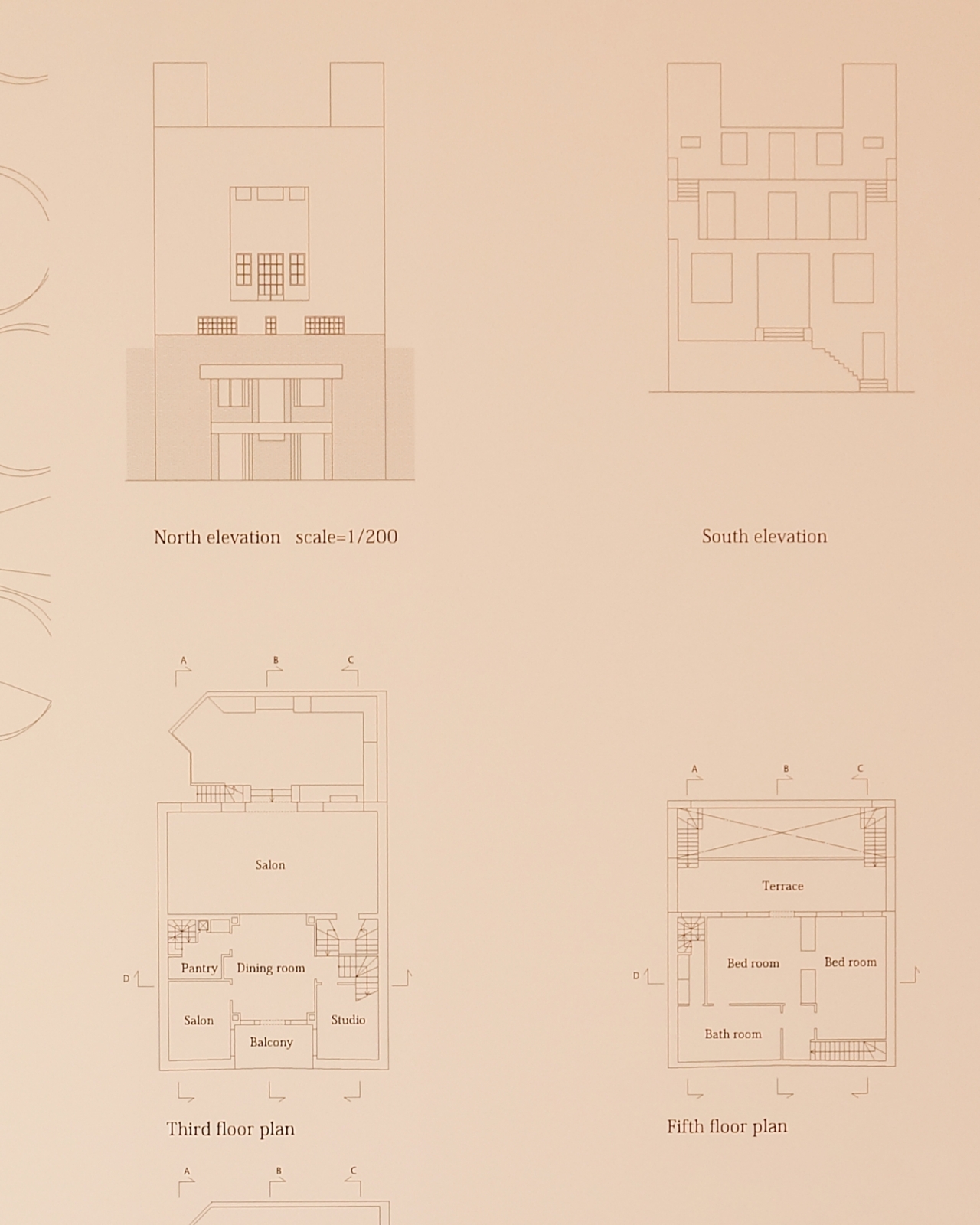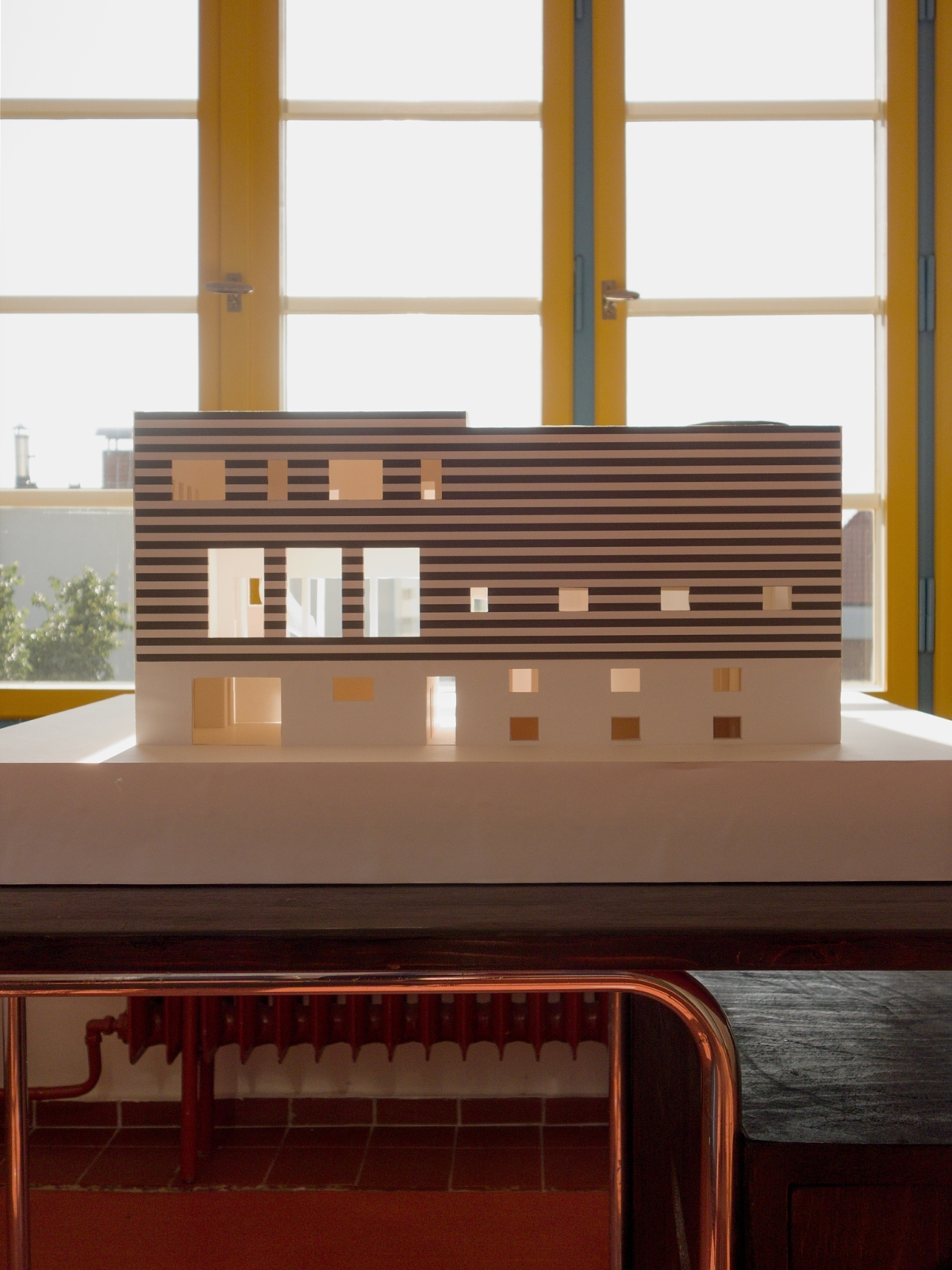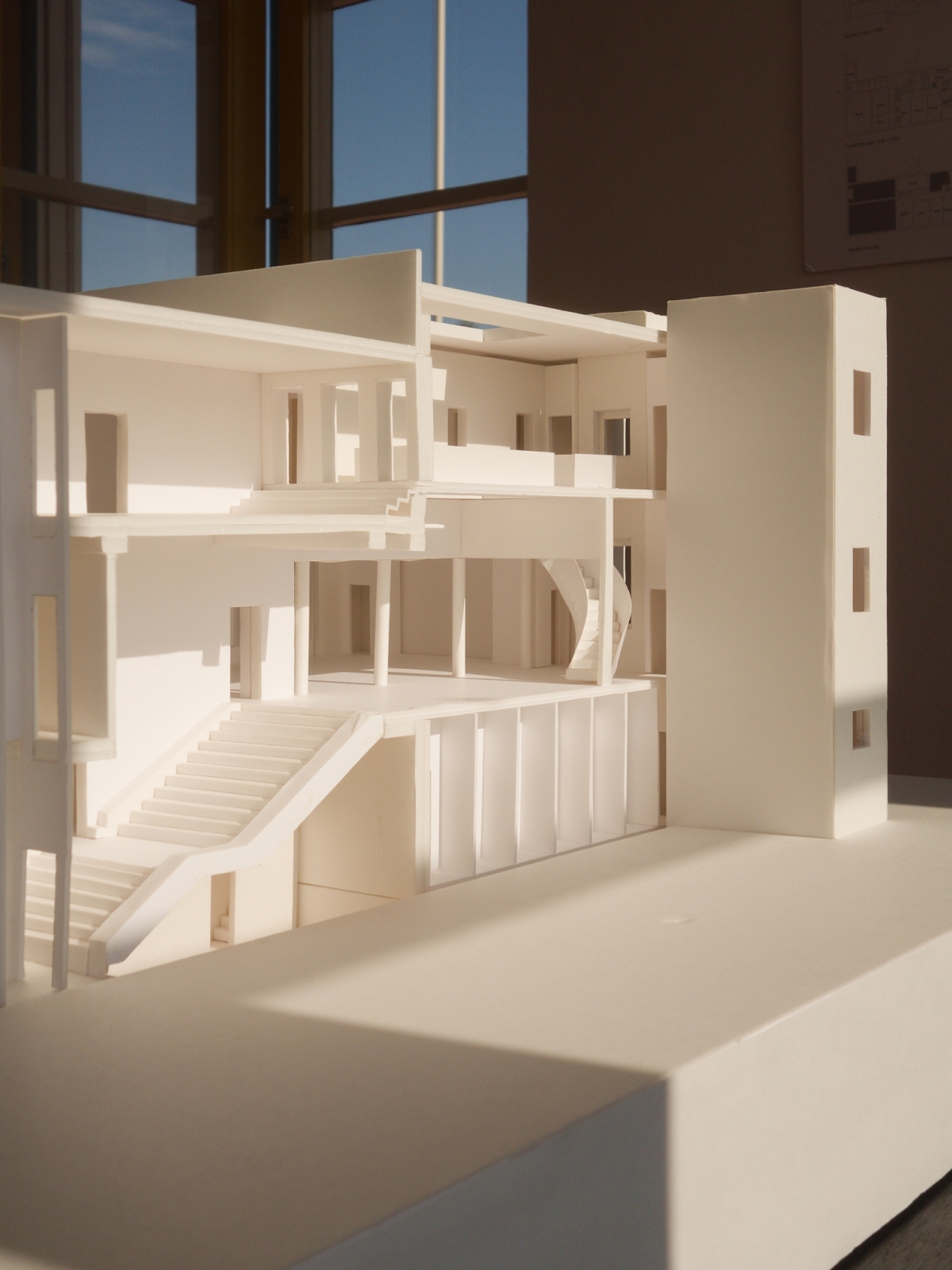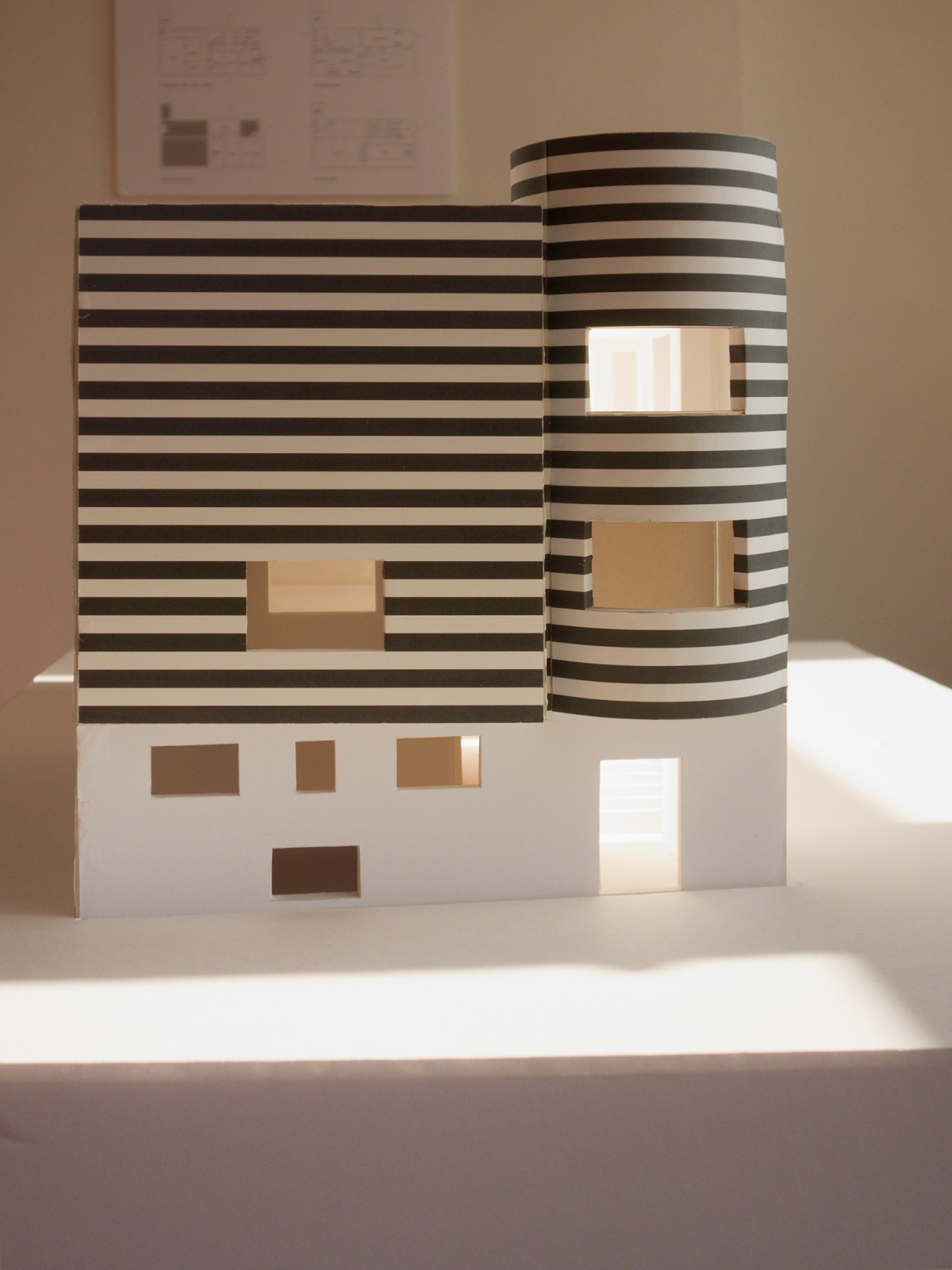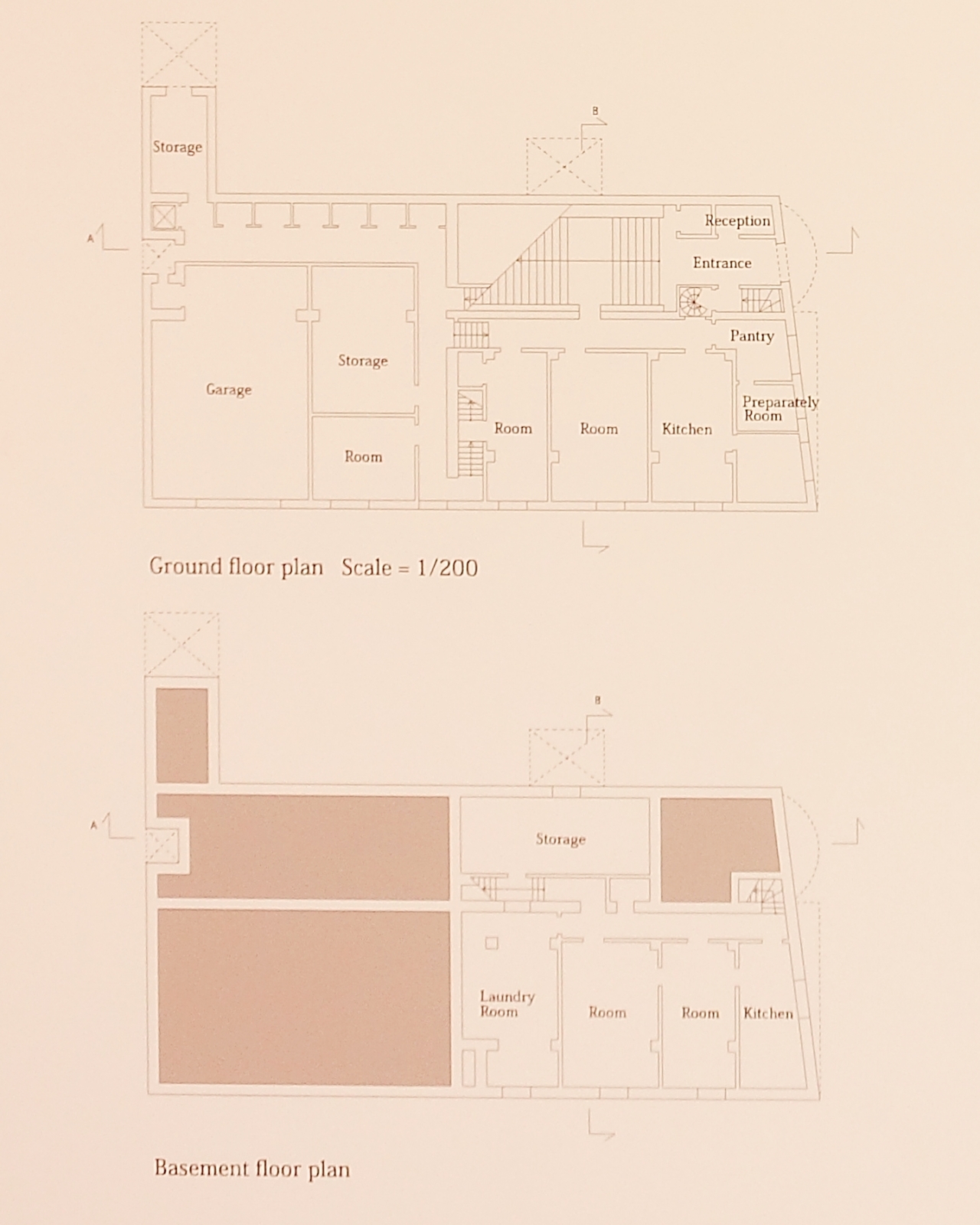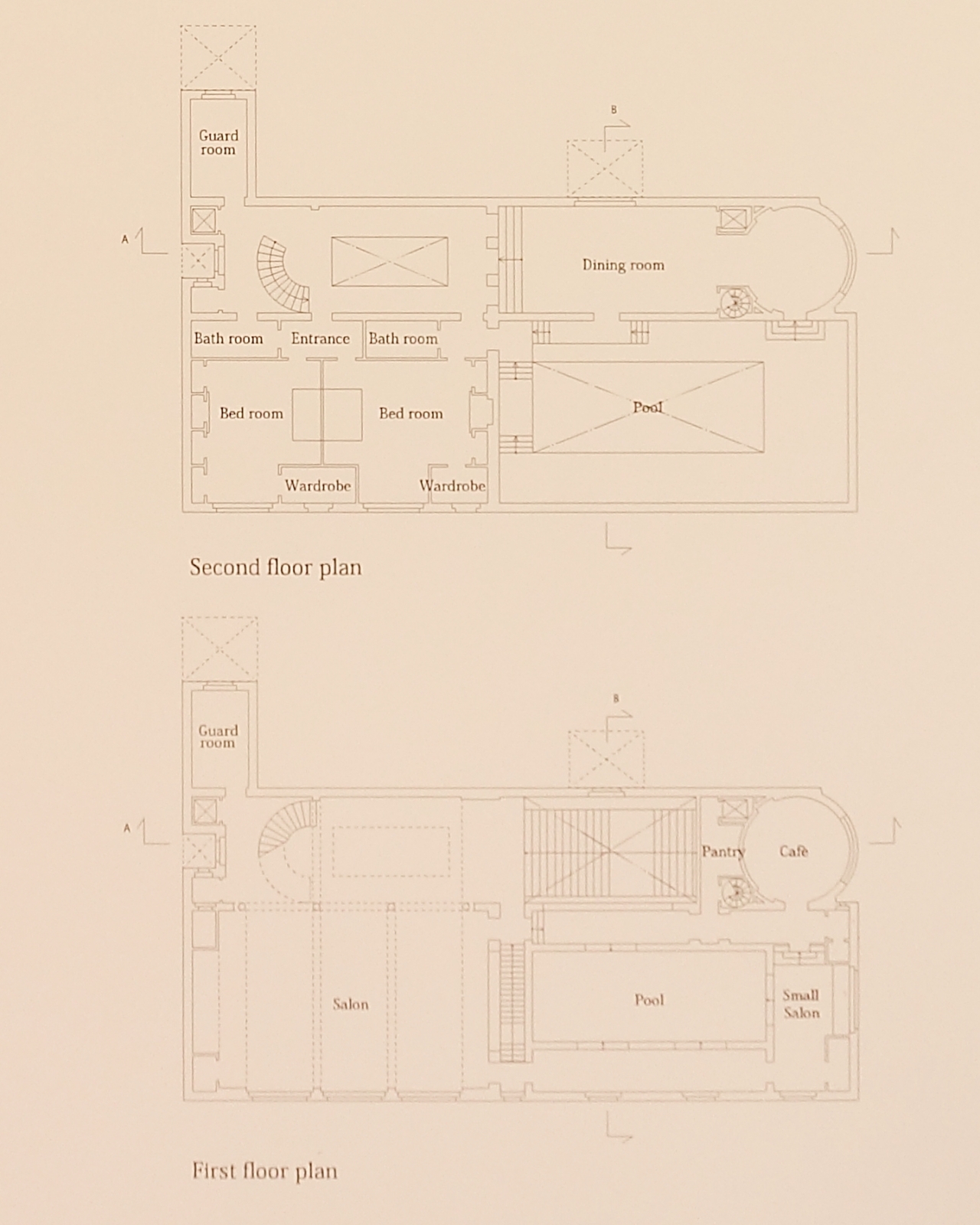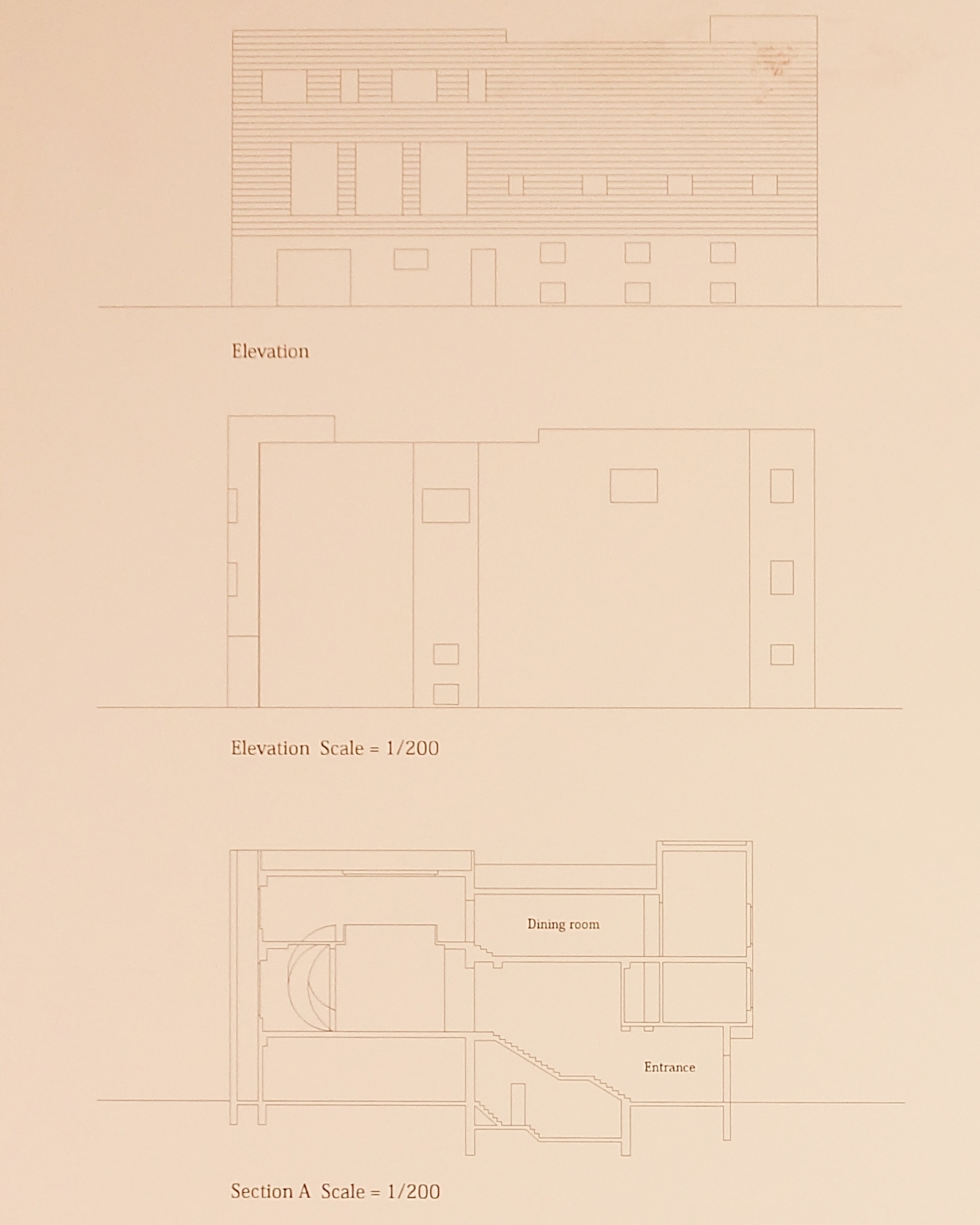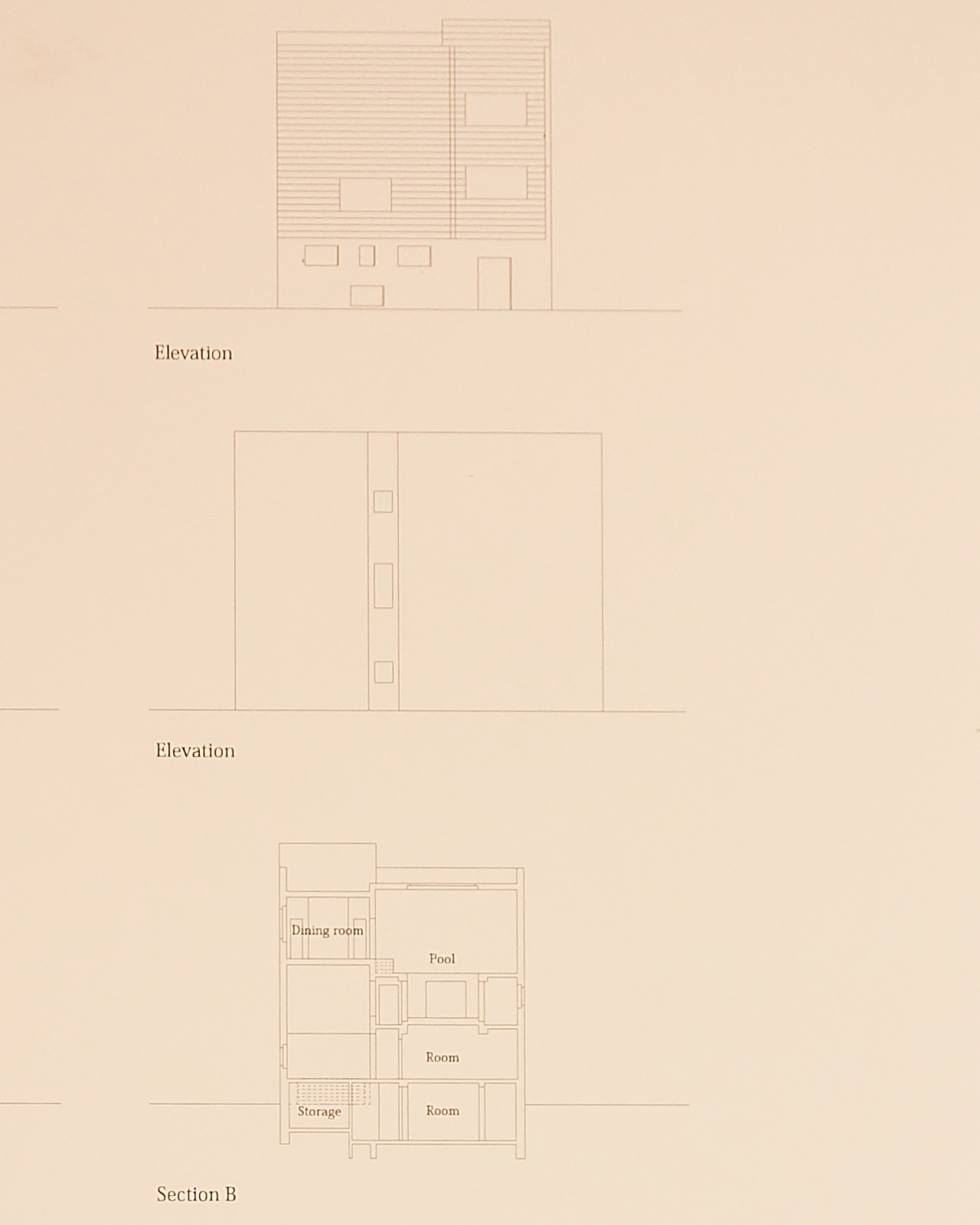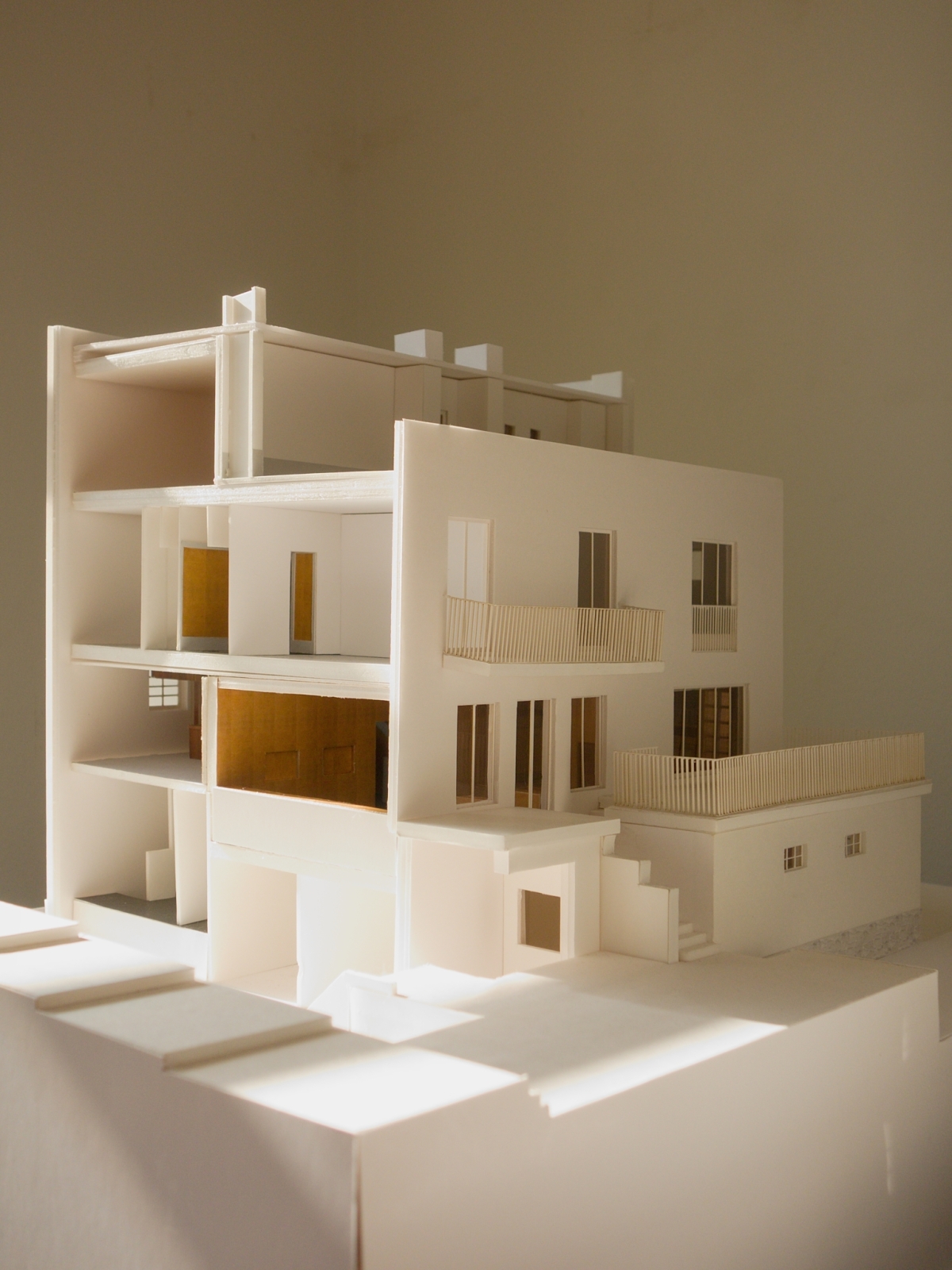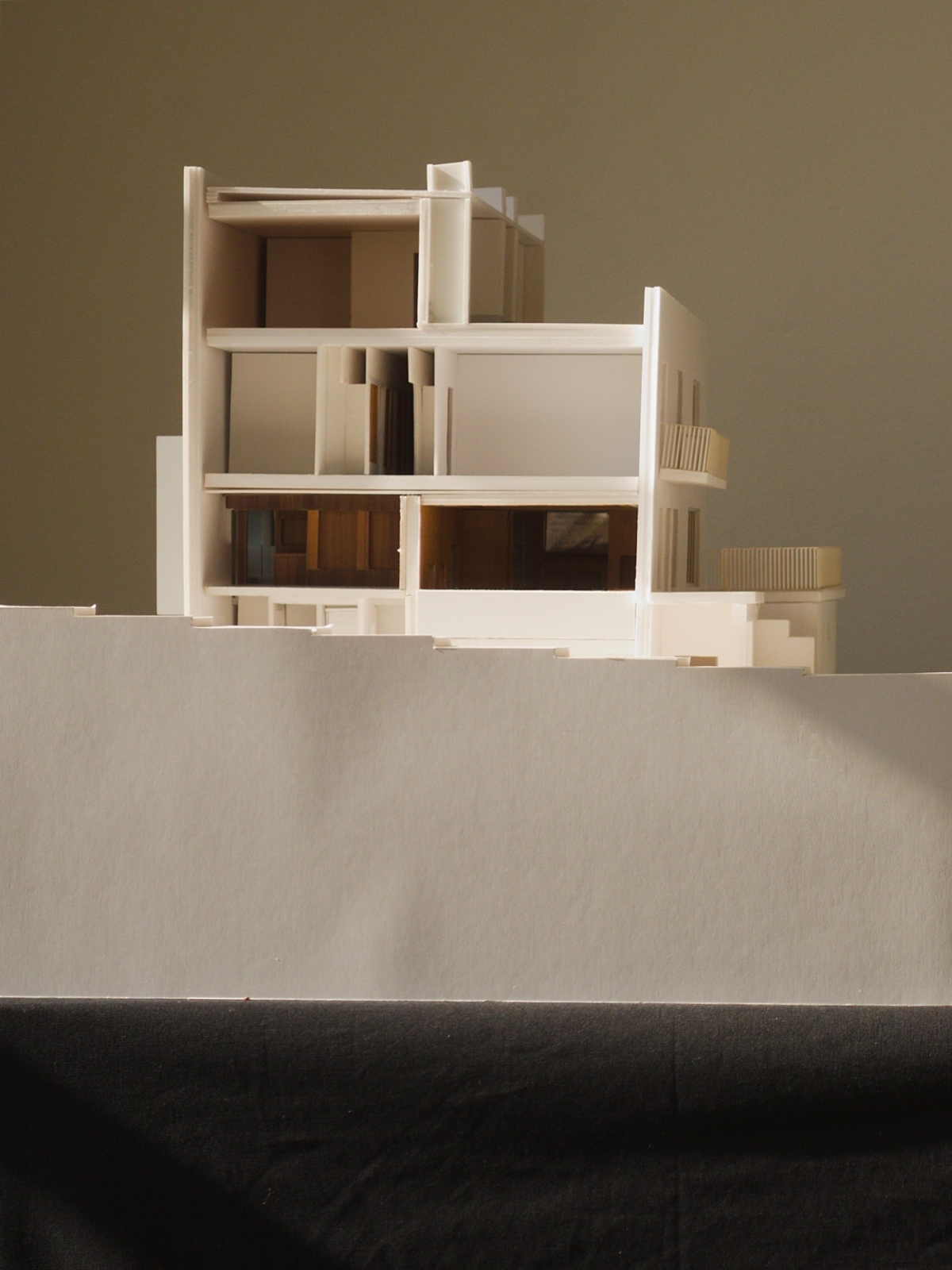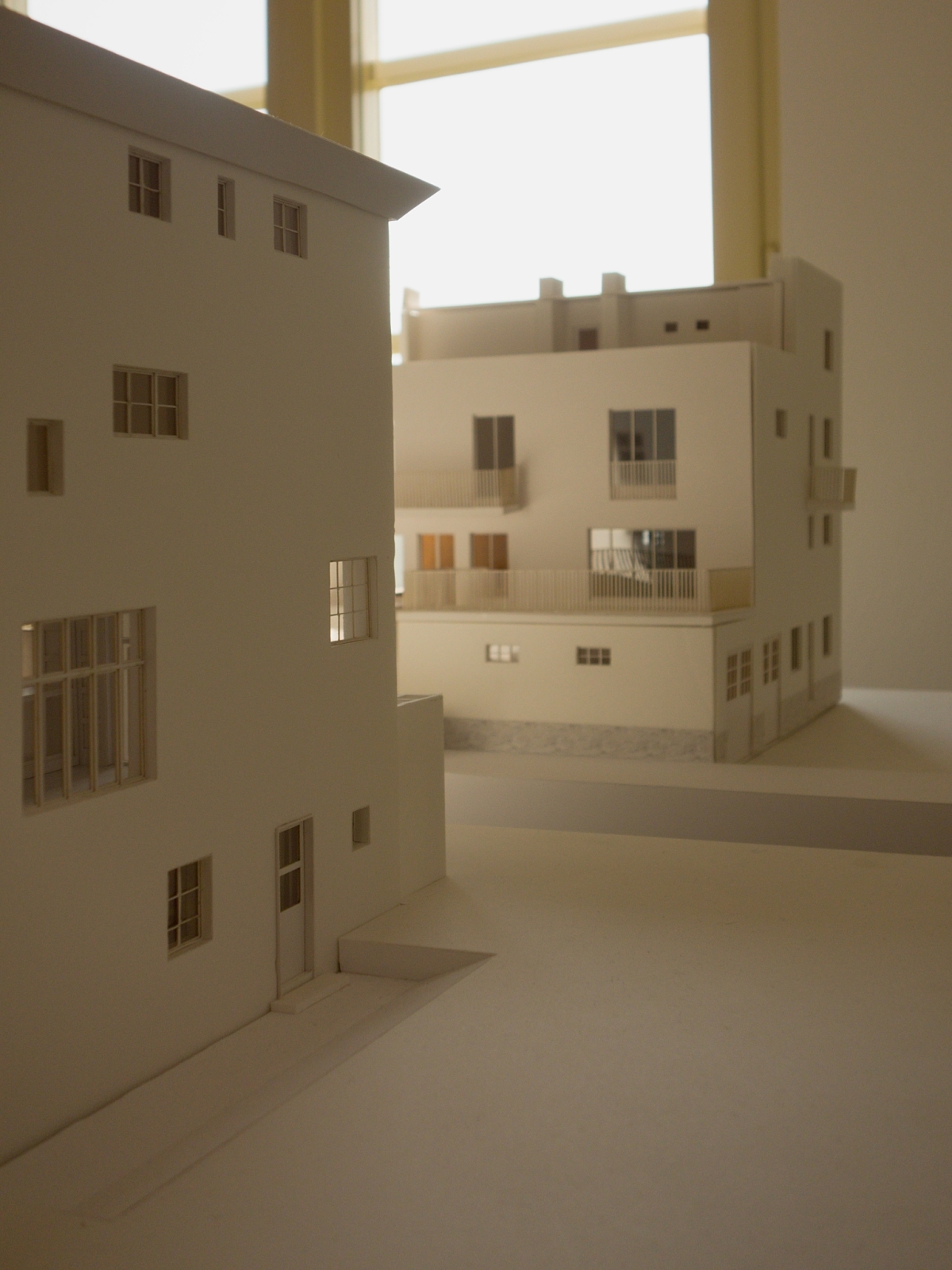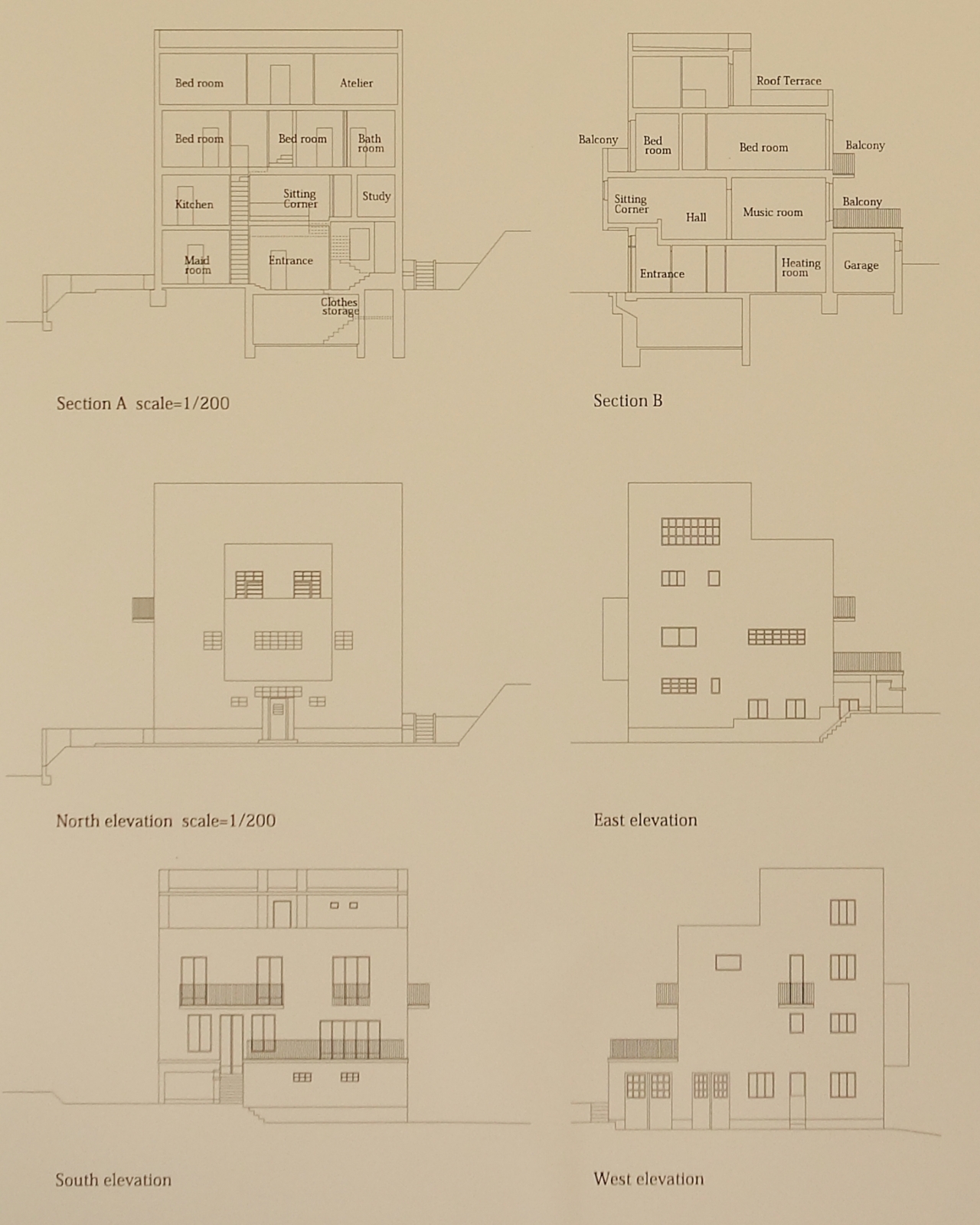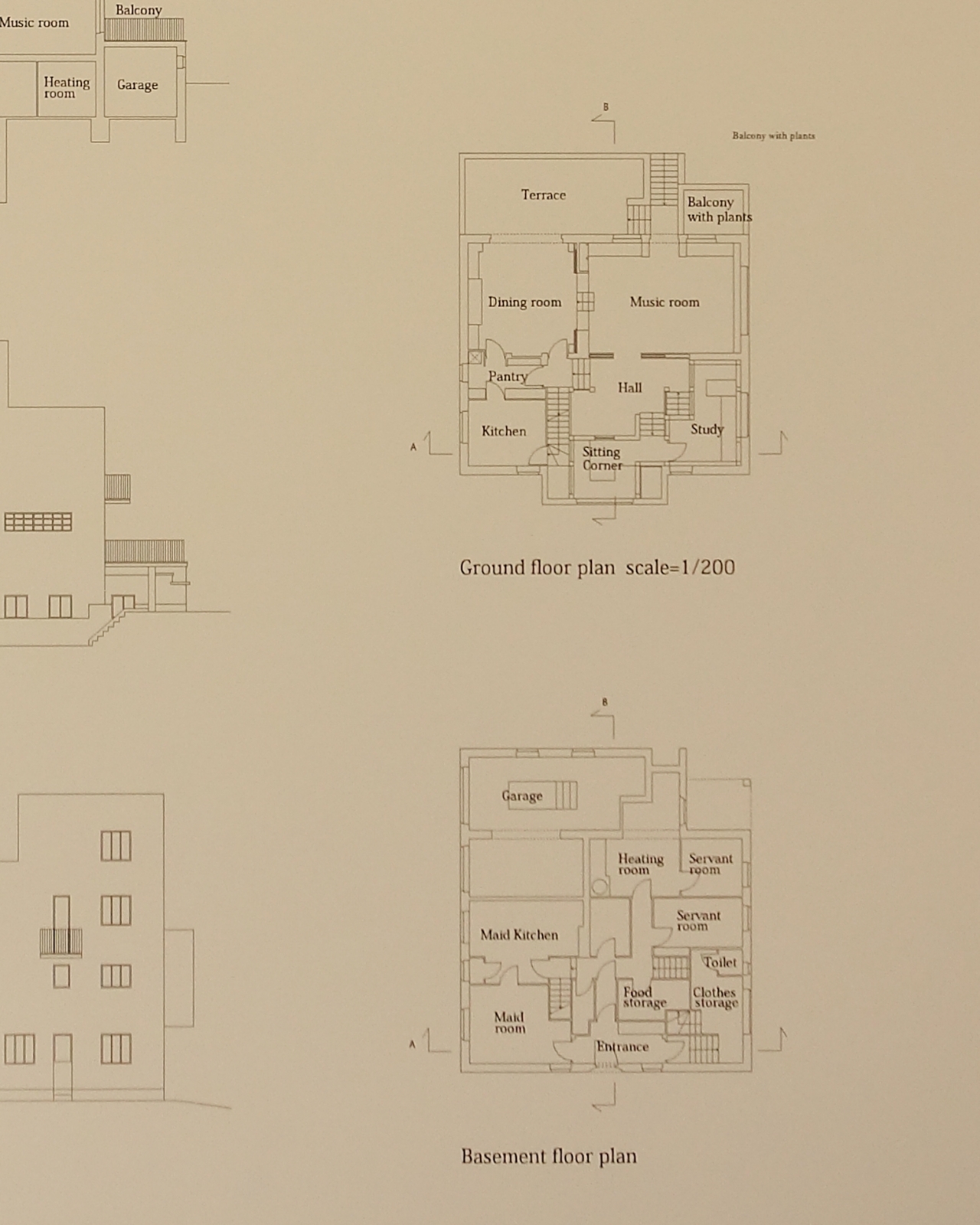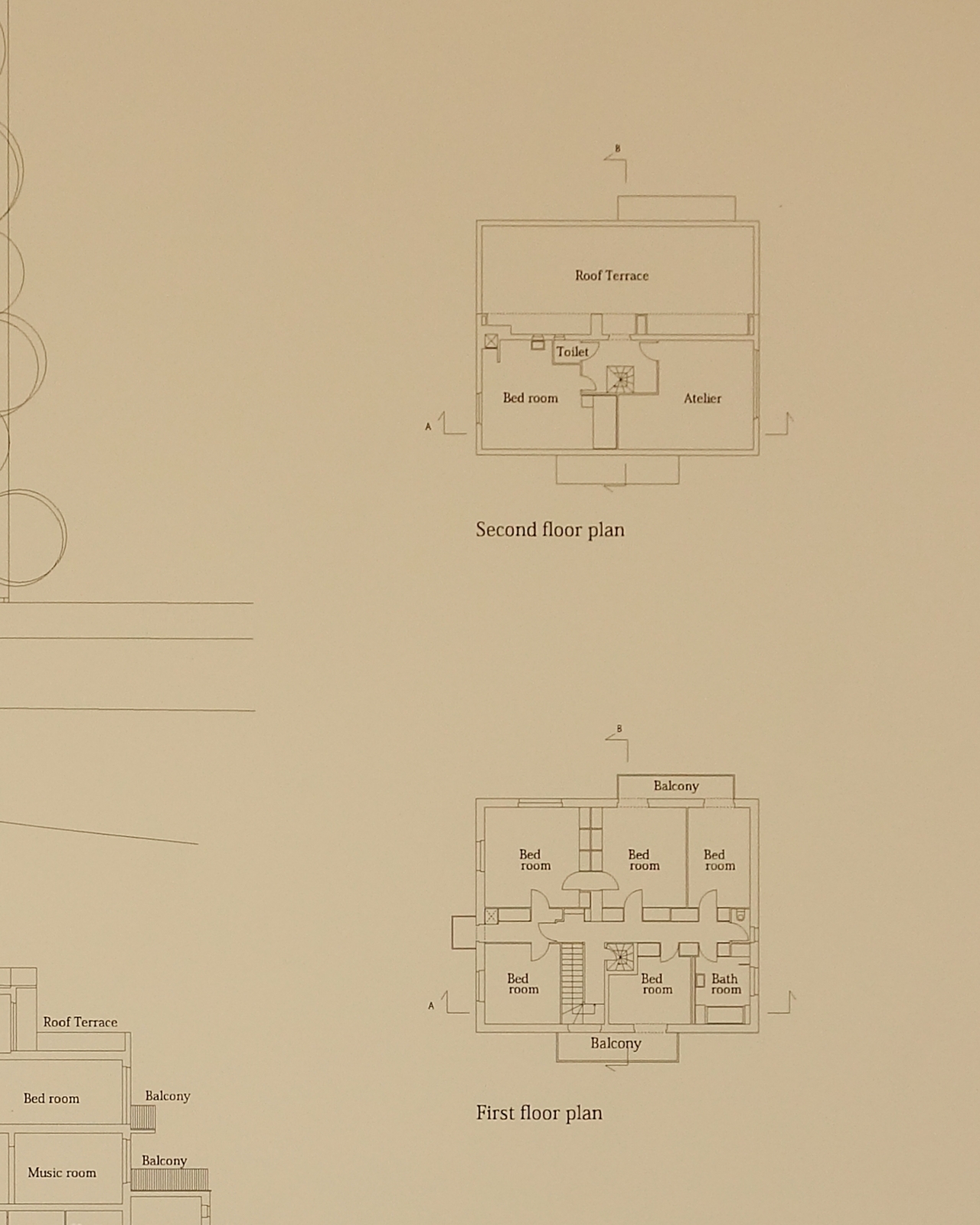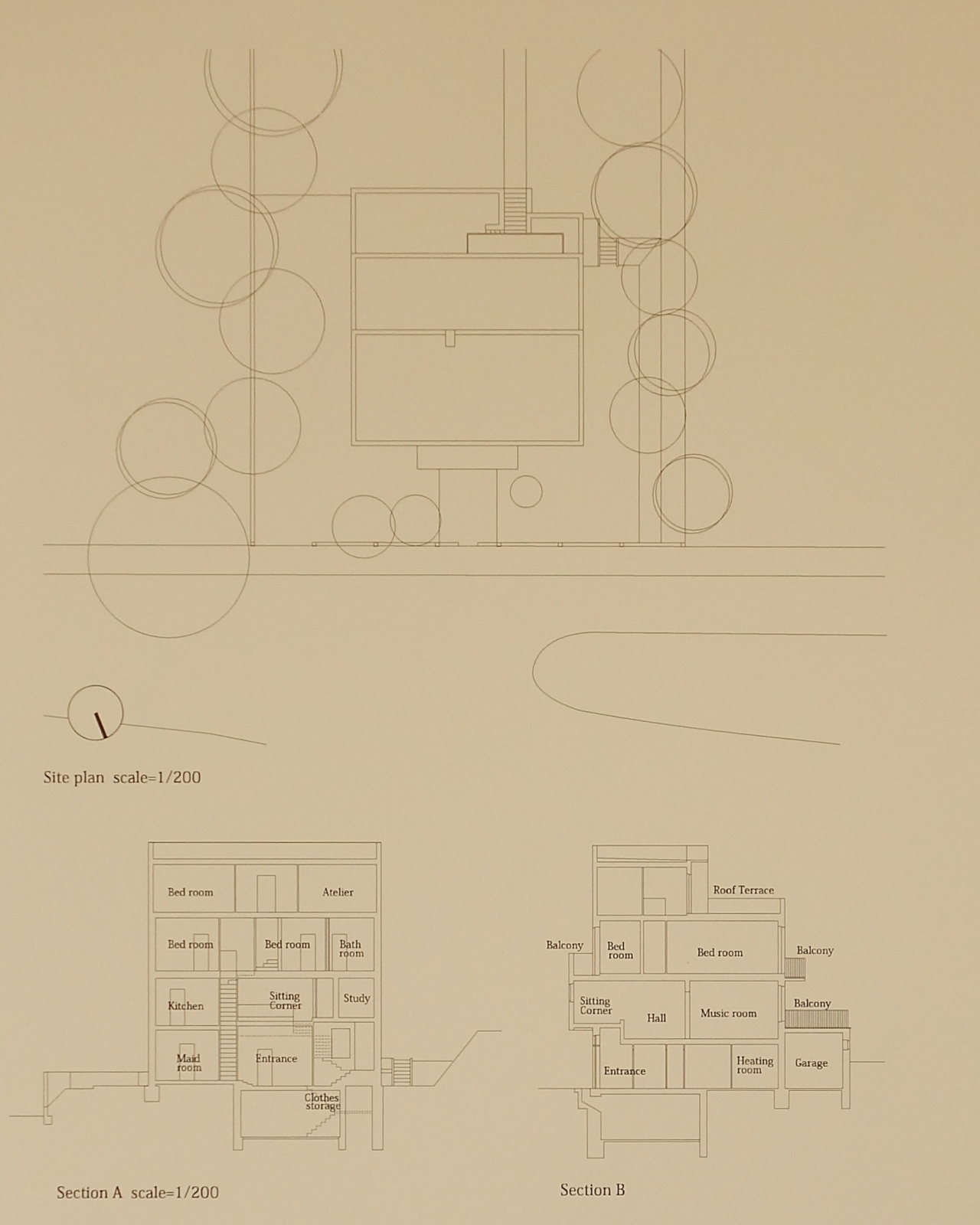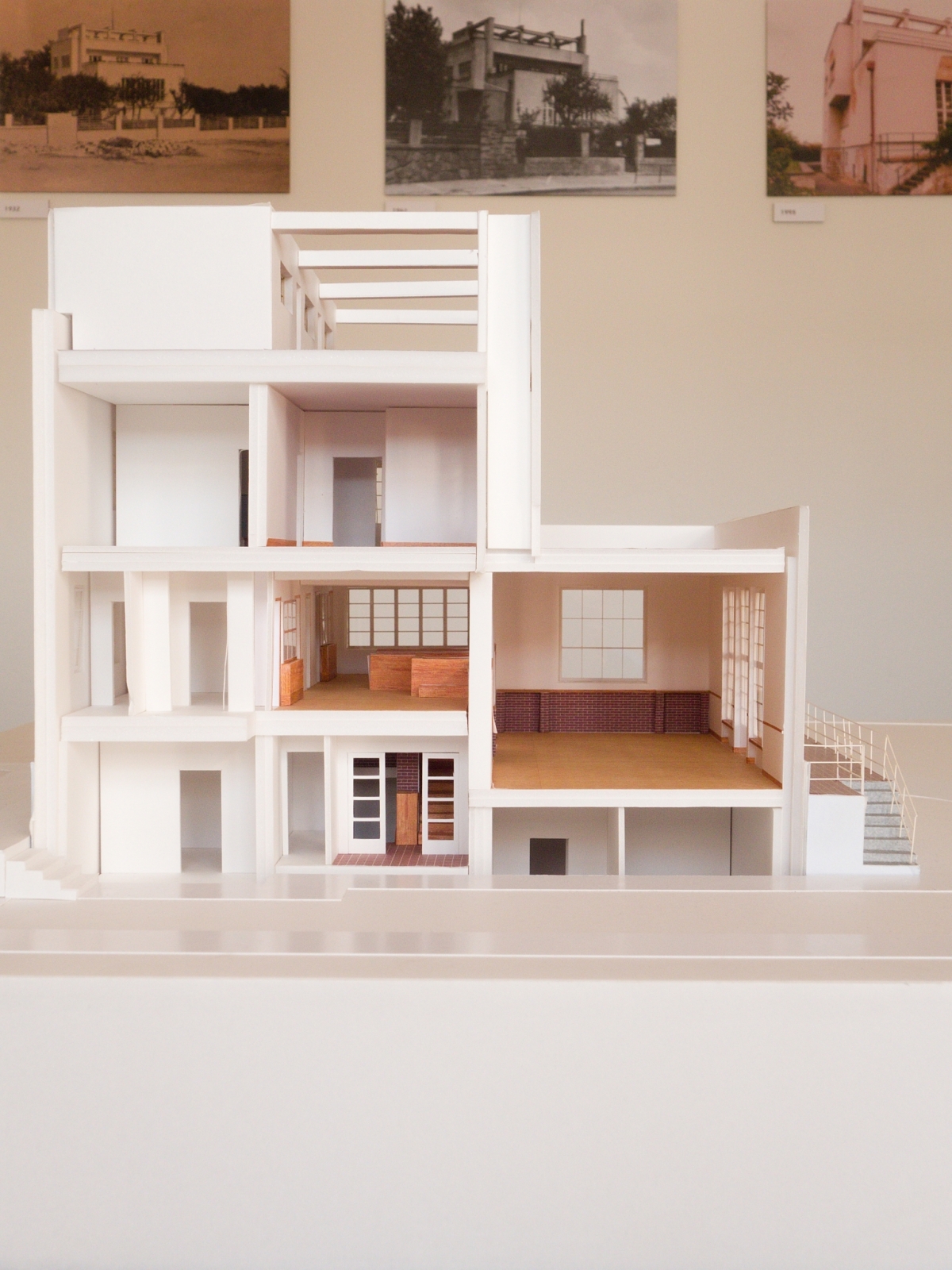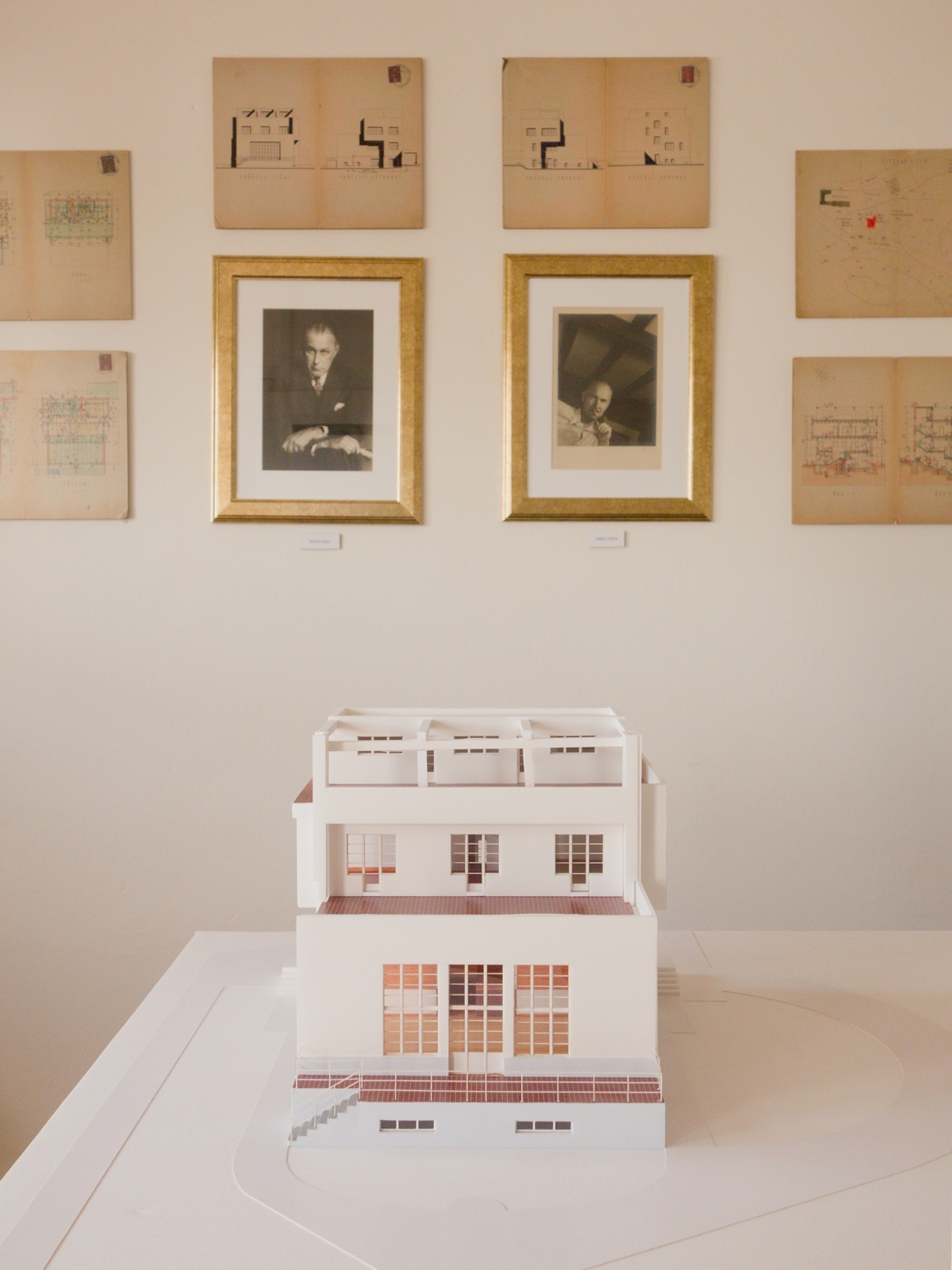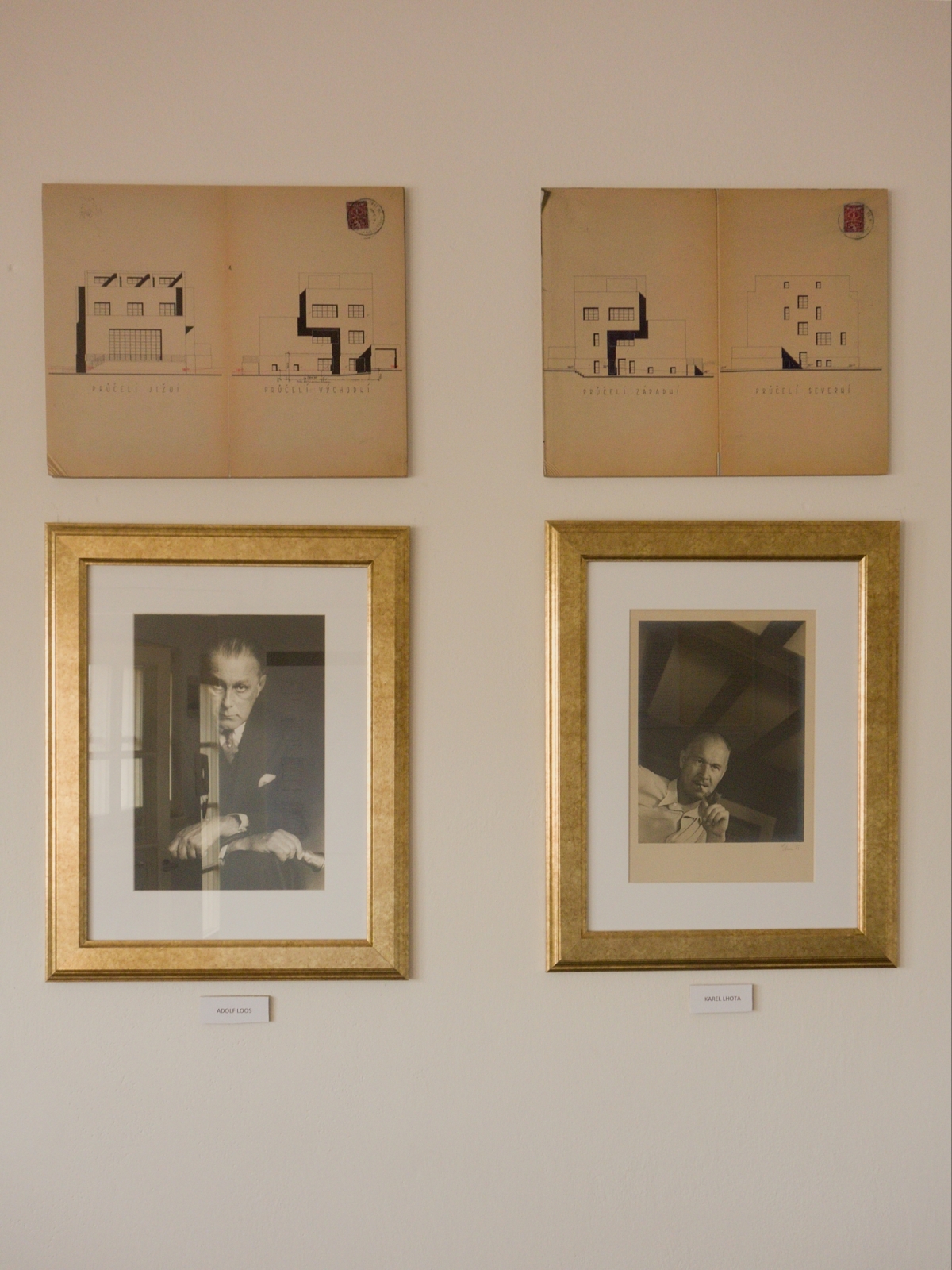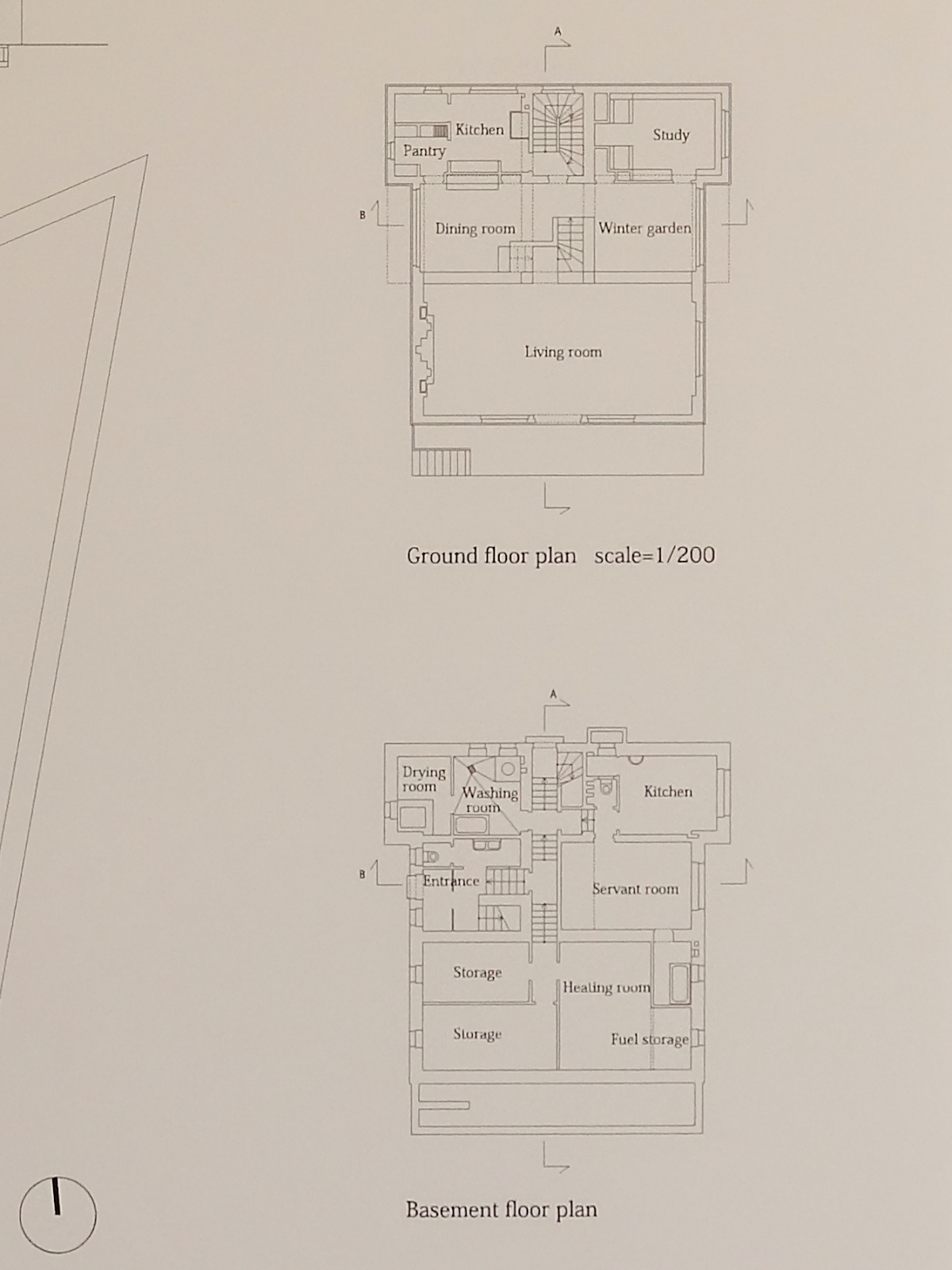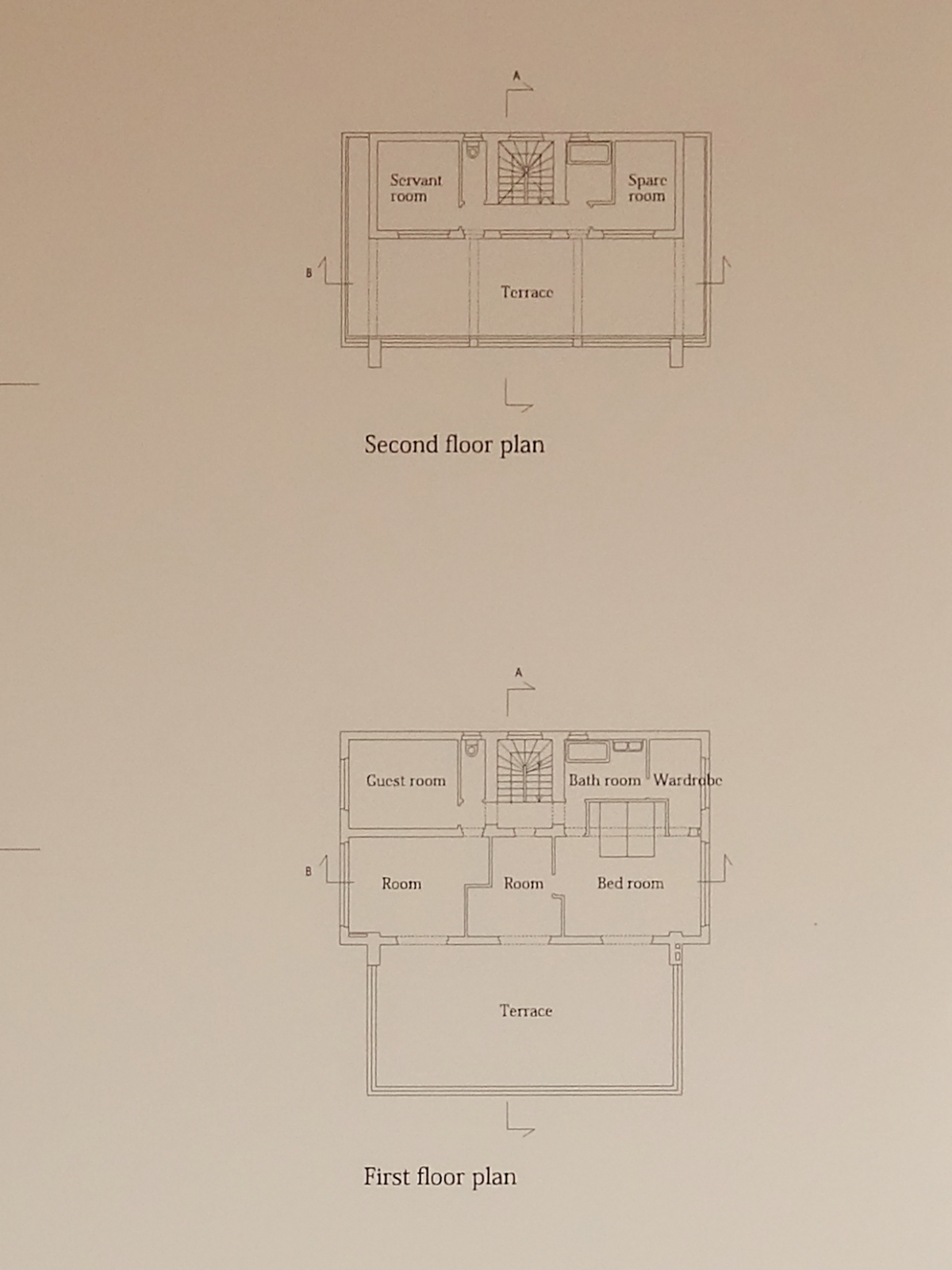Japanese professor of architecture Yoshio Sakurai has over the past twelve years visited every building ever realised by Adolf Loos , the Brno-born pioneer of European Modern architecture in the early 20th century. A sketchbook and camera in hand, Prof. Sakurai was on a mission that has now been fulfilled: to create exact scale models of Loos’s best works.
The influential architect is especially celebrated for his innovative ways of arranging interior spaces, in what he called a Raumplan, or a spatial plan – a deceptively simple term, describing the considered ordering and size of interiors. It was his way of dividing up rooms and spaces on both horizontal and vertical planes, physically and visually, based on function.
STEINER HOUSE, 1910
The Steiner House built in Vienna, initiated a series of houses in which Loos gradually evolved his conception of Raumplan or 'plan of volumes', that culminated in the split-level houses realized towards the end of his life: the Moller House in Vienna and the Muller House near Prague.
It's important to note that the urban plan for the area only contemplated the construction of one floor and an attic. The clients demanded a large house and Loos knew how to solve the problem; the main facade has a sheet metal roof in the form of a half vault that apparently would be the attic.
By the time of Steiner House, Adolf Loos had already arrived at the highly abstract external idiom - his white unadorned prism, which anticipated by at least eight years the so-called International Style.
SCHEU HOUSE, 1913
The house was built between 1912-1913 in Viennese Hietzing near the Steiner House (1910) for Dr. Gustav Scheu and his wife Helen. The client has acquired a unique terraced house, something unseen in Central Europe at the time. Loos repeated the terraced principle in other future projects, e.g. in the case of Villa Winternitz (1932).
Loos applied the principle of terracing on the idea of allowing the residents of the house to gain access to the exterior from any of the bedrooms as a symbol of personal freedom. Providing the feeling for the people of being outdoors reflects the increasing body and health care awareness of the new avant-garde bourgeois at the time.
BAUER HOUSE, 1918
This house built in Hrušovany near Brno for Viktor Bauer, director of the sugar refinery, will be considered as an experimental stage of Loos's architectural work. This is for two reasons: while the conventional scheme in the distribution of interiors and bilateral symmetry in the design of the facades suggests a return to the classic style forgetting the previous innovative approach, the house also includes certain architectural elements which are present in architect's future works.
These elements include inserted portico leading to the central entrance hall that will be seen again in houses such as the Villa Rufer (1922) or the Tzara House (1926), the terraces that form the prism cuts, an idea that was taken by Loos from the Mediterranean culture in the early 1910s, or the block of the parapet of the stairs that overlooked the garden reminiscent of those designed for Villa Scheu (1912).
RUFER HOUSE, 1922
Loos began to elaborate his Raumplan concept in his Rufer House in Vienna, where, in contrast to his later houses, the openings are quite freely disposed, following the free disposition of the internal volumes - an elevational counterpoint that anticipated the canonical works of De Stijl.
Loos's Raumplan reached its apotheosis in his last domestic works, Moller House and Villa Muller of 1928 and 1930. As anticipated in the open stair hall of the Rufer House, both these works are organized about displacements in the respective levels of their principal floors, elisions that serve not only to create spatial movement but also to differentiate one living area from the next.
VILLA MOISSI, 1923
The typological issue posited by Loos was how to combine the propriety of Platonic mass with the convenience of irregular volume. This proposition was never more lyrically stated than in his 1923 project for a villa for Austrian stage actor Alexander Moissi on the Lido in Venice; and this (not built) house was destined to become the type-form for Le Corbusier’s canonical Purist villa, his villa at Garches of 1927.
Above all, Loos must now be seen as the first to postulate the problem that Le Corbusier was eventually to resolve with his full development of the free plan.
TZARA HOUSE, 1926
When in 1923 Loos was invited to participate in the Salon d'Automne, the architect made himself known in the avant-garde scene of Paris. This event had contributed that two years later, Tristan Tzara commissioned Loos the project of his house. For this project Loos points out to Tzara's phrase: "Art is a continuous procession of differences." Three levels of expression that reaffirm this phrase can be observed in the design of the house: the main facade, the articulation of the interior space and the other three facades.
While the main facade has a solid body, coordinated in all parts and marked by a symmetrical division into two equal parts with different finishes, and by a dimensional variation of gaps that creates a game between horizontal and vertical, the other three facades represent a 'collage' of unequal parts, with no apparent relationship between the elements that compose them.
BAKER HOUSE, 1927
It is one of the paradoxes of Loos's career that he, the bourgeois architect and man of taste, should create his most sensitive larger projects in the service of the underprivileged. During his tenure as chief architect to the Housing Department of Vienna, from 1920 to 1922, Loos applied his yet undeveloped Raumplan to the problem of mass housing.
Loos's disillusioned resignation as housing architect in 1922 and his subsequent migration to Paris, at the invitation of the Dadaist poet Tristan Tzara - for whom he was to design a house in 1926 - restored him to the cosmopolitan circles of the high bourgeoisie. There he became a part of the fashionable world that surrounded the dancer Josephine Baker, for whom he designed a rather ostentatious villa in 1927. The villa was not built, as many other large-scale projects designed for his Parisian patrons during his expatriate years.
VILLA MOLLER, 1928
This is the first purely Loosian house, harboring the ideas of Raumplan in every way. Villa Moller built in Vienna surprises at first sight, given it can be seen as an architecture with classical essence due to the pure symmetry of the main facade; however, Adolf Loos, again, creates a clear differentiation between the exterior and the interior of the house.
While all the facades are practically bare stucco walls, the garden facade differs from the main one by its staggered terraces and the asymmetry through gaps. The structural scheme of perimeter load-bearing walls with a pillar and a central chimney reminds of the one used in the Rufer House (1922), as well as the one subsequently used in Villa Muller (1930), and this is what gives Loos spatial freedom in the interior.
VILLA WINTERNITZ, 1932
The villa for Prague’s lawyer Josef Winternitz was the last built house whose completion Loos experienced. Although, as publicly stated by the architect during an interview in 1930 in Plzeň, Villa Muller (1930) represents the first place in the baseline of his architectural thinking, Villa Winternitz can be classified as a perfect and well-preserved example of architect’s matured work.
The Villa features all the most relevant and time-proven approaches and elements of Loos architectural language, put together in a harmonious and balanced way including the unadorned external prism, clean simplicity of interiors, the terracing principle, and of course, the extraordinary spatial experience provided by the Raumplan.

